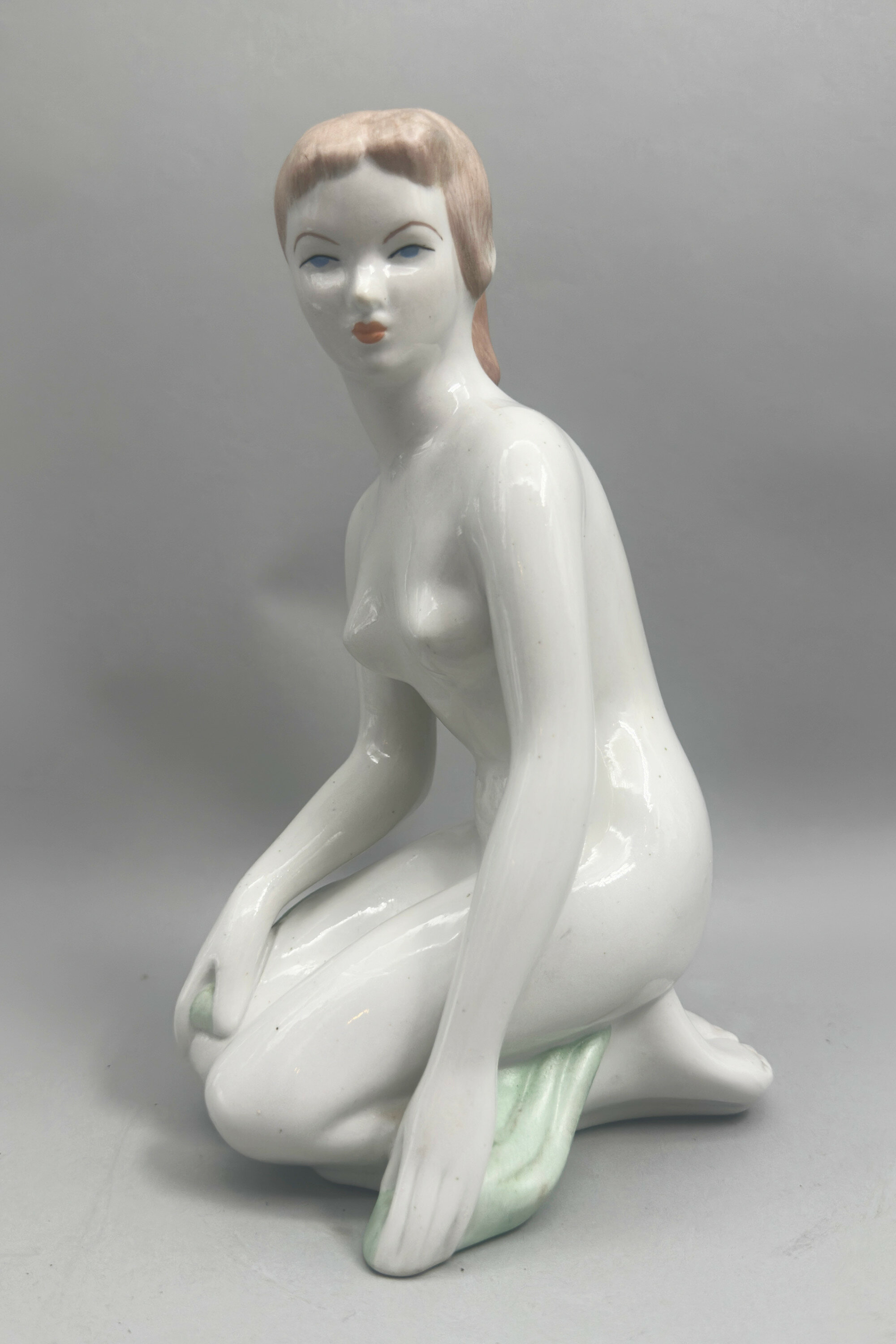
Art Deco style kneeling figure of a Girl, Aquincum Hungary, second half C20th
Price: £75Aquincus was an ancient Roman settlement, eventually to become the town Obuda, the third of the three cities which were merged to form Budapest and the oldest district in the Hungarian capital. In 1854, Hüttl Tivadar set up a shop in Pest selling porcelain eventually becoming involved in porcelain manufacture itself with such success that by the early 1900s he was supplying the court at Buda, eventually supplanting the rival firm of Herend. Despite legal battles amongst the family concerning the ownership of the business, the firm continued to prosper until the 1950s when the new communist government decided to nationalize the factory, renaming it Aquincum Porcelángyár. Tableware, which had been the staple of the Hüttls’ production was replaced by figurines which rapidly enjoyed great popularity. One of the principle artists was Antonia Szabó who became chief designer in 1966. With the end of socialism, the firm went into private hands in 1993 but suffered an immediate and rapid decline causing it to close soon after.
This figure may possibly, then, have been designed by Szabó himself but it is certainly typical of the pieces produced in the early years of state control and perhaps one of the most appealing. The form of the mark corresponds with a dating to the 1950s or 1960s and the piece has both historical associations and considerable decorative appeal.
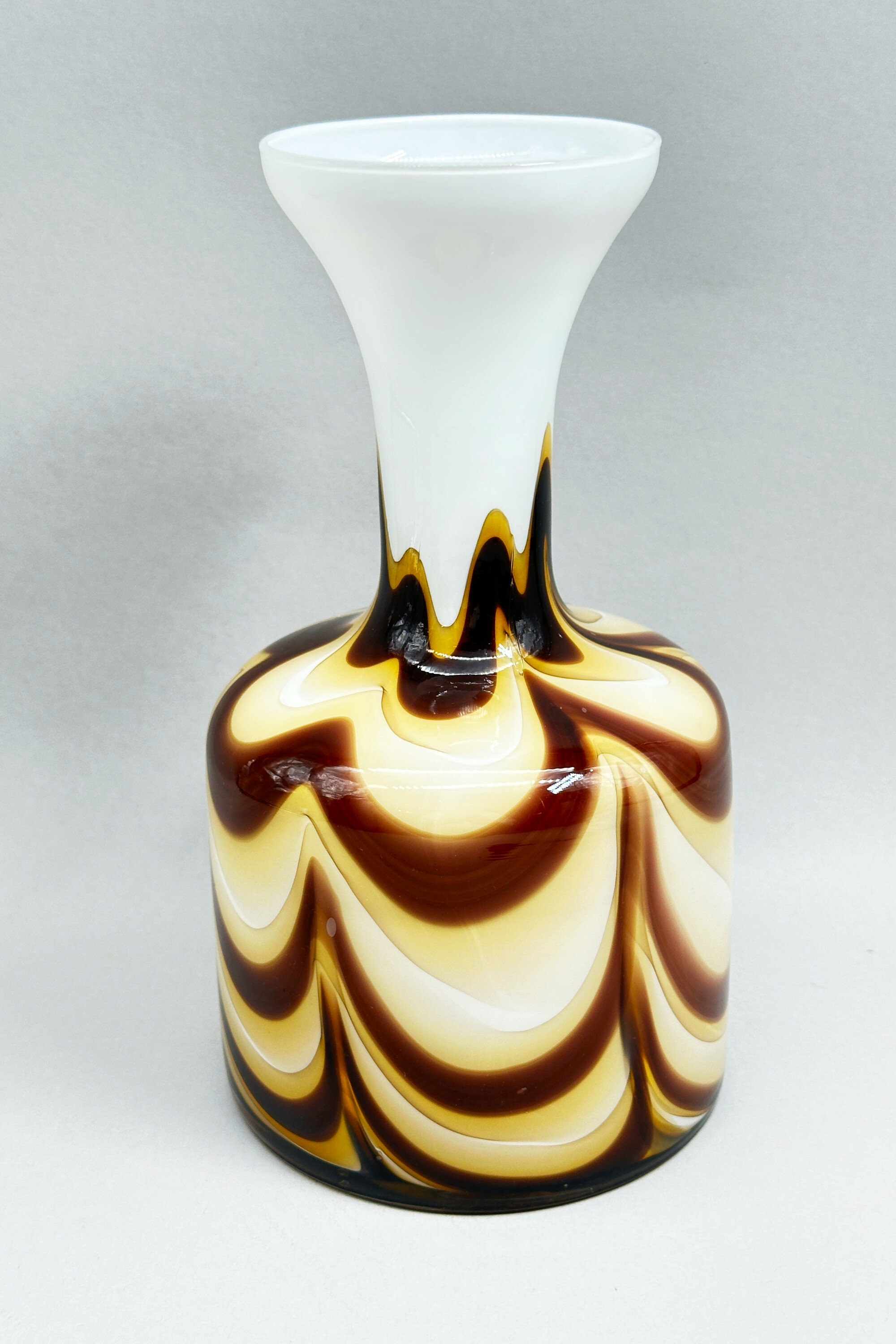
Opaline Art Glass Vase with a marbled design, Vetreria Barbieri, 1970s/1980s
Price: £45
Pair of slender green glass Vases with silver decoration, possibly French early C20th
Price: £45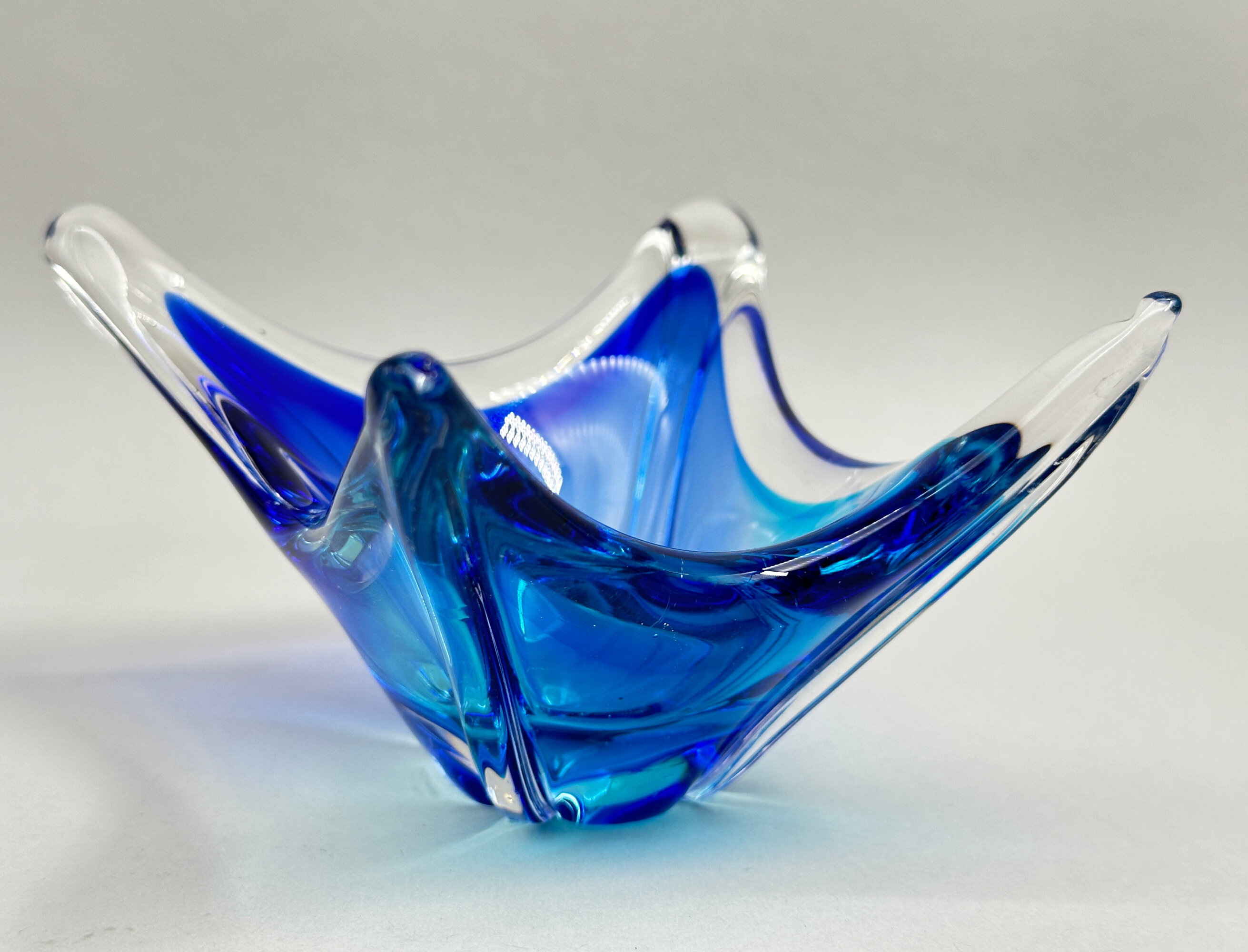
Murano blue glass star shape Bowl, 1960s
Price: £25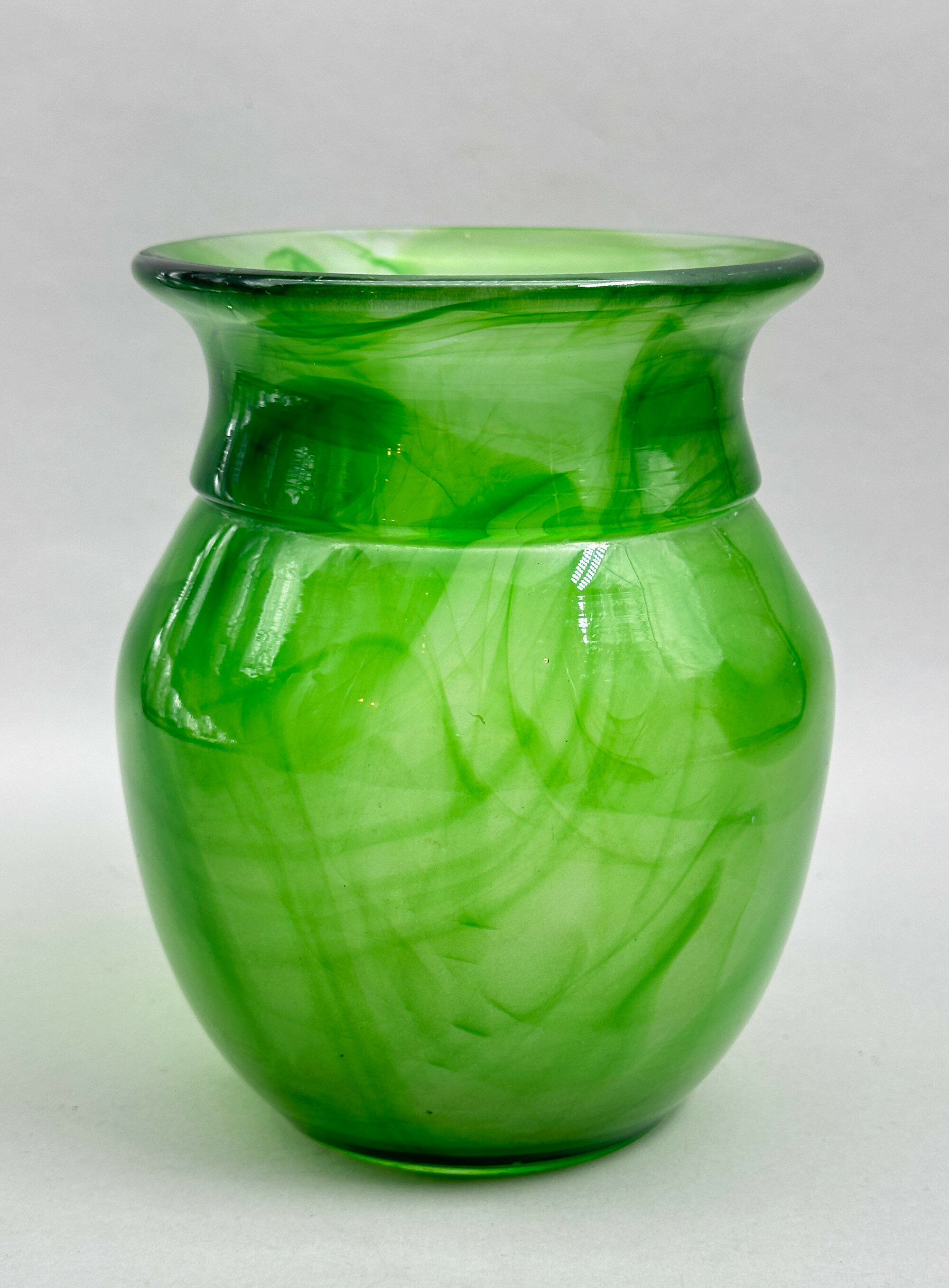
Davidson Green Cloud Glass Vase, 1930s
Price: £55George Davidson founded the Teams Flint Glass Works in 1867, which later became known as George Davidson & Co. In the 1880s the company began producing pressed glass tableware in a variety of shapes and by the 1920s their designs began to reflect the new Art Deco trends. The firm continued production until the 1980s, closing in 1987. This vase is typical of their Art Deco inspired designs although is rather less commonly found today. It has the pattern number '34 'SVF', 'S' standing for 'small', 'V' for 'vase' and 'F' for 'flared rim' and was produced from 1934 to 1942 (see www.cloudglass.com). A slightly larger version was made as well with the pattern number '34' 'VF'. The swirling effect was typical of Davidson's 'cloud glass' designs, one of its most popular ranges. In mint condition, this vase might well fill a gap in a collection of Davidson pieces or pre war British glass generally.

Swedish Kosta Glass Vase designed by Vicke Lindstrand circa 1960
Price: £95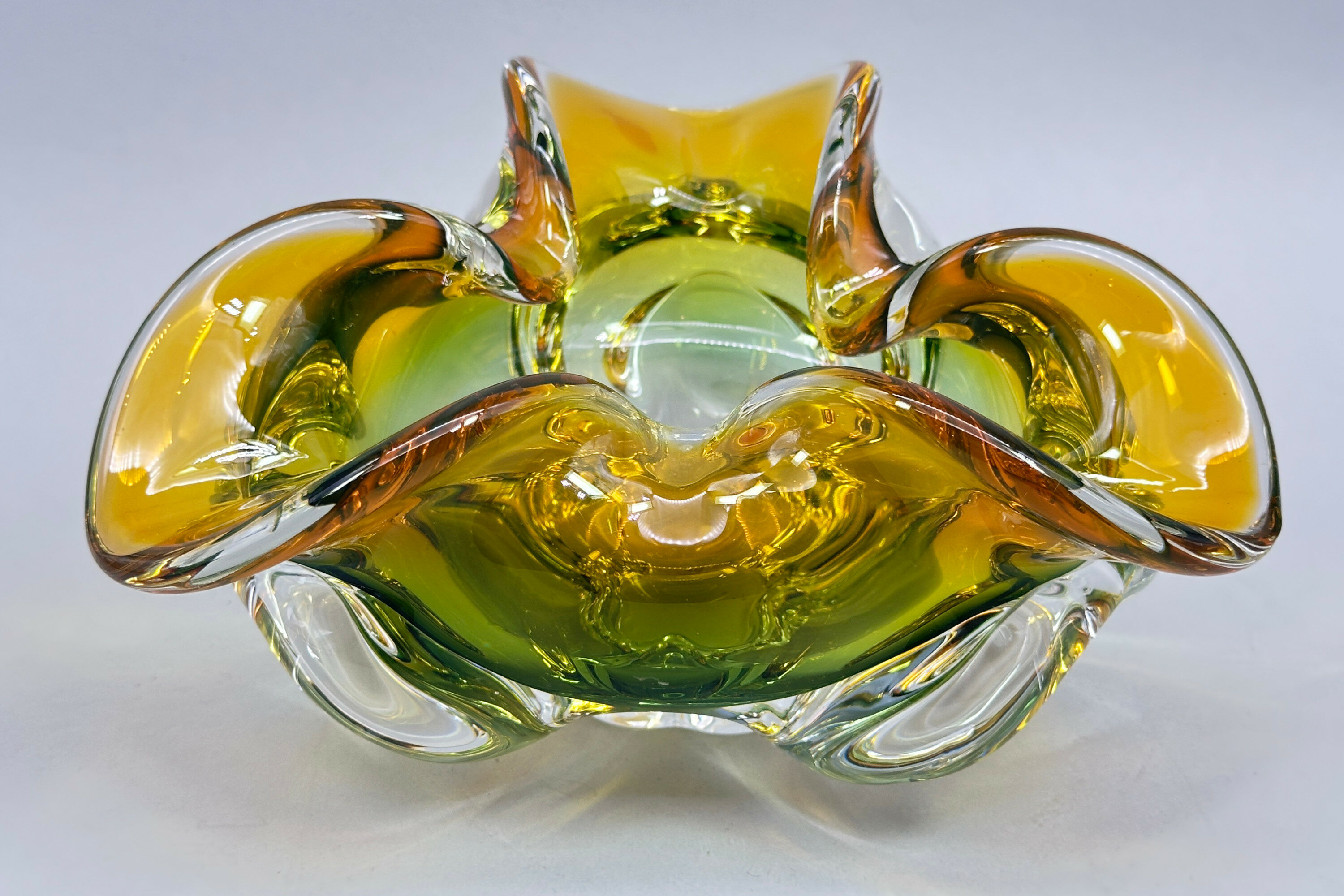
Chřibská Glass bowl designed by Josef Hospodka, Czech 1970s
Price: £75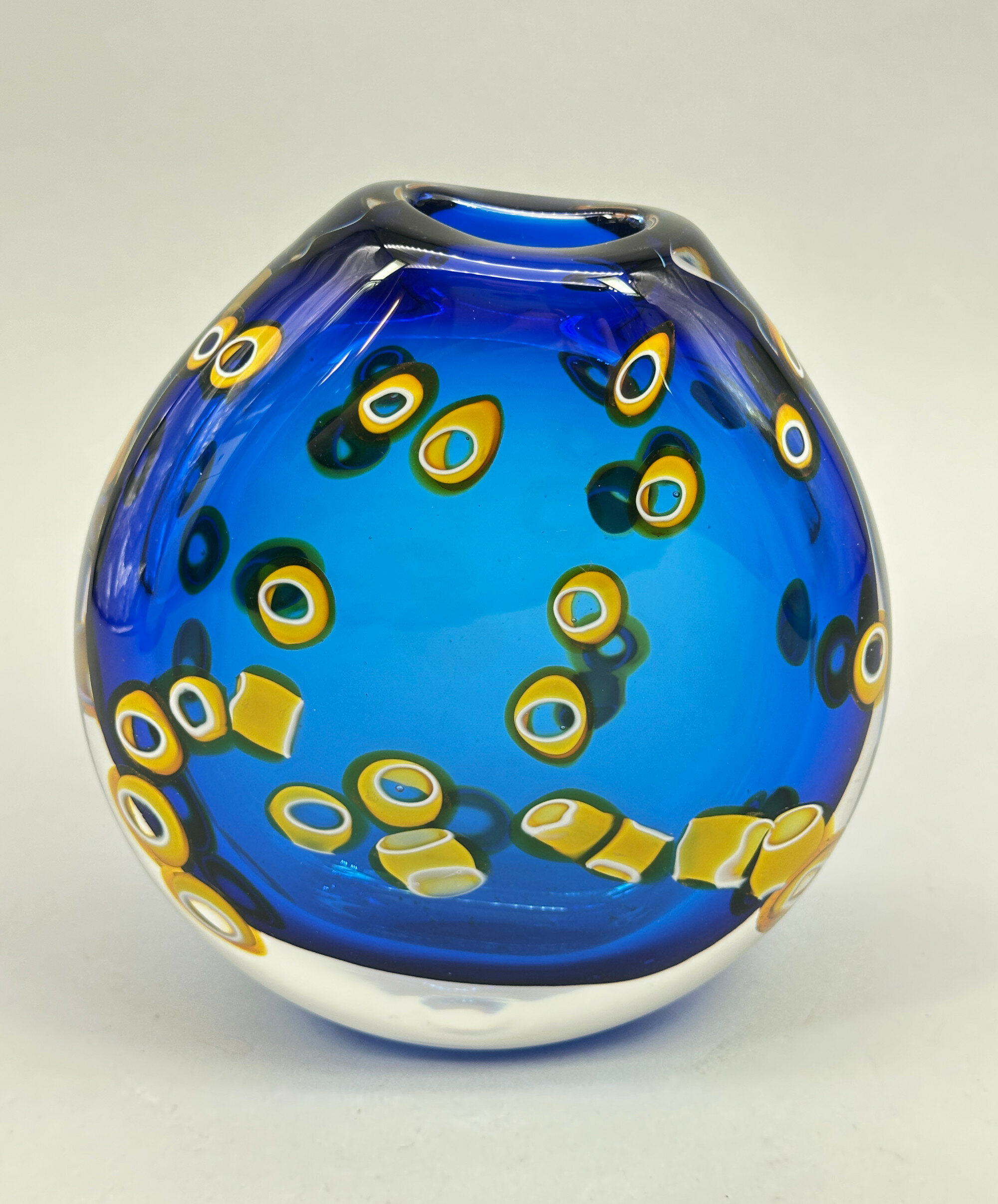
Hula Pattern glass Vase by Bob Crooks, signed by the artist, modern
Price: £110
Art Deco Flower Vase, Frog and Stand, Bagley Glass, Spinette Range, 1930s
Price: £45Bagley Glass was established in Knottingly, England (south east of Leeds) in 1871. Bottle makers at first they branched out in 1912 and opened a department 'The Crystal Glass company' which made crystal and pressed glass. But it was for the latter that Bagley were to become famous and they became the biggest manufacturer of pressed glass in England in the years before and after the war. Many of their designs were influenced by the Art Nouveau styles and this flower vase, unusually presented complete with its frog and stand, is a classic example of their range.
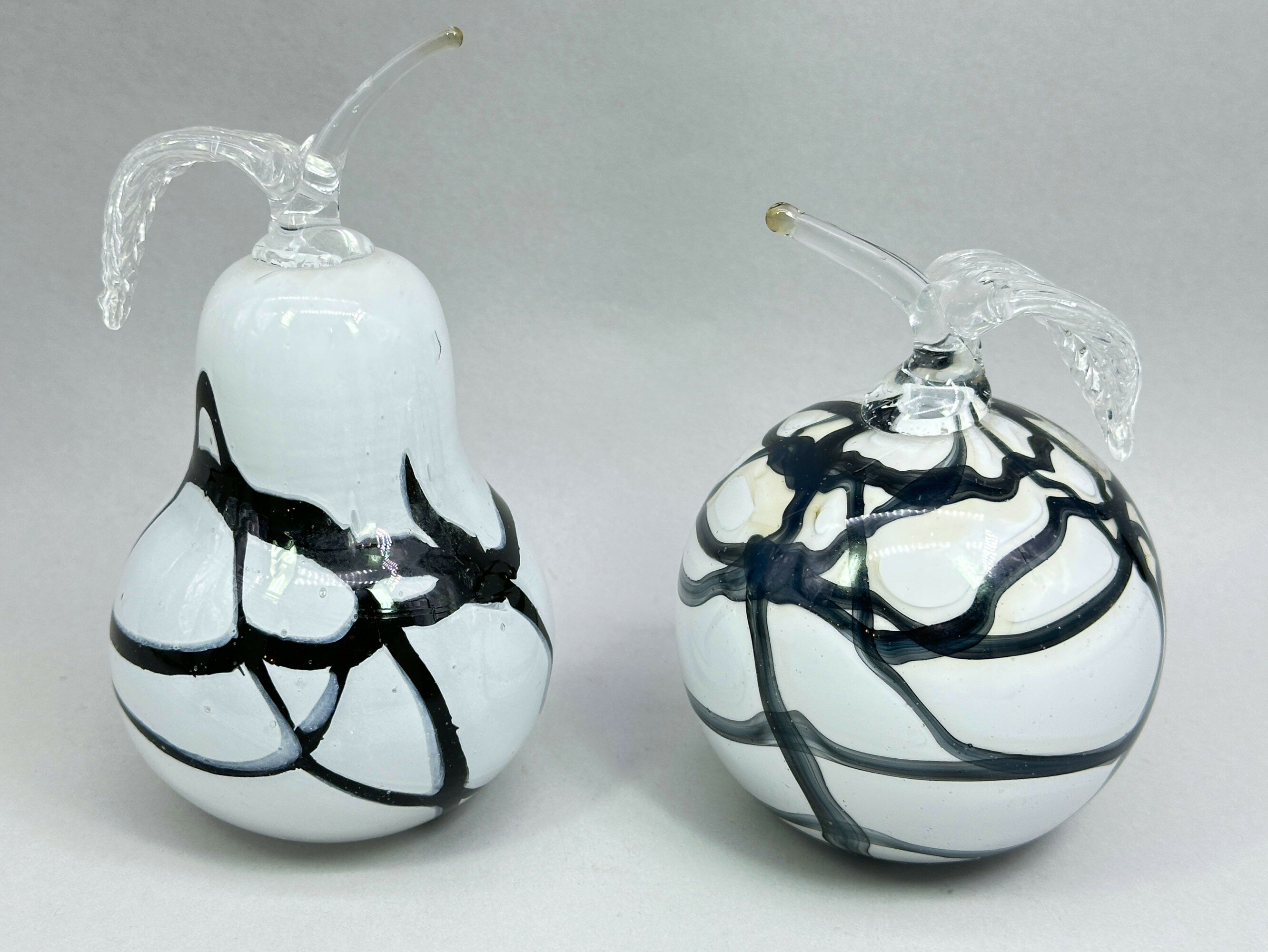
Two Amelia Art Glass Vases, Apple and Pear
Price: £30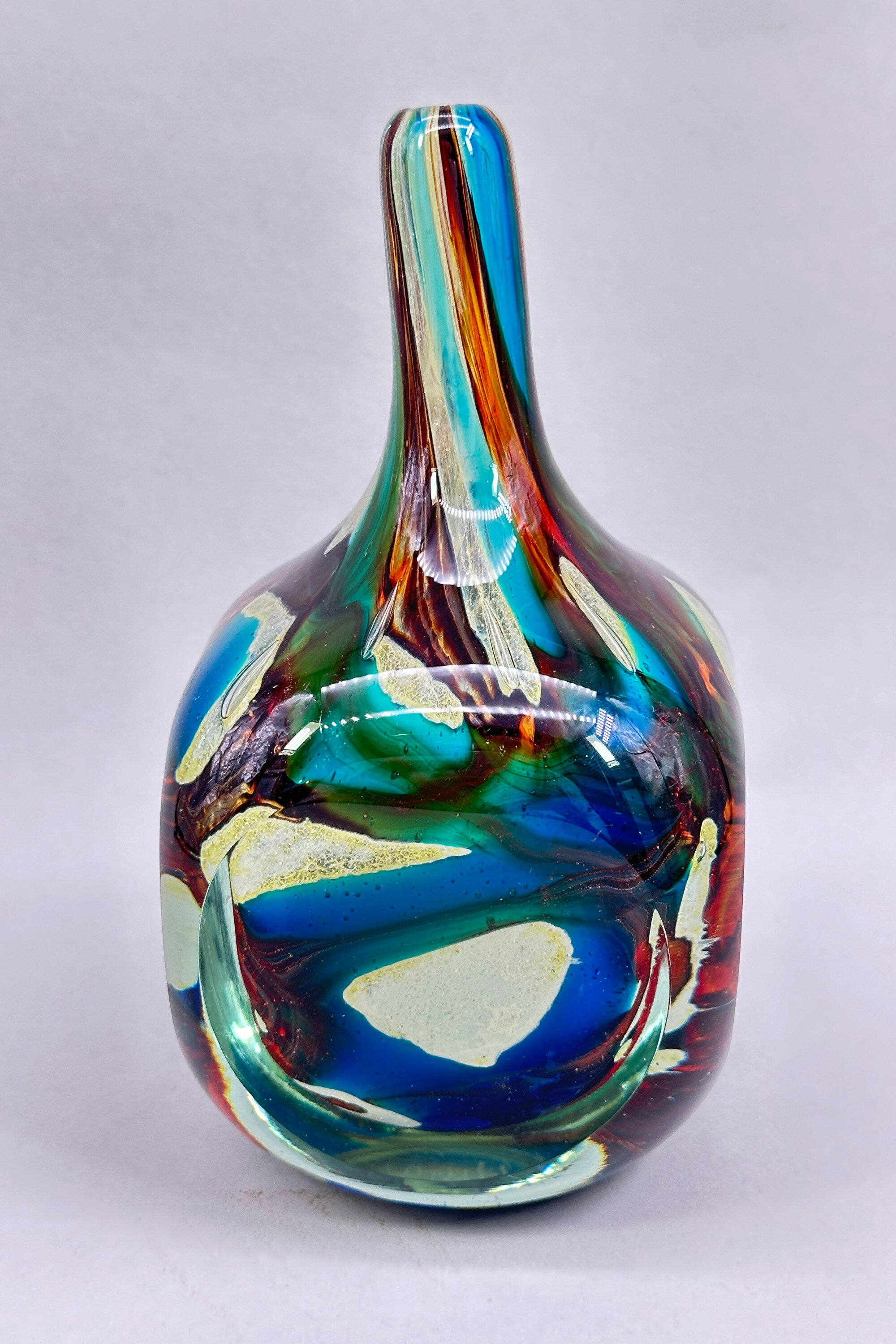
Mdina Art Glass vase, signed and numbered 1979, late C20th
Price: £95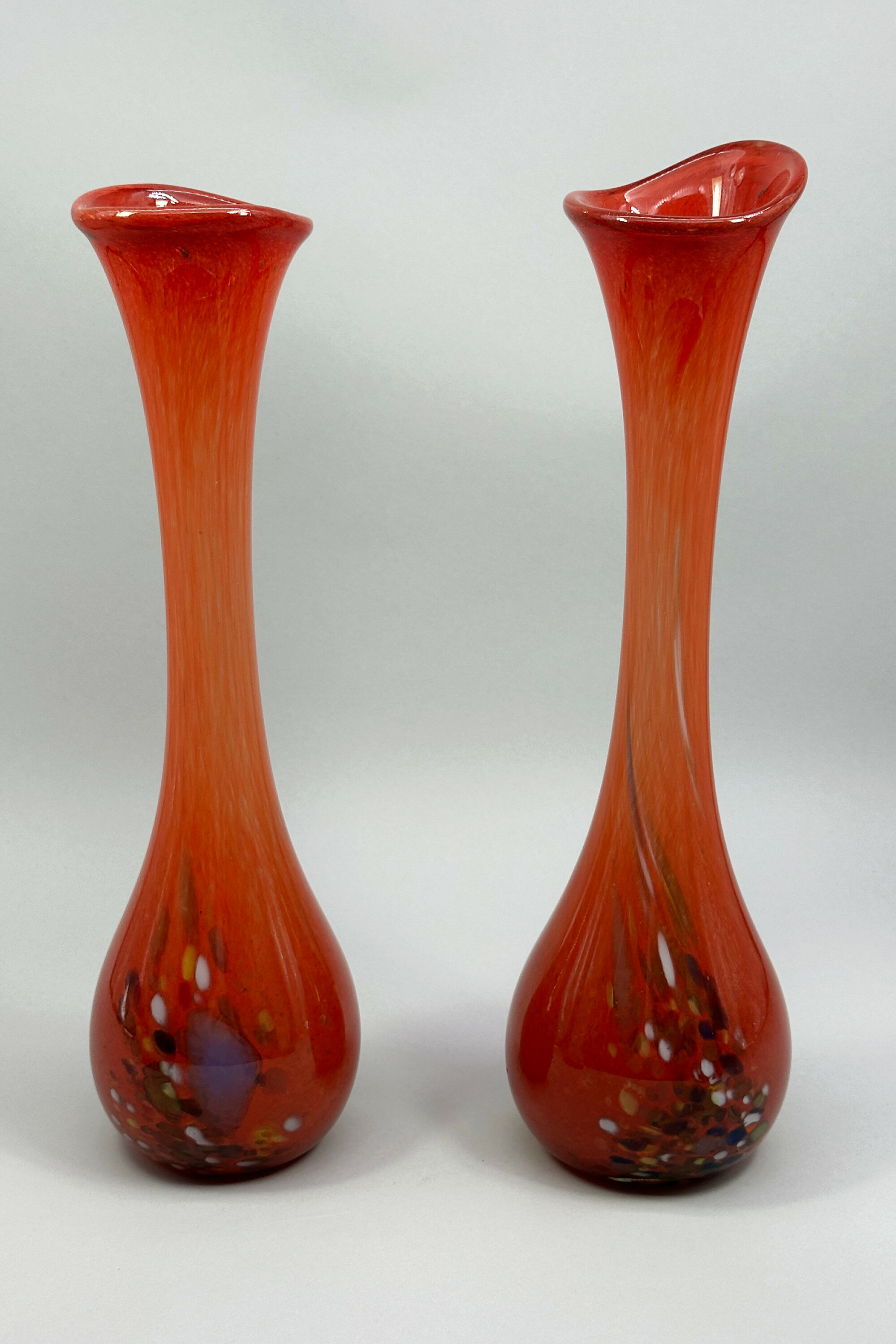
Pair of slender red glass bottle Vases, probably Joska Kristall, Germany, late C20th
Price: £85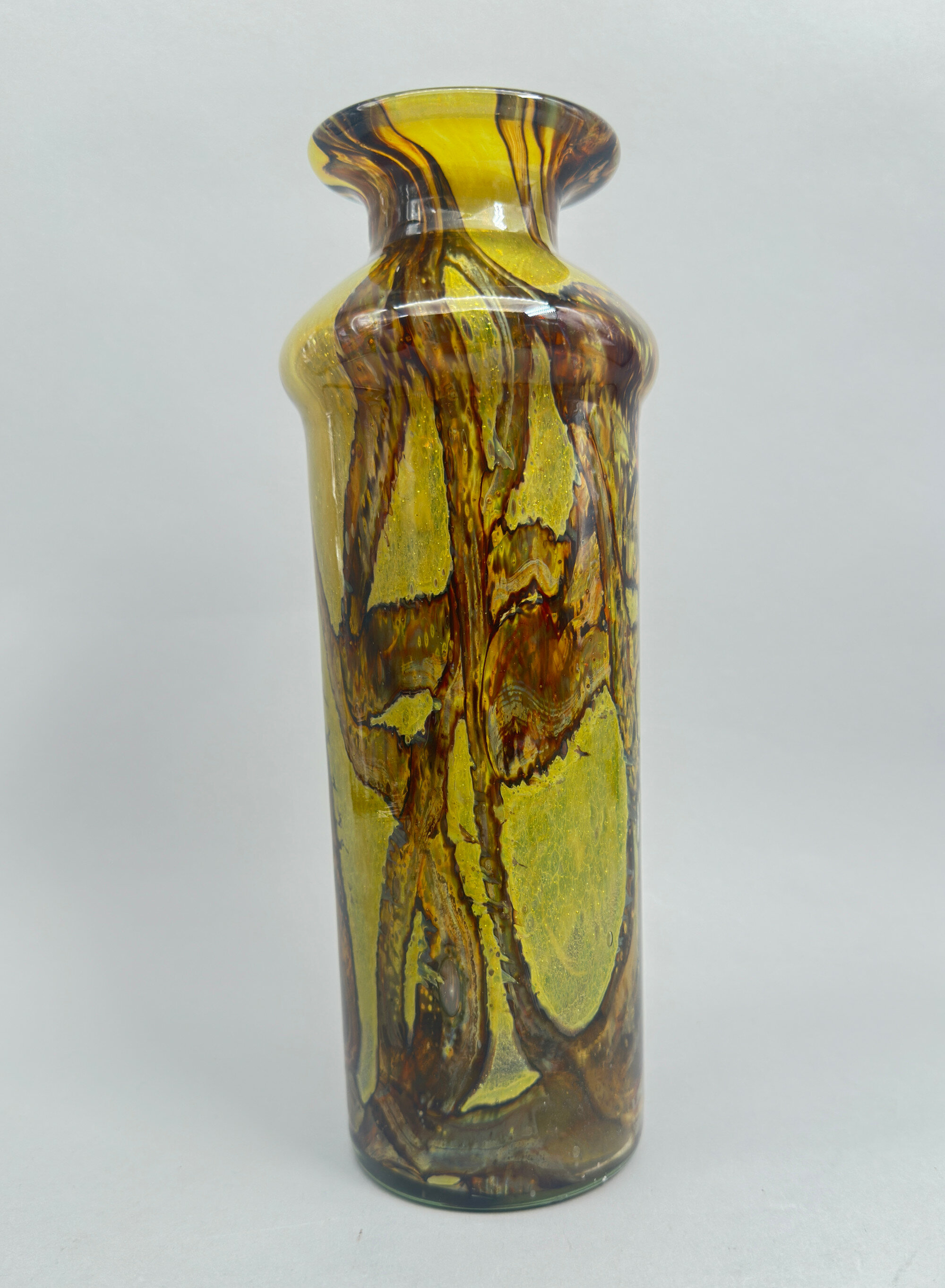
Mdina Earthtones Pattern Vase, late C20th
Price: £85Mdina Glass was founded in the Maltese town of Mdina in 1968 by Michael Harris and Eric Dobson. The town had no history of glass making but the venture proved to be a success. Its wares, free formed organic glassware, often in colours inspired from the sea, sand, earth and sky, proved very popular with tourists visiting Malta. Michael Harris left Mdina in 1972 and formed a new company, Isle of Wight Studio Glass, on the Isle of Wight, UK, leaving Eric Dobson in charge, but many of the designs he created continued to be made at Mdina Glass after his departure although new designs and patterns were added as well of which this vase is an example. Ownership of the company later changed but it is still producing a popular range of glasswares today.
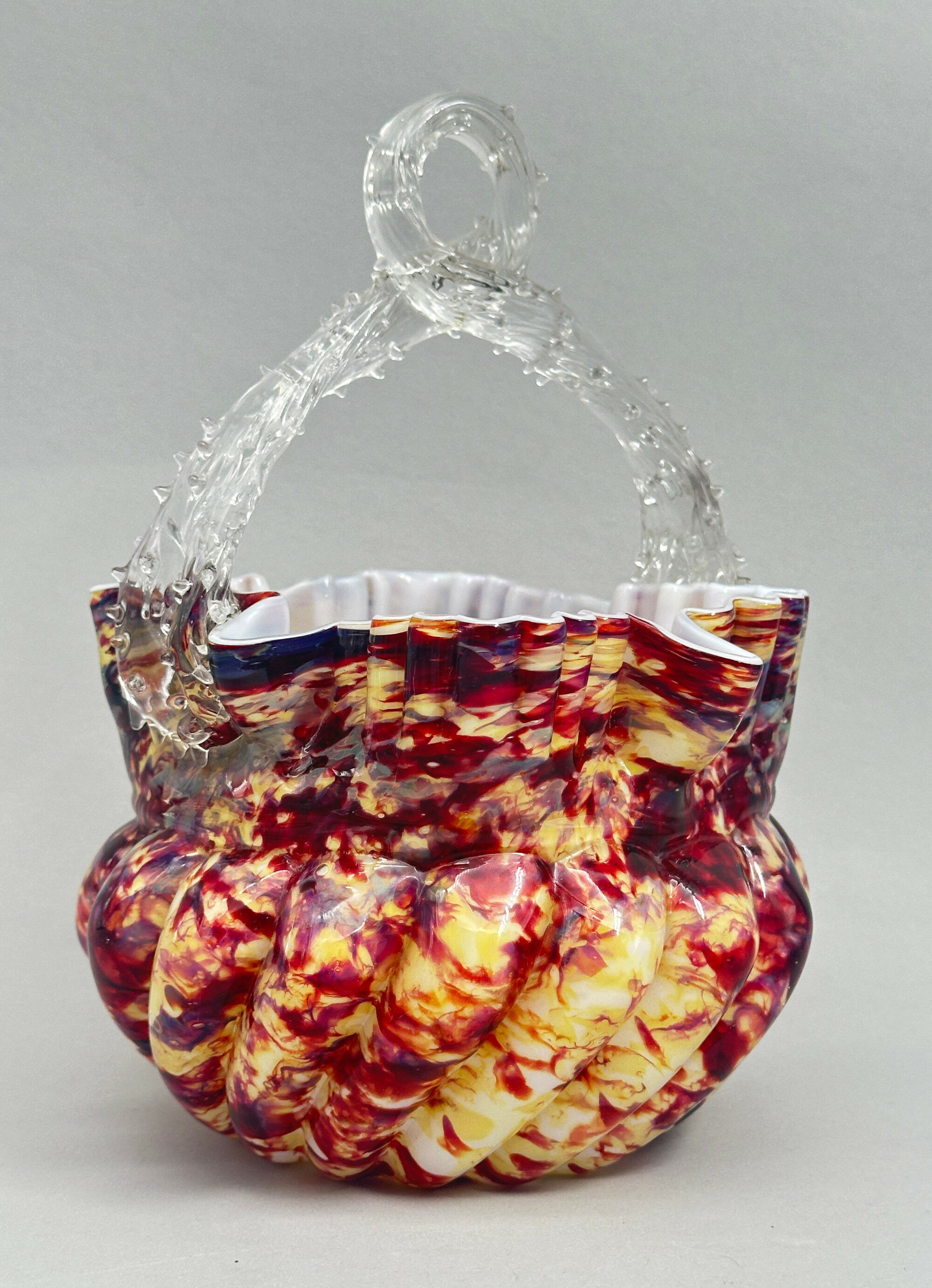
Spatter Glass Basket with thorn rope twist handle, probably Stourbridge, late C19th
Price: £75The 'spatter’ technique was known from Roman times but enjoyed something of a renaissance in the Victorian era when there was a general revived interest in the glass making techniques of the ancient world. Similar baskets are normally associated with the glassmakers at Stourbridge, Worcestershire, a centre of glass production since the 1600s, and this seems the most likely source of this piece, with a dating to the late nineteenth century. It is an excellent example of the type and remains in fine condition.
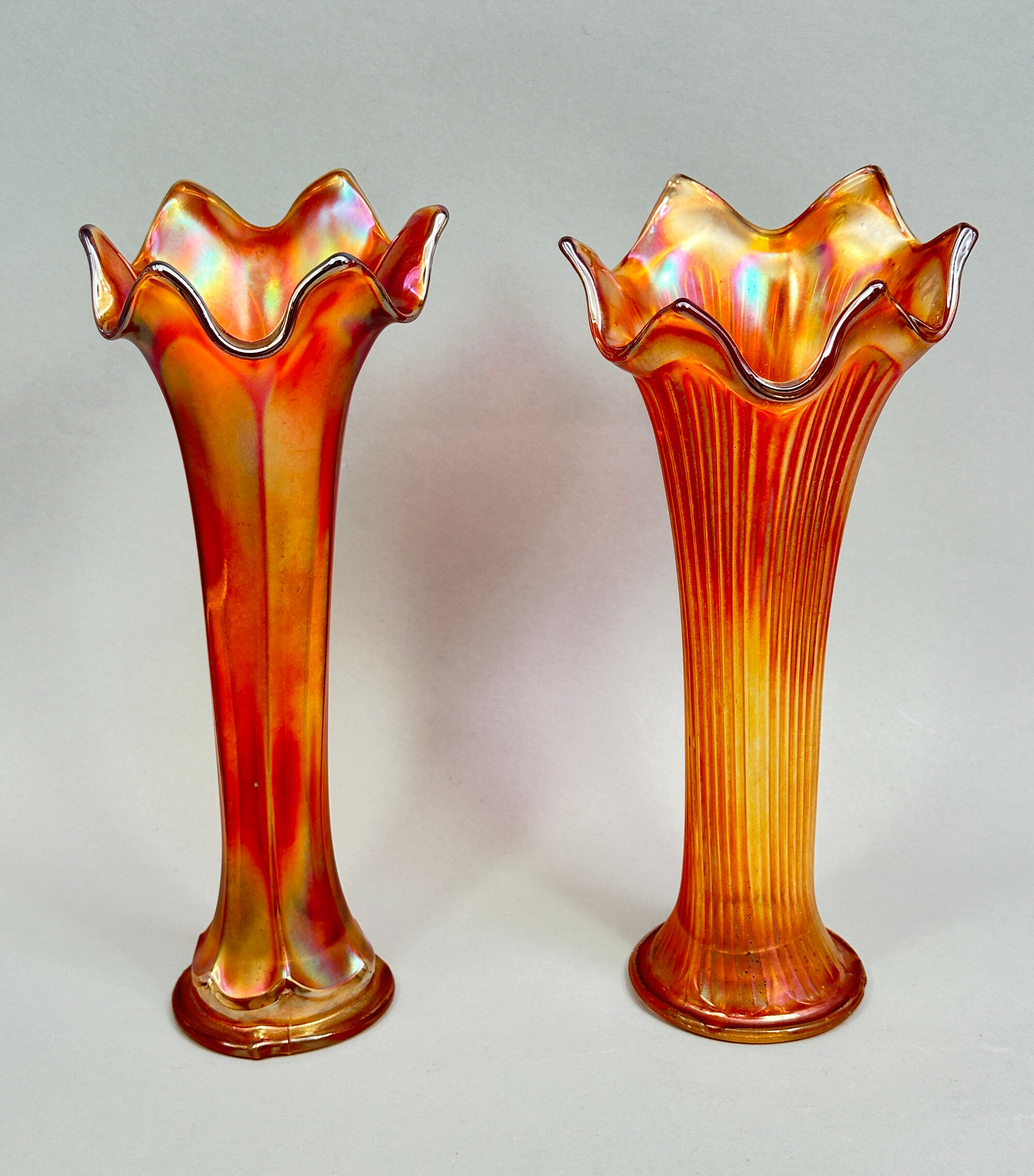
Two Carnival Glass Vases, Marigold, probably Fenton USA, early C20th
Price: £55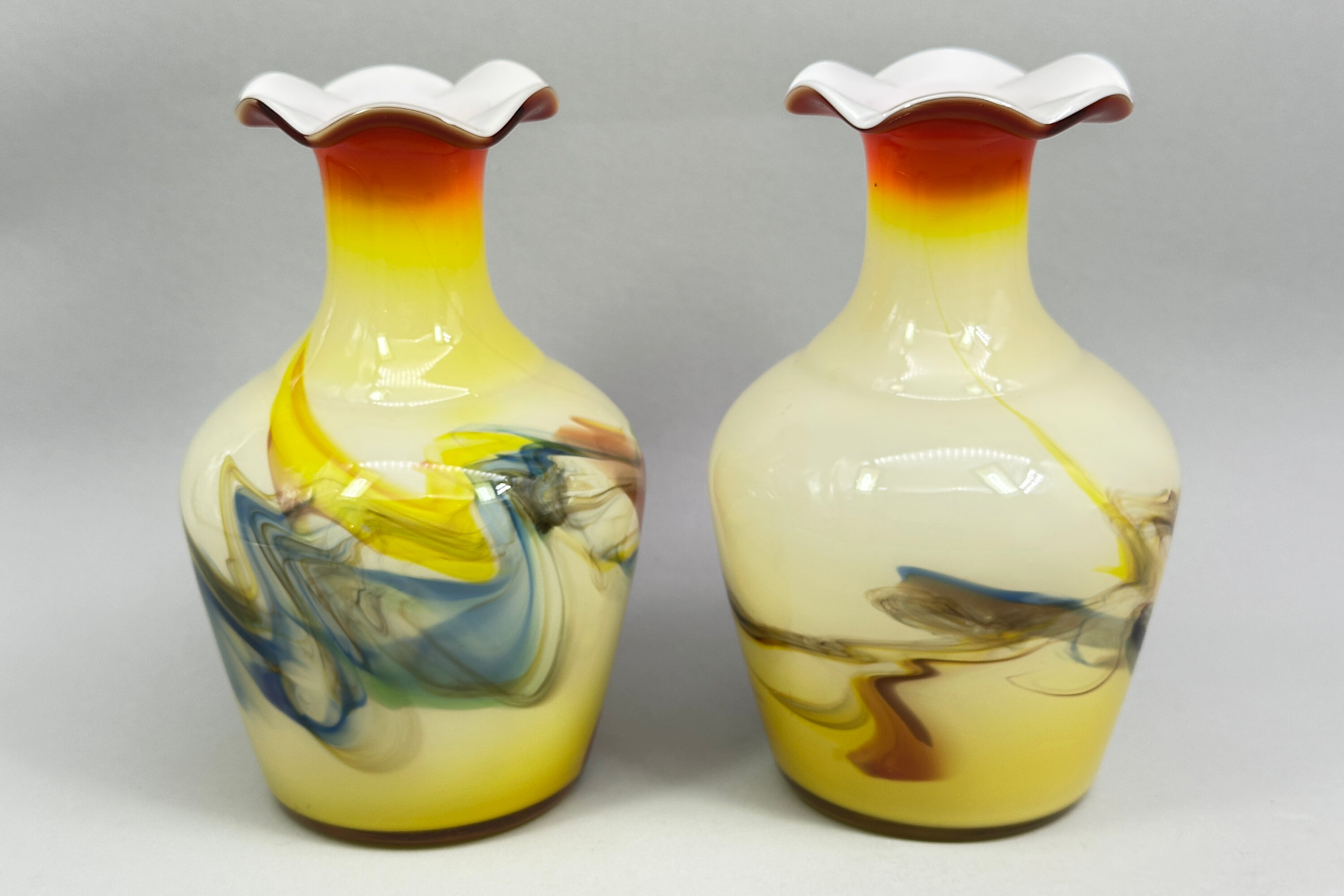
Pair of Chinese Dalian Glass Co. Ltd Vases, second half C20th
Price: £45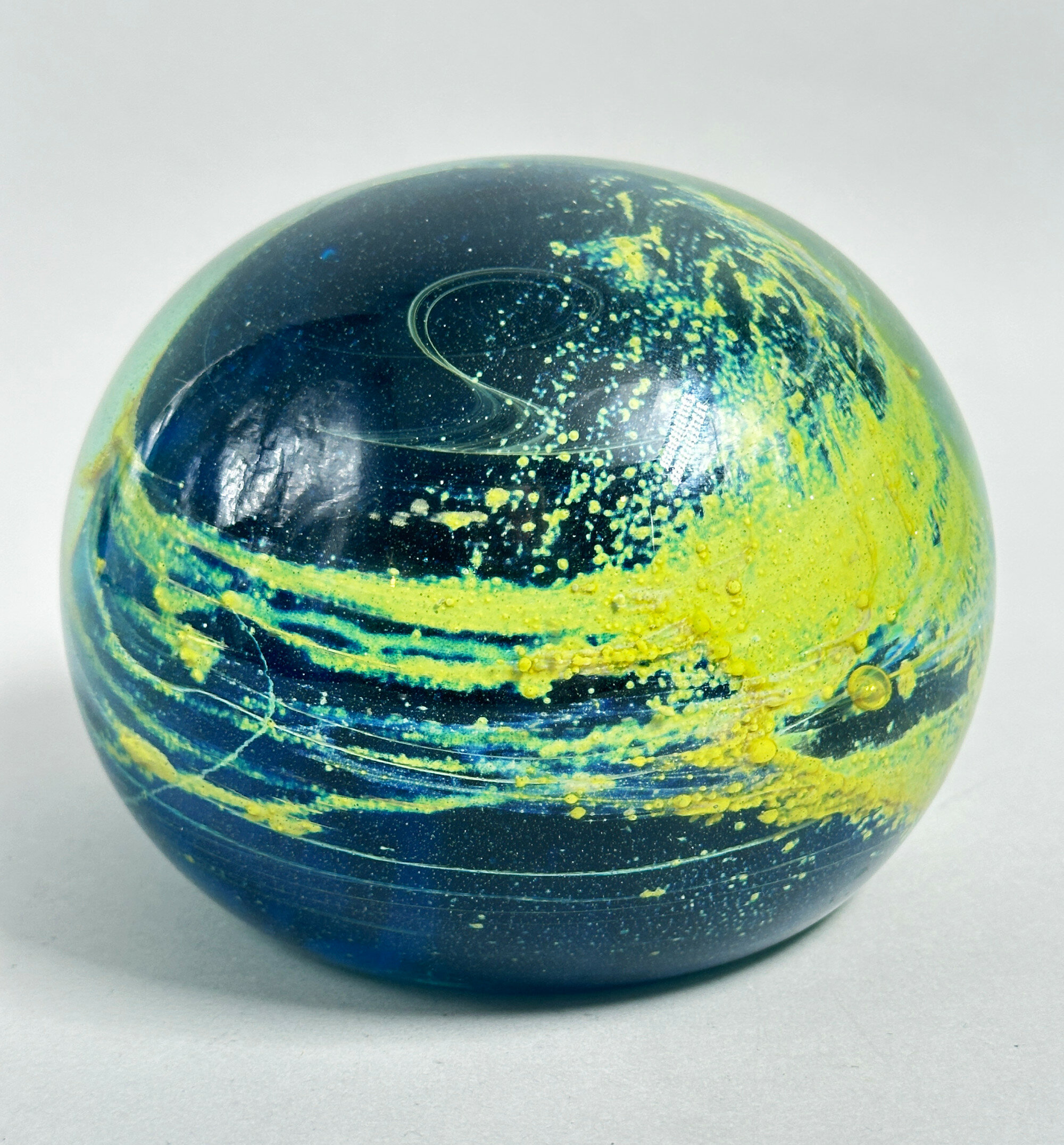
Large Mdina Glass Paperweight/Doorstop, late C 20th
Price: £55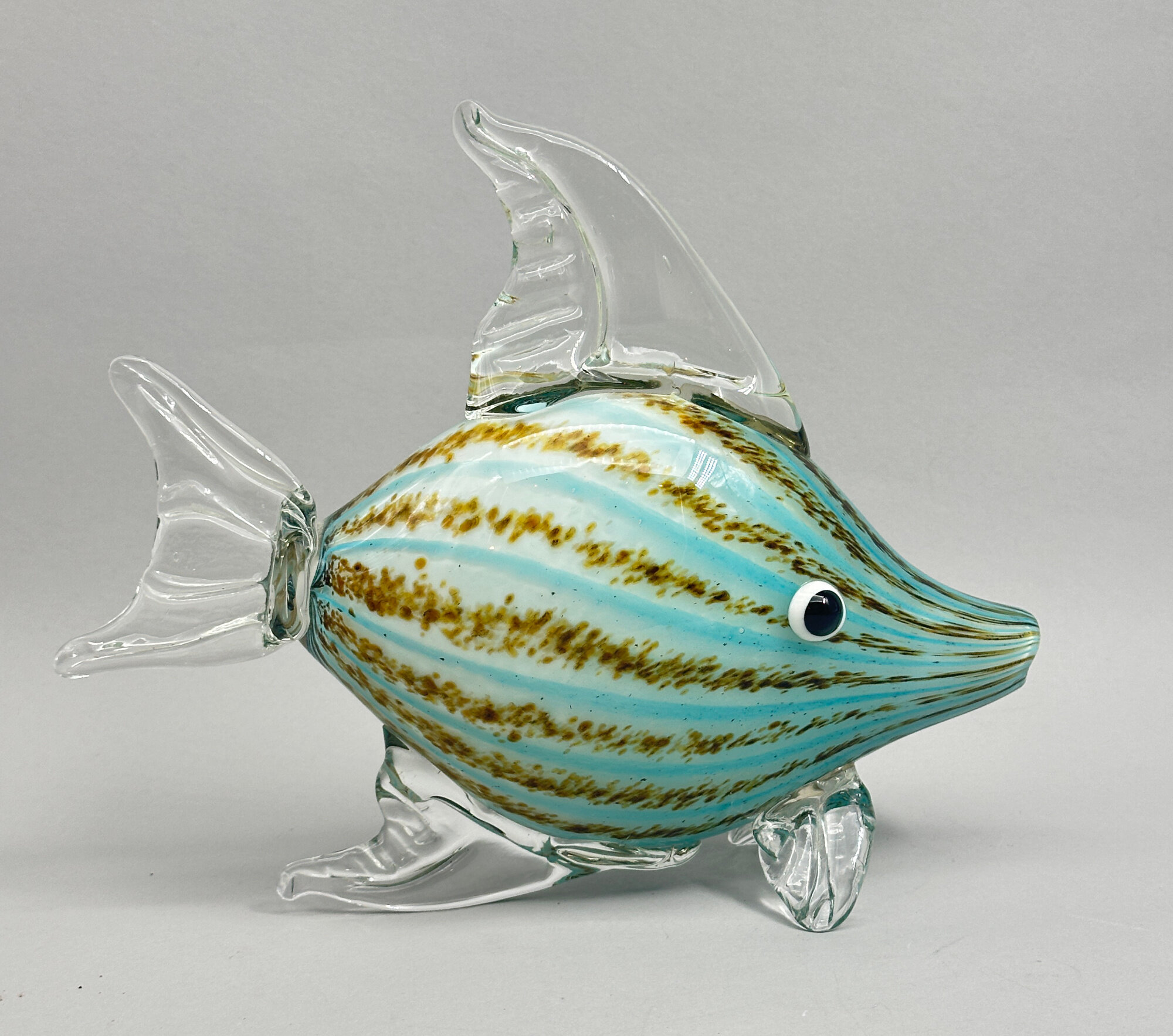
Murano Glass Fish, second half C20th
Price: £55
Pair of Art Deco glass Vases with applied silver snakes, 1930s
Price: £95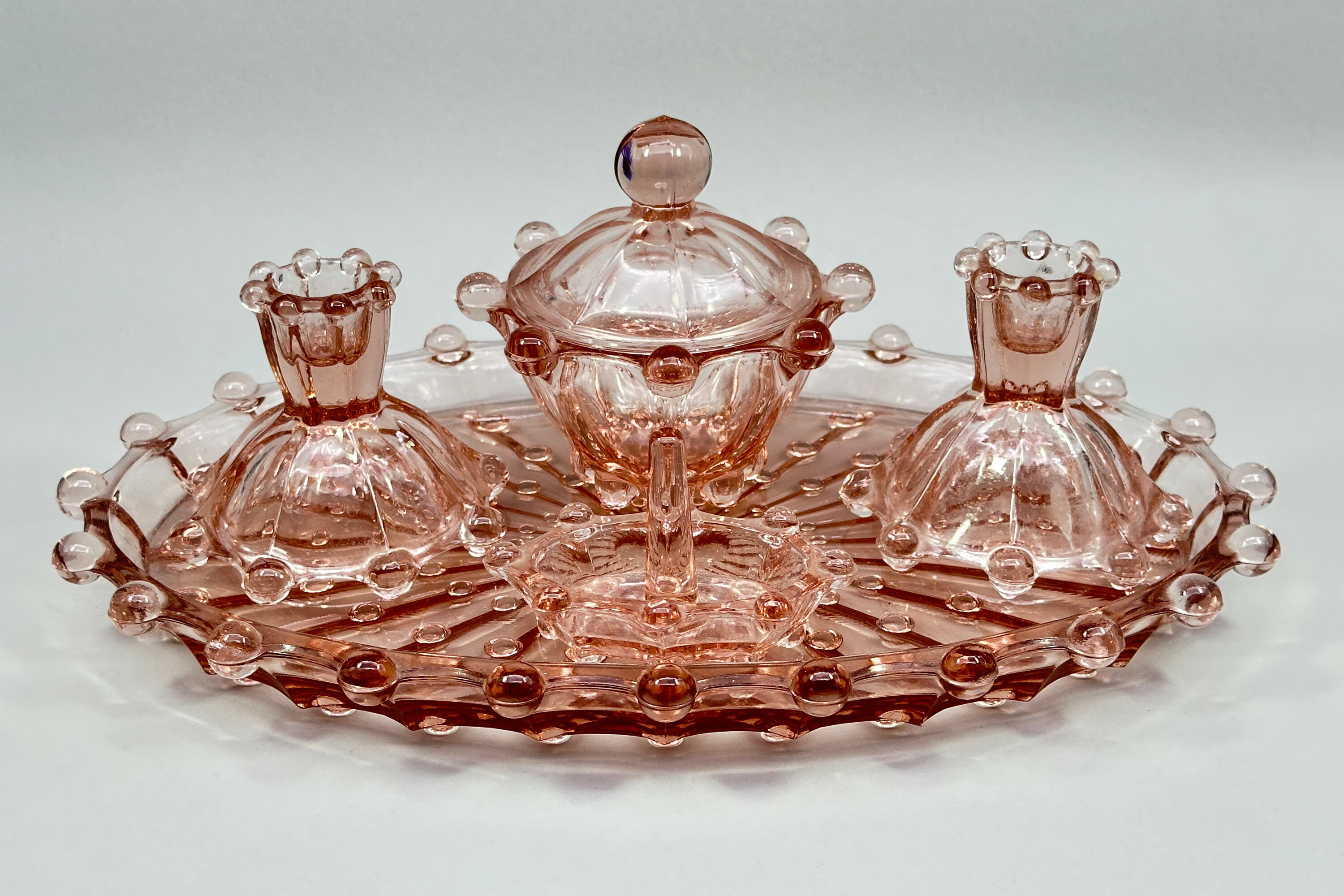
Pink pressed glass dressing table set, Libochoviche, Czech, 1950s
Price: £35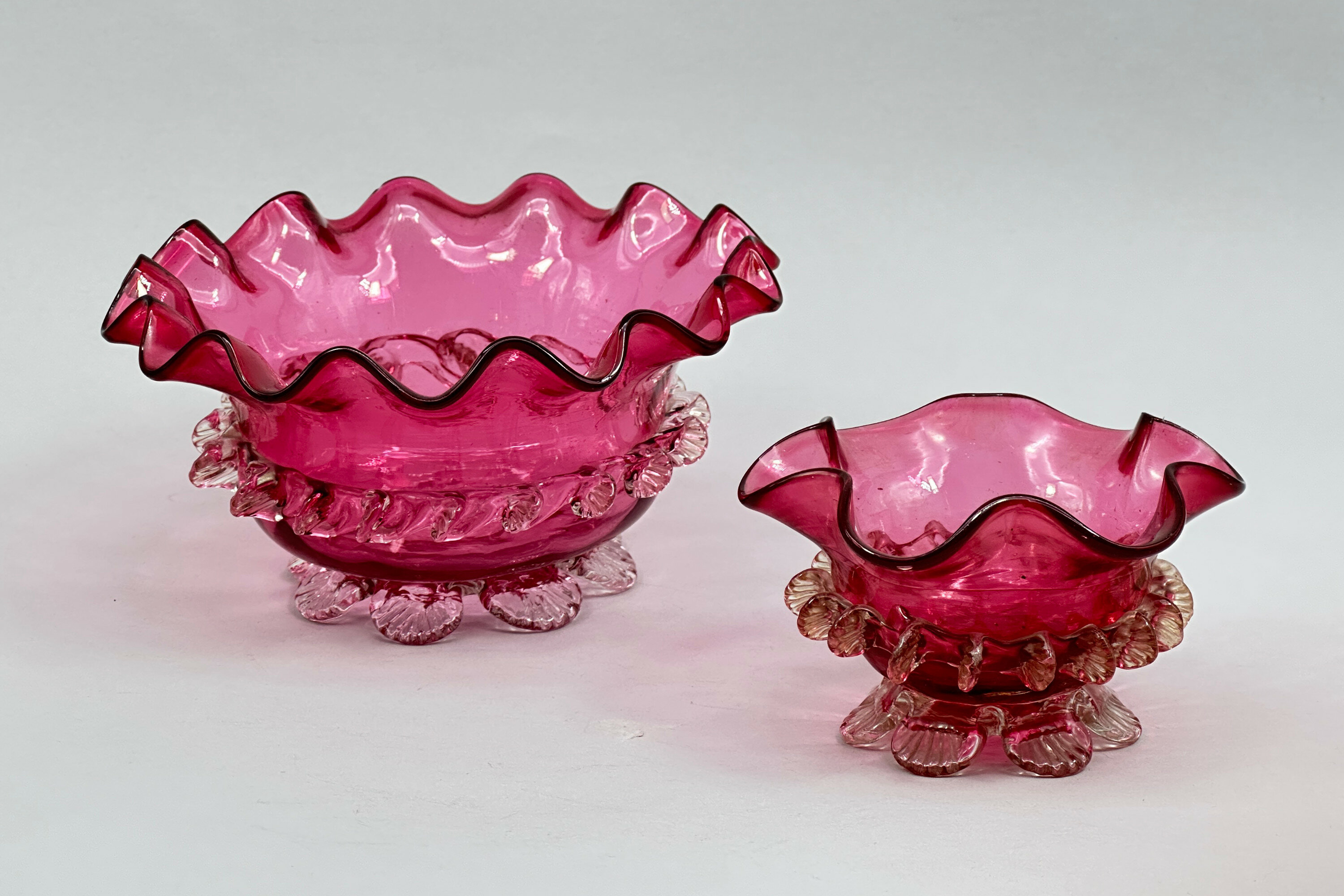
Two Victorian Cranberry Glass Bowls, late C19th
Price: £75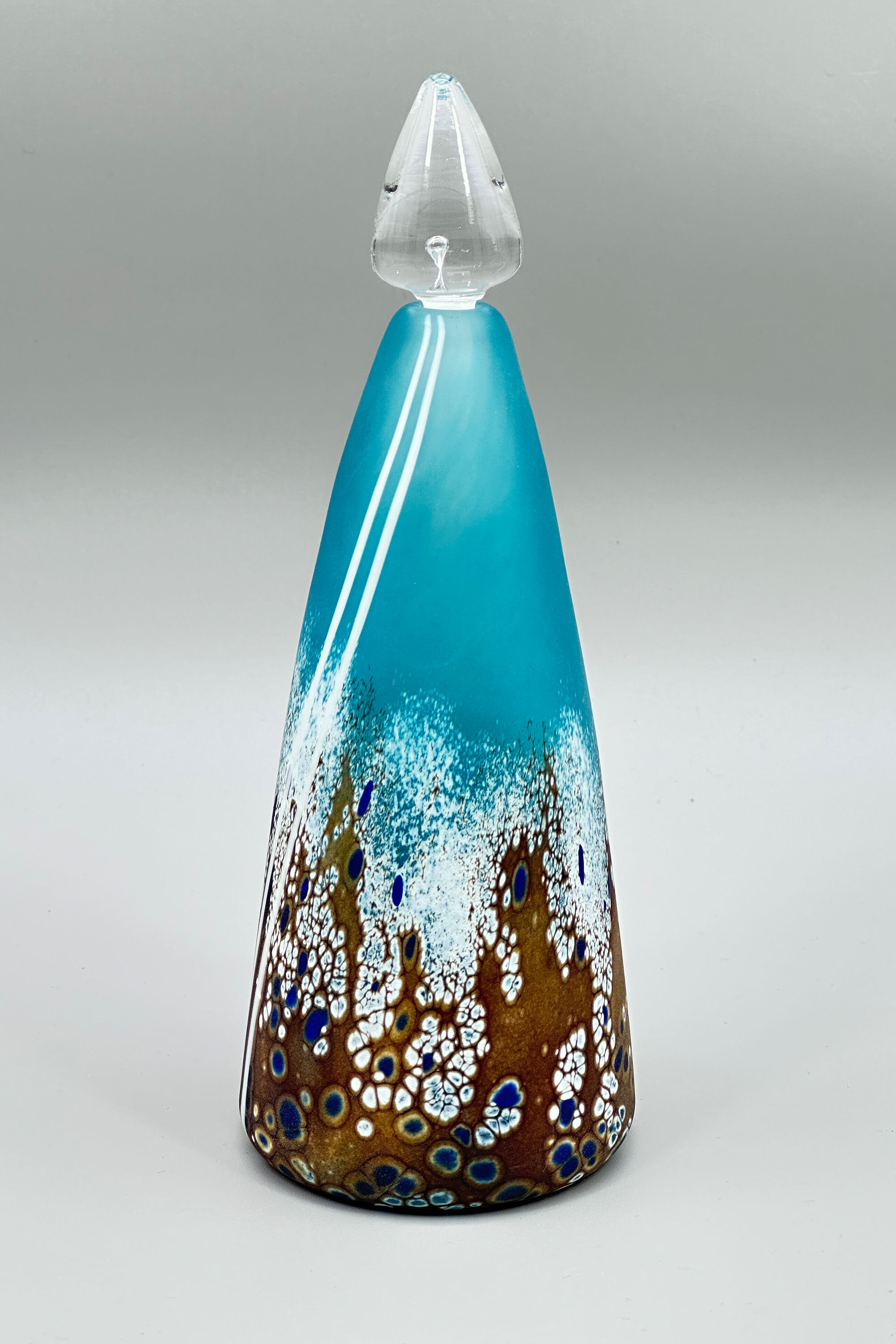
An art glass Perfume Bottle and Stopper, Martin Andrews Glass, C21st
Price: £75Martin Andrews (see image 9) graduated from West Surrey College of Art and Design with a BA (hons) Glass in 1991. Following this he was based in London until 2000 when he then launched his current workshop at the Ruskin Glass Centre in Stourbridge. His work often draws on the earth's natural forms and patterns and his ‘beach’ range is a prime example of this. Most of his pieces are signed, but this bottle is not, perhaps because of its size, but its inclusion in the studio’s inventory makes its provenance beyond doubt.
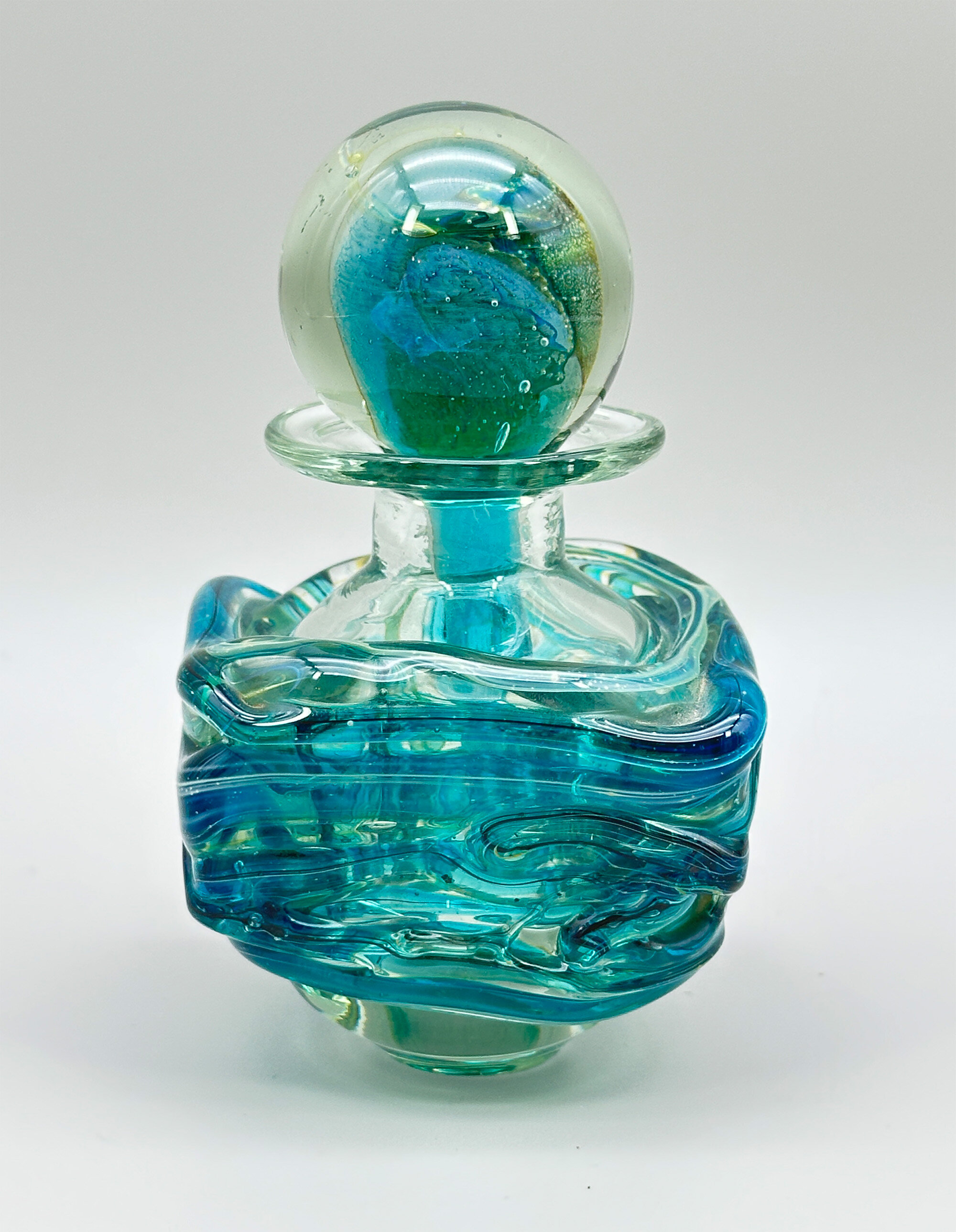
Mdina Blue Summer Perfume Bottle and Stopper, signed, 1970s
Price: £55Mdina Glass was founded in the Maltese town of Mdina in 1968 by Michael Harris and Eric Dobson. The town had no history of glass making but the venture proved to be a success. Its wares, free formed organic glassware, often in colours inspired from the sea, sand, earth and sky, proved very popular with tourists visiting Malta. Michael Harris left Mdina in 1972 and formed a new company, Isle of Wight Studio Glass, on the Isle of Wight, UK, leaving Eric Dobson in charge, but many of the designs he created continued to be made at Mdina Glass after his departure. This perfume bottle may possibly be an original Michael Harris design. Certainly it reflects the organic forms he created and the colourings, resembling the popular ‘sea and sand’ range, are consistent with this although the pattern here is more correctly referred to as ‘blue summer’ and the stopper of this bottle is a better match in colouring and design than some of the other examples currently on the market.

Perfume Bottle and Stopper, Stuart Akroyd, signed J S A, late C20th
Price: £75The signature here, which occurs on other pieces by the same artist, is for Stuart Akroyd, a celebrated English glassmaker who worked from studios in Sunderland then Sheffield from 1991 to 2021(see image 8). Born in 1966, Akroyd studied at Sunderland University, following this with a Post Graduate Diploma at the International Glass Centre, Brierley Hill. After working as the head maker at Lakeland Crystal, Cumbria he went on to establish his own business, Stuart Akroyd Glass Designs, in 1991, renaming it Stuart Akroyd Contemporary Glass when he moved from Sunderland to Sheffield in 2000. Best known for his sculptural pieces which were inspired by the ‘Skylon’ structure, the well known symbol of the 1951 Festival of Britain, Akroyd also worked on a smaller scale and there a number of small bottles by him of which this is an excellent example. The glass effects are skilful and inventive and the flat panel to the body is both decorative and functional, allowing the level of fluid in the bottle to be seen clearly. Many of his sculptural pieces were made in his later Sheffield workshop which, with its greater space, allowed him to employ the techniques necessary to create them, so it is a reasonable guess that this bottle and its companions belong to the first phase of his output.
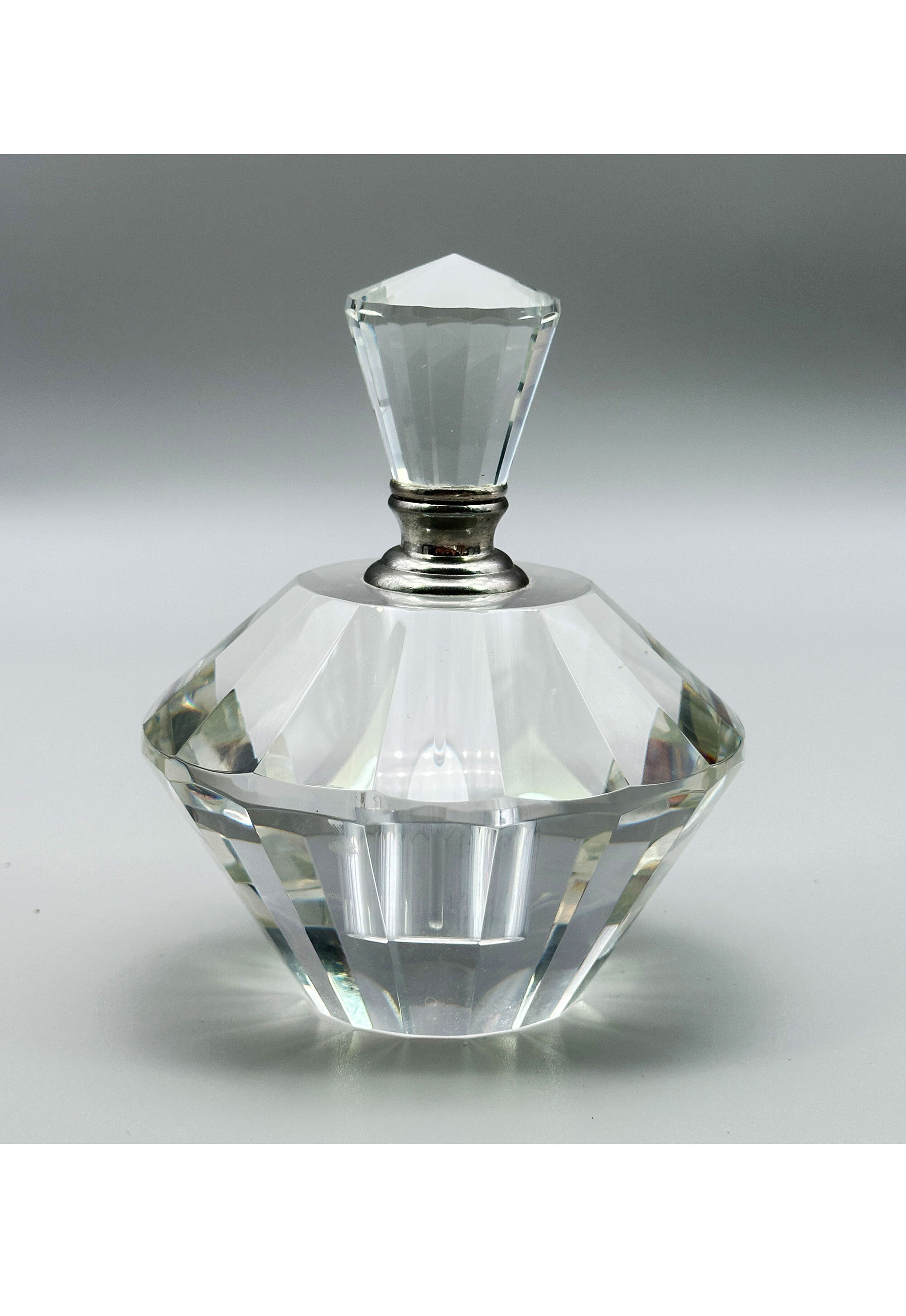
Art Deco style crystal glass Perfume Bottle and Stopper, late C20th
Price: £35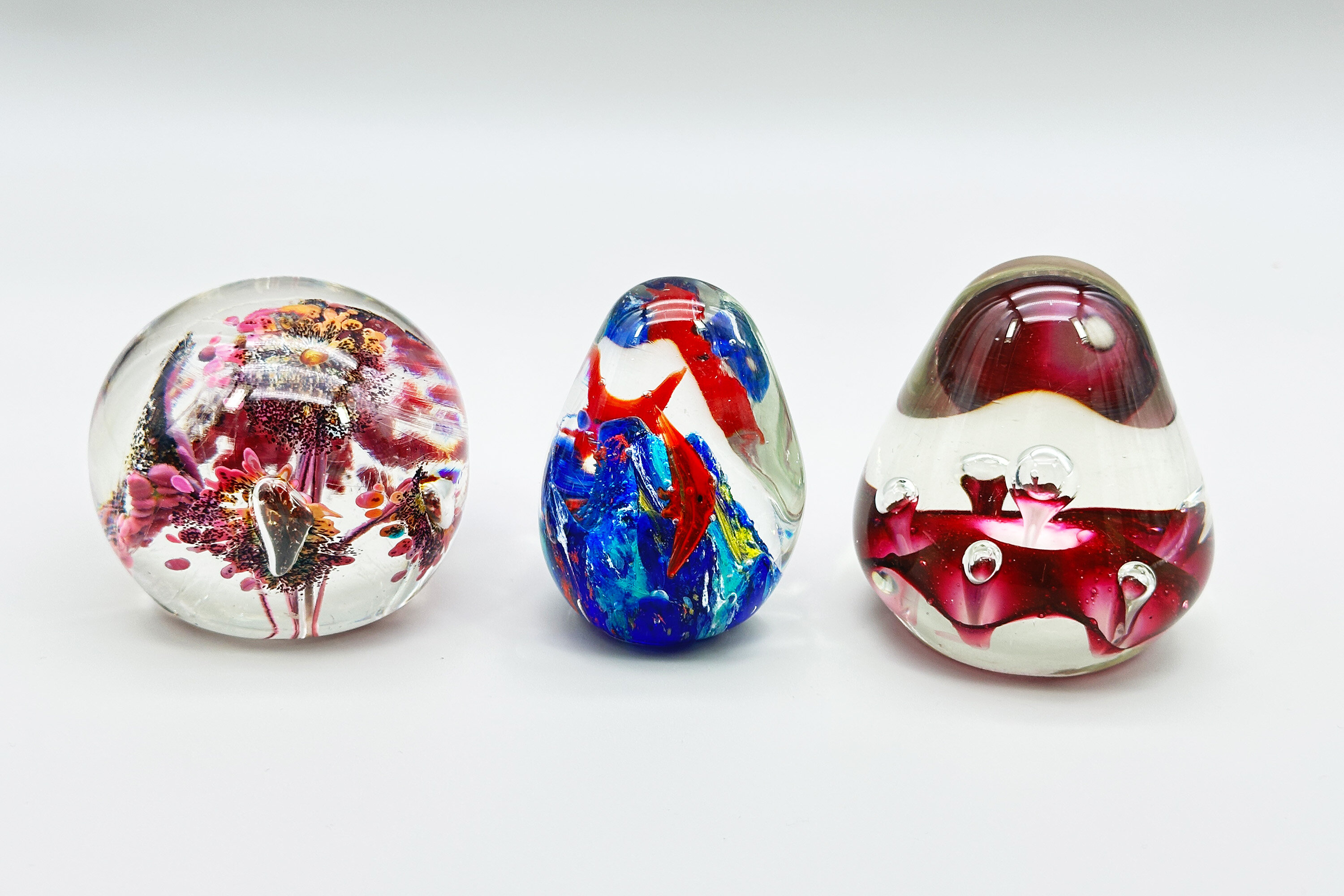
Three Art Glass Paperweights, late C20th
Price: £75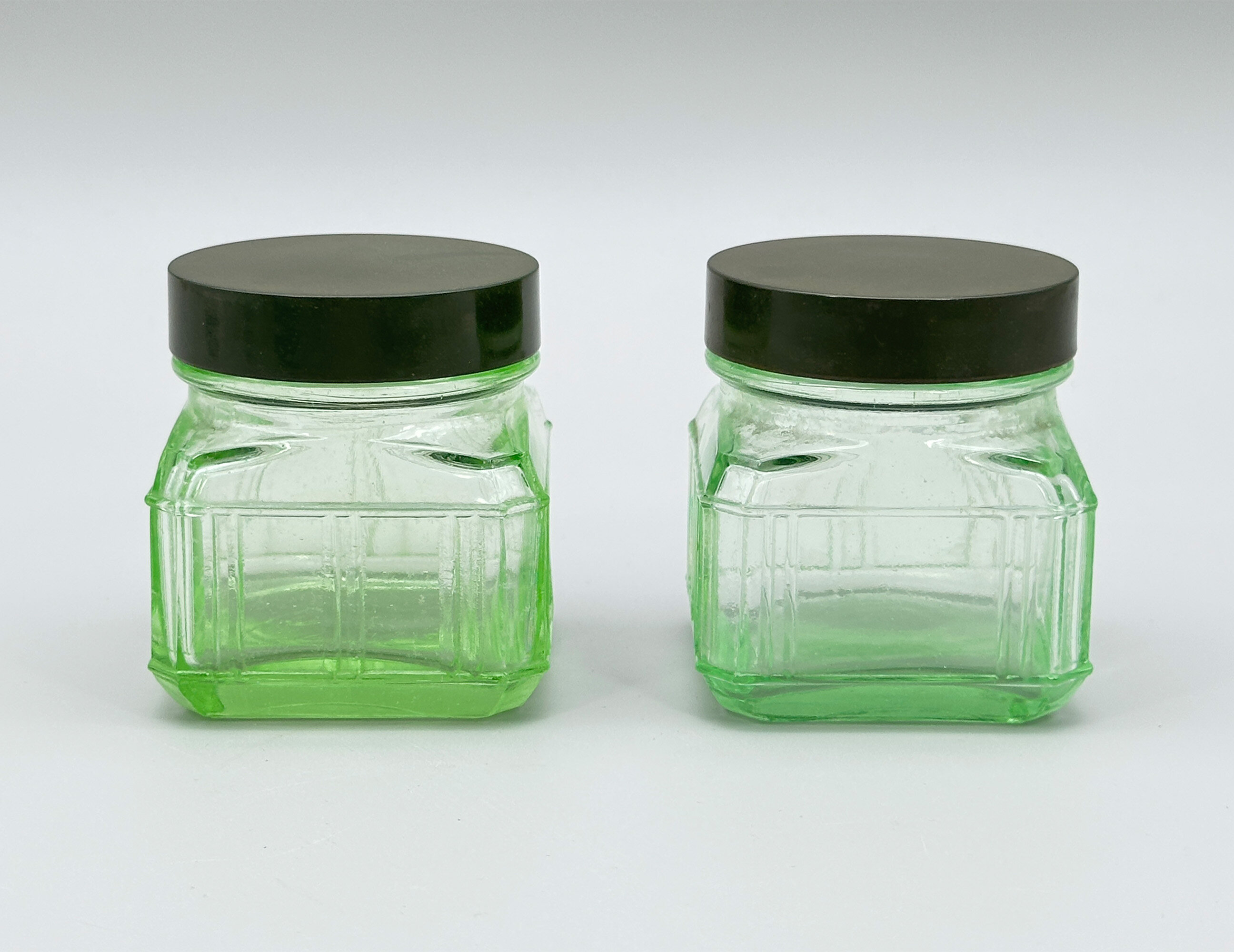
Pair of small green depression glass Jars with bakelite Covers, 1930s
Price: £45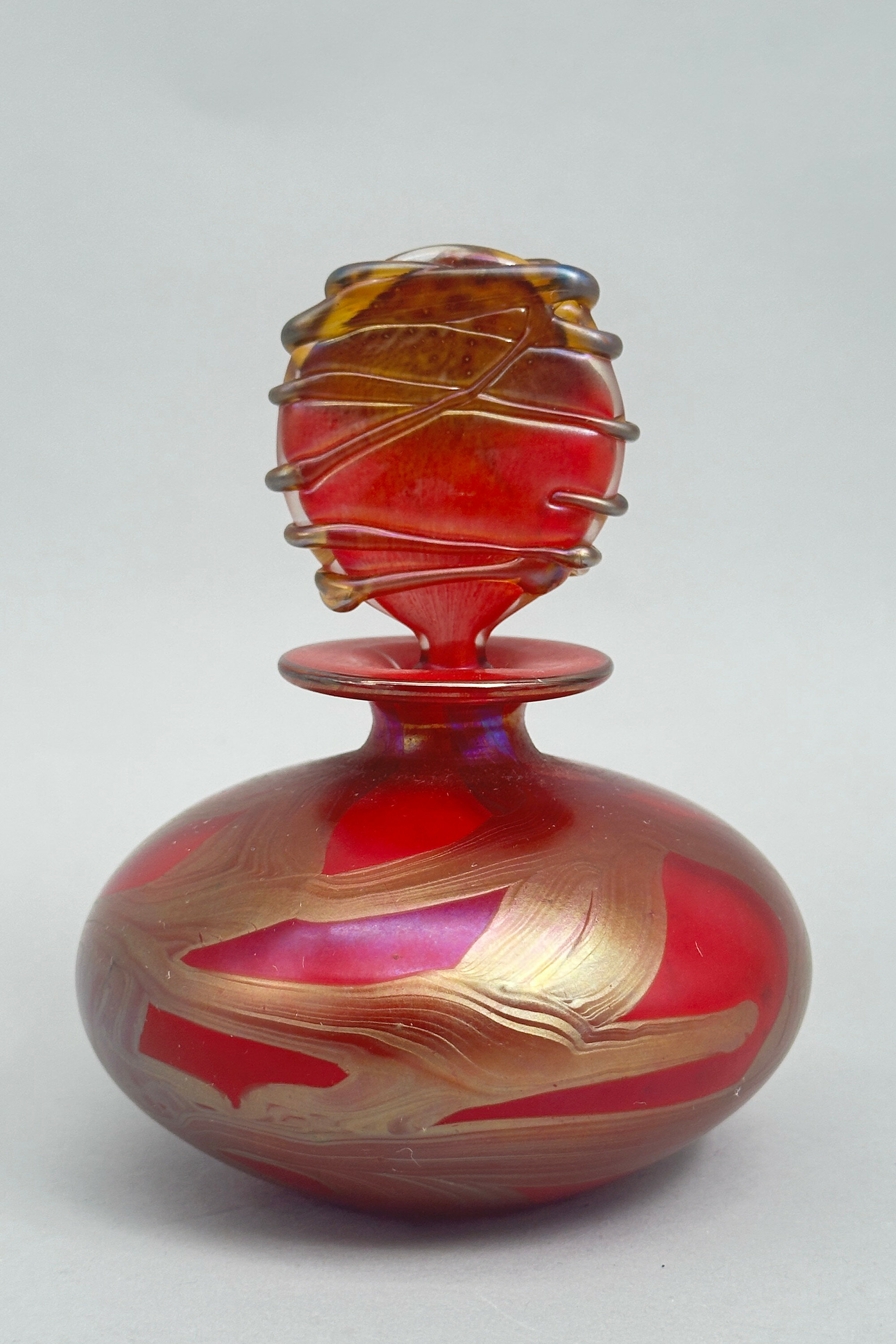
Isle of Wight golden peacock Perfume Bottle and Stopper with box, late C20th
Price: £55The Isle of White Glass studio was established by the celebrated glass maker Michael Harris in 1972 after he left his first glassworks based in Malta, the well known Mdina Glass. Some of the Mdina designs continued to be made in his new location but new ranges were introduced as well, among them the ‘Golden Peacock’ design which was made from 1982 to 2003. The particular variation we have here is ‘Royale’ which was made from 1987 to 1998 allowing a fairly precise dating for this piece. Michael Harris died in 1994 and the business was continued by one of his sons, Timothy (see image 12), and his wife, Elizabeth, until it unfortunately went into liquidation in 2012. But Timothy’s younger brother, Richard, came to the rescue and business resumed in 2014, continuing until the present day in new premises at the Arreton Barnes Craft Village.
The pieces made by Isle of Wight Glass are a continuation of the innovative designs and skiful craftsmanship seen in Mdina pieces and this bottle is a fine example of their work. It also comes with a matching box but this may not be the original one (other examples are taller) since the stopper has to be loose packed separately. This hardly detracts, though, from a striking and individual piece in an attractive and rarely found colour wave.
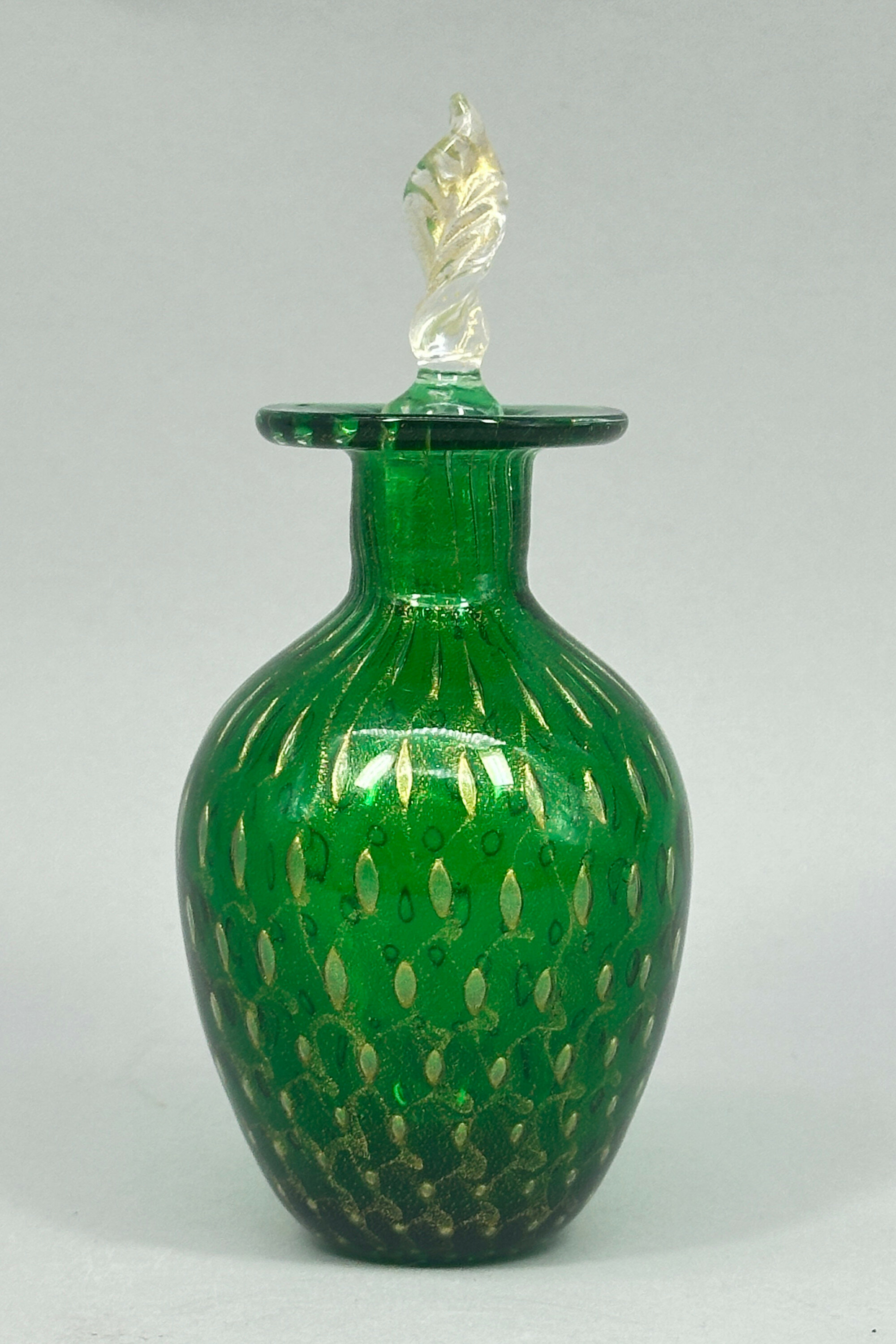
Murano green bullicante glass Perfume Bottle and Stopper with label, second half C20th
Price: £55
Mdina Glass Vase, signed and with maker’s label, late C20th
Price: £95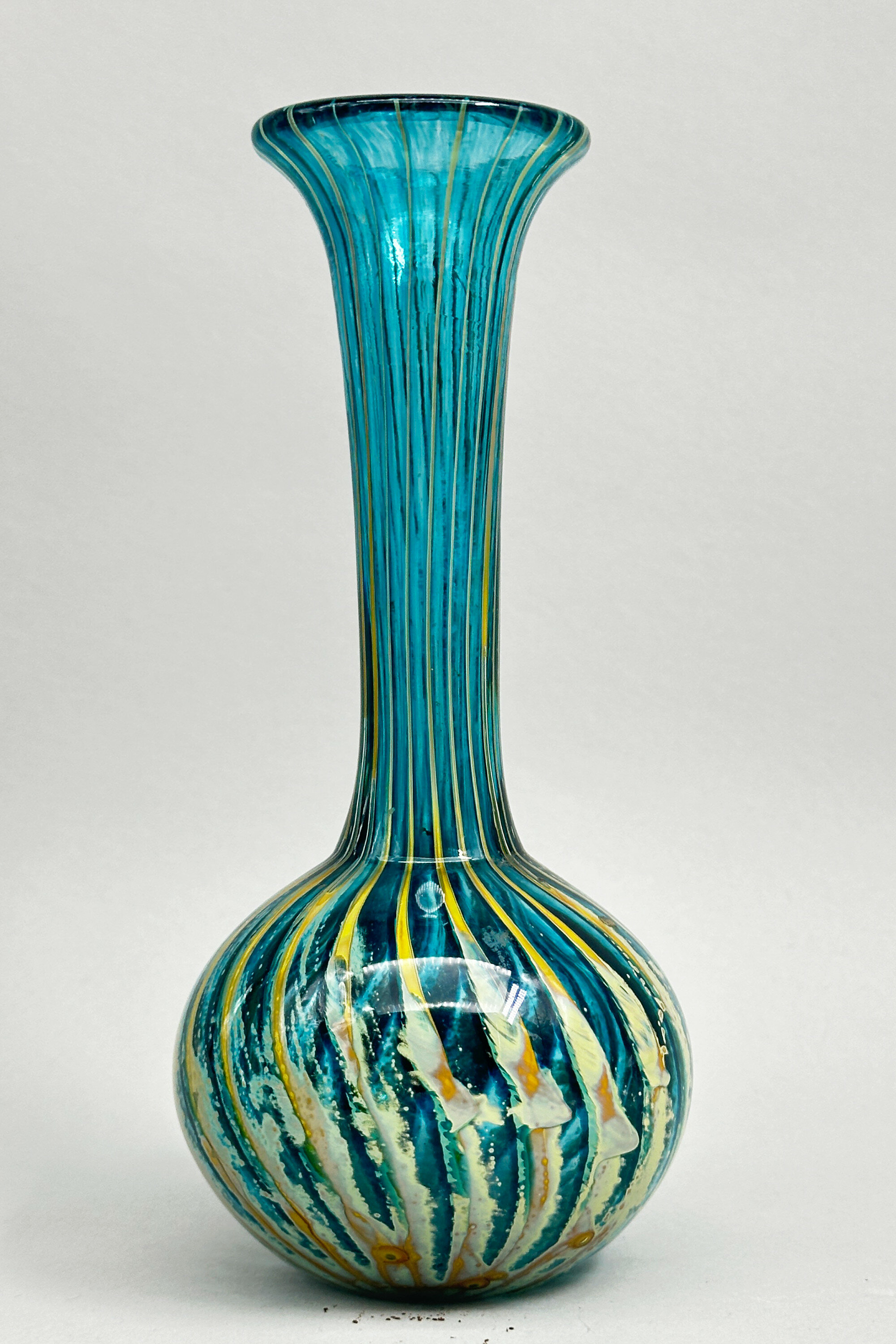
Phoenician Glass Vase, signed, late C20th
Price: £45Phoenician Glass was founded on Manoel Island, Malta in the 1980s by Leonard Sullivan, who had worked previously at Mdina Glass and many of his designs resembled those of his old employers. Certainly, the influence of Mdina and perhaps that of one of its founders, Michael Harris, can be seen here. Phoenician Glass took its name from the ancient Phoenician civilisation, which colonised Malta during the first millenium BC.
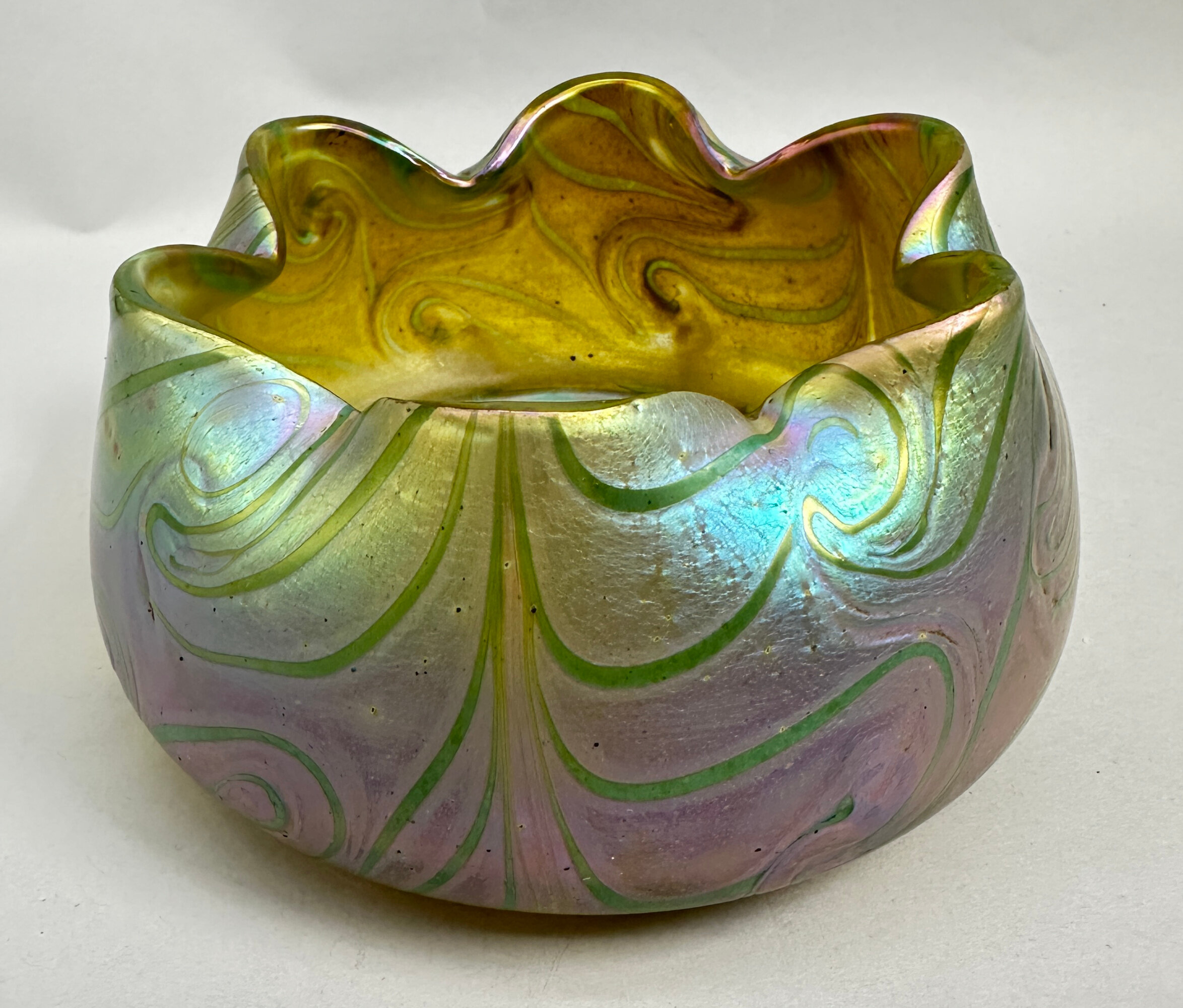
Loetz style glass Bowl, early C20th
Price: £110Most of the original Loetz pieces were not signed and there were many contemporary manufacturers making pieces in a similar style. There are, furthermore, modern reproductions. The attribution ‘Loetz’, is, inevitably, generously and loosely applied but sometimes true certainty is hard to achieve. Much information and assistance can be obtained from the website Loetz.com. On that basis this attractive bowl with its crimped rim and wavy line design on a purple ground is best regarded as Loetz style but probably contemporary with the output of the Loetz factory itself. It has great decorative appeal nevertheless.
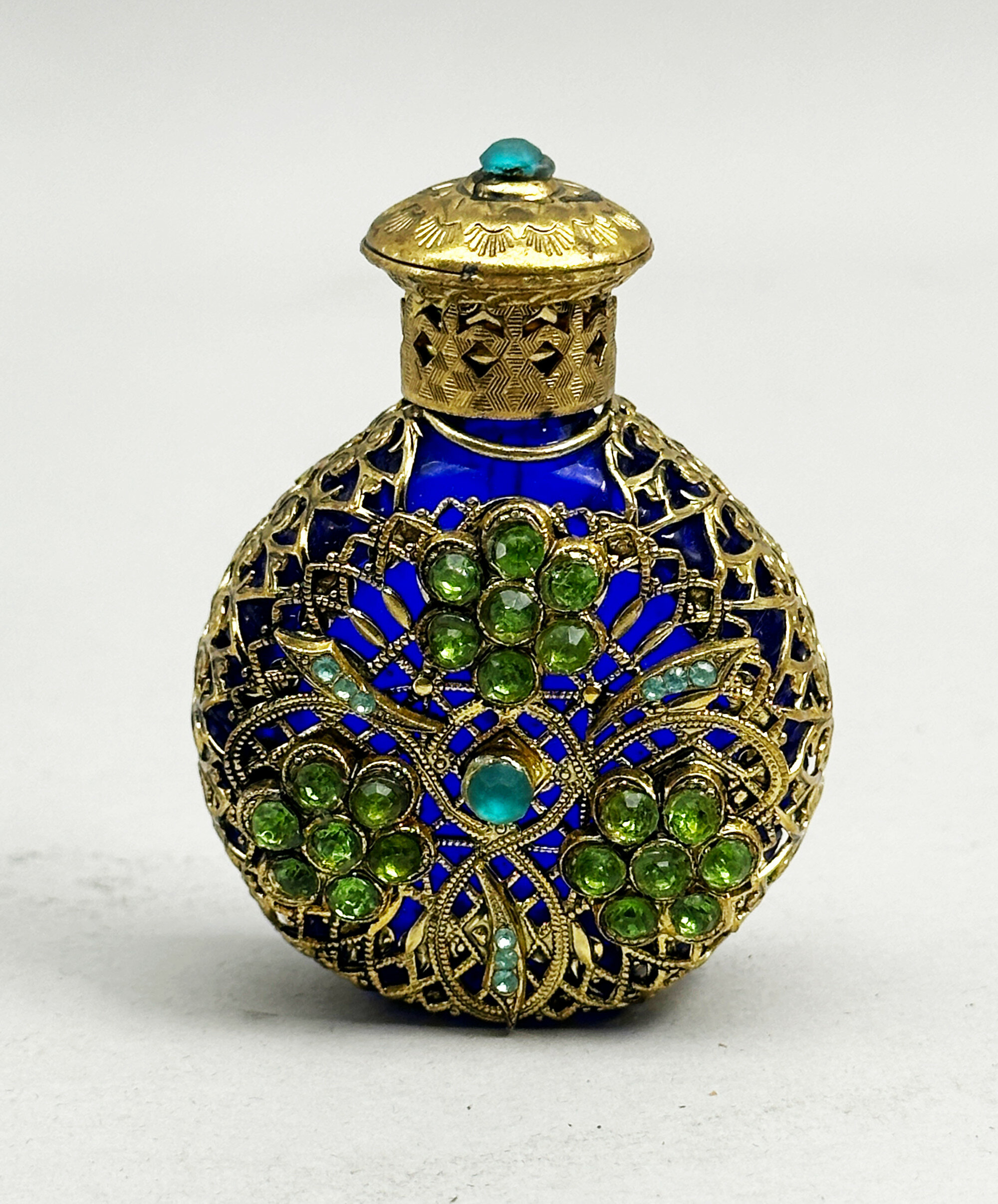
Czech rhinestone jewelled glass metal filigree Perfume Bottle and Stopper, C20th
Price: £45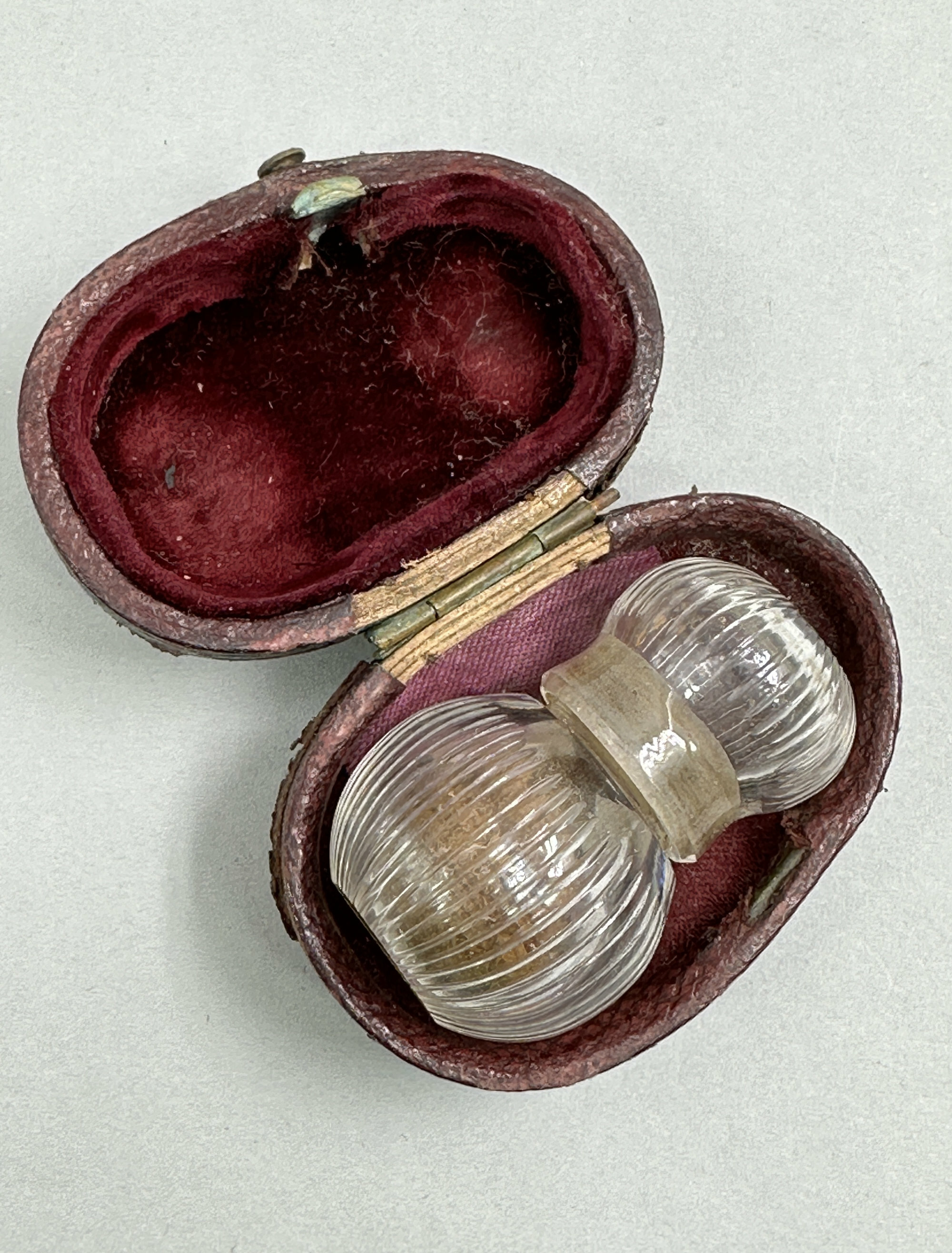
Georgian small glass scent bottle in a fitted Etui case circa 1800
Price: £45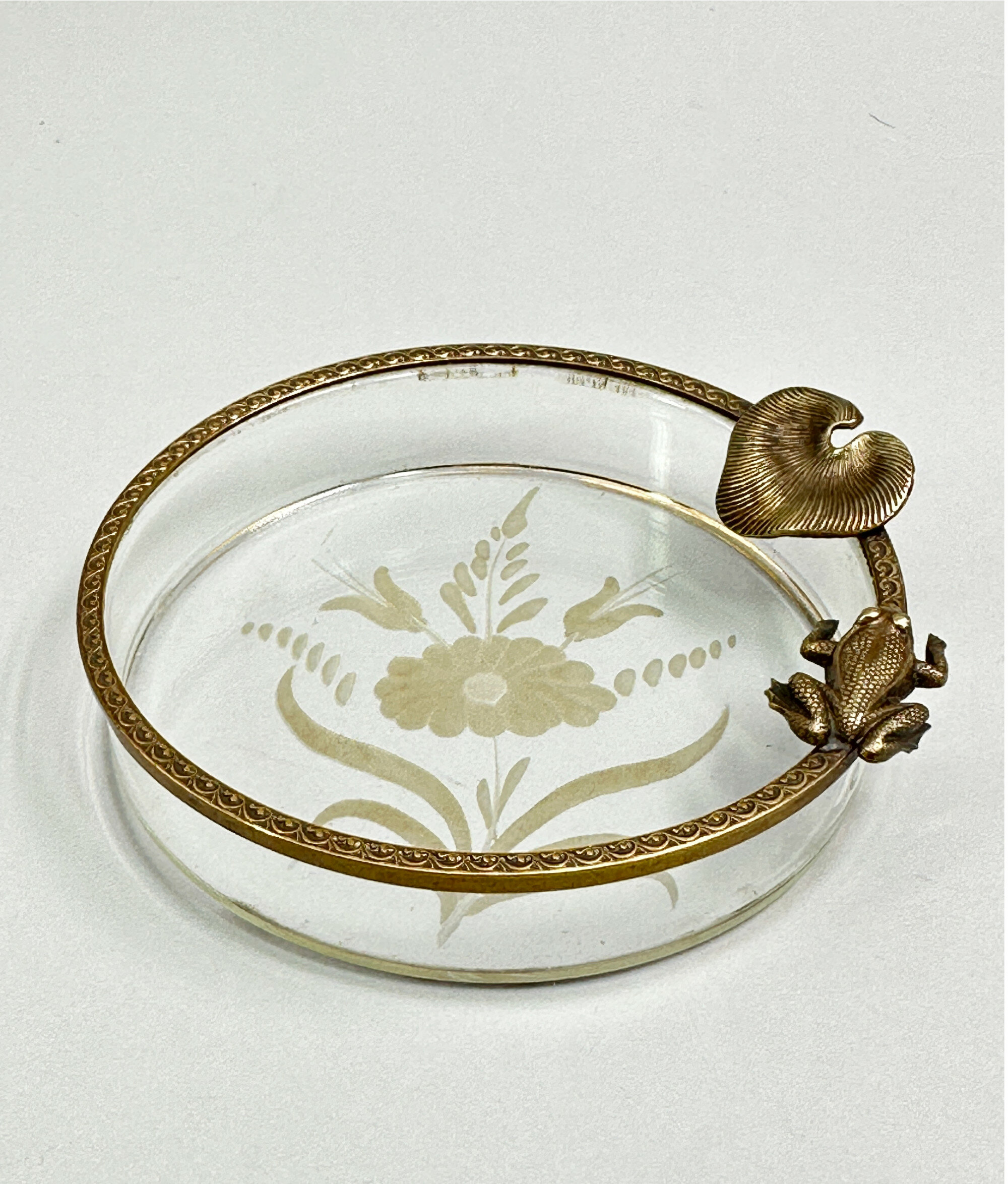
Fine Quality engraved French Glass Dish with naturalistic Ormolu Mounts, early C20th
Price: £25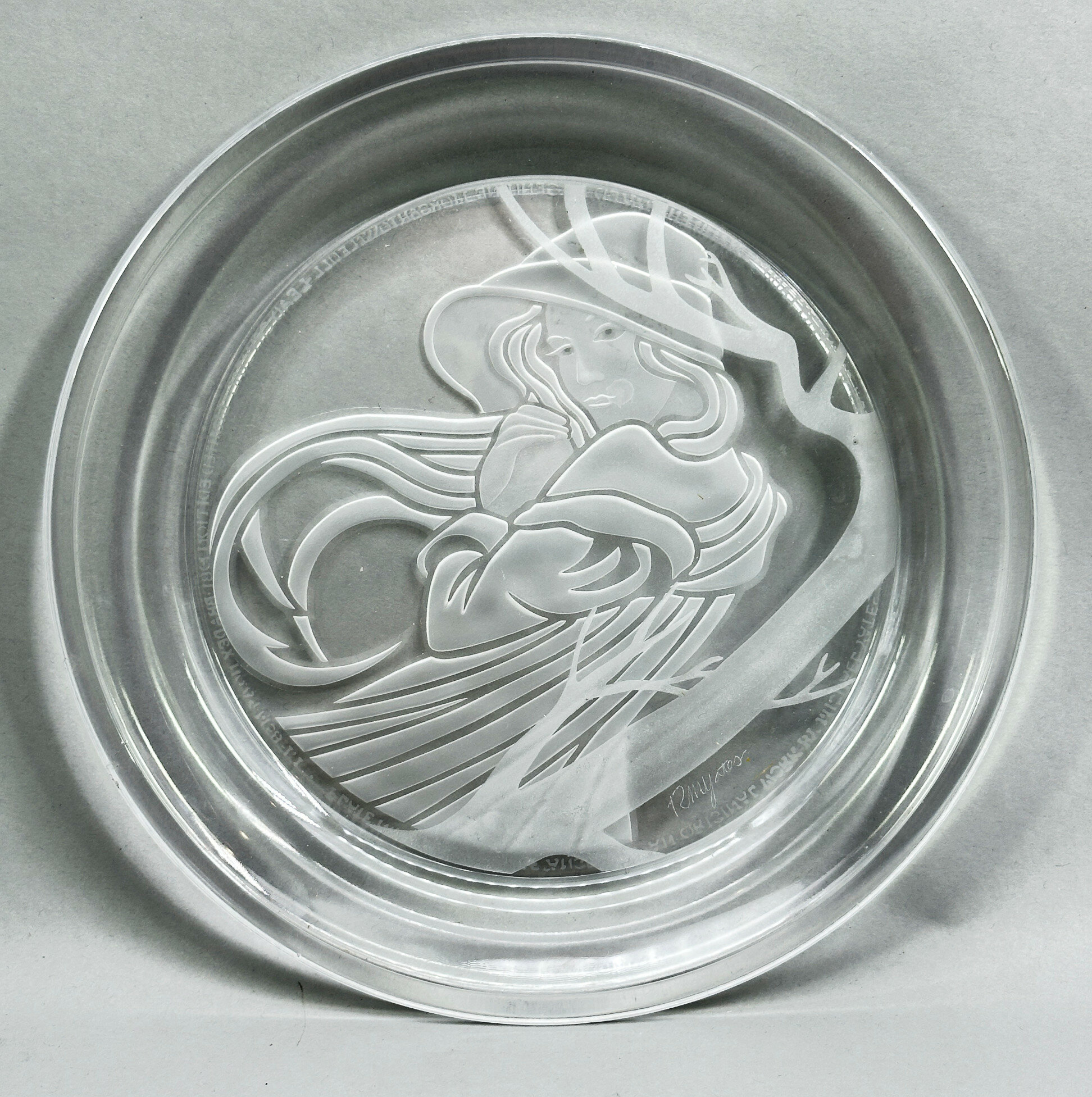
Engraved Glass Dish, Angelica, by Michael Yates, Country Ladies Series, 1981
Price: £20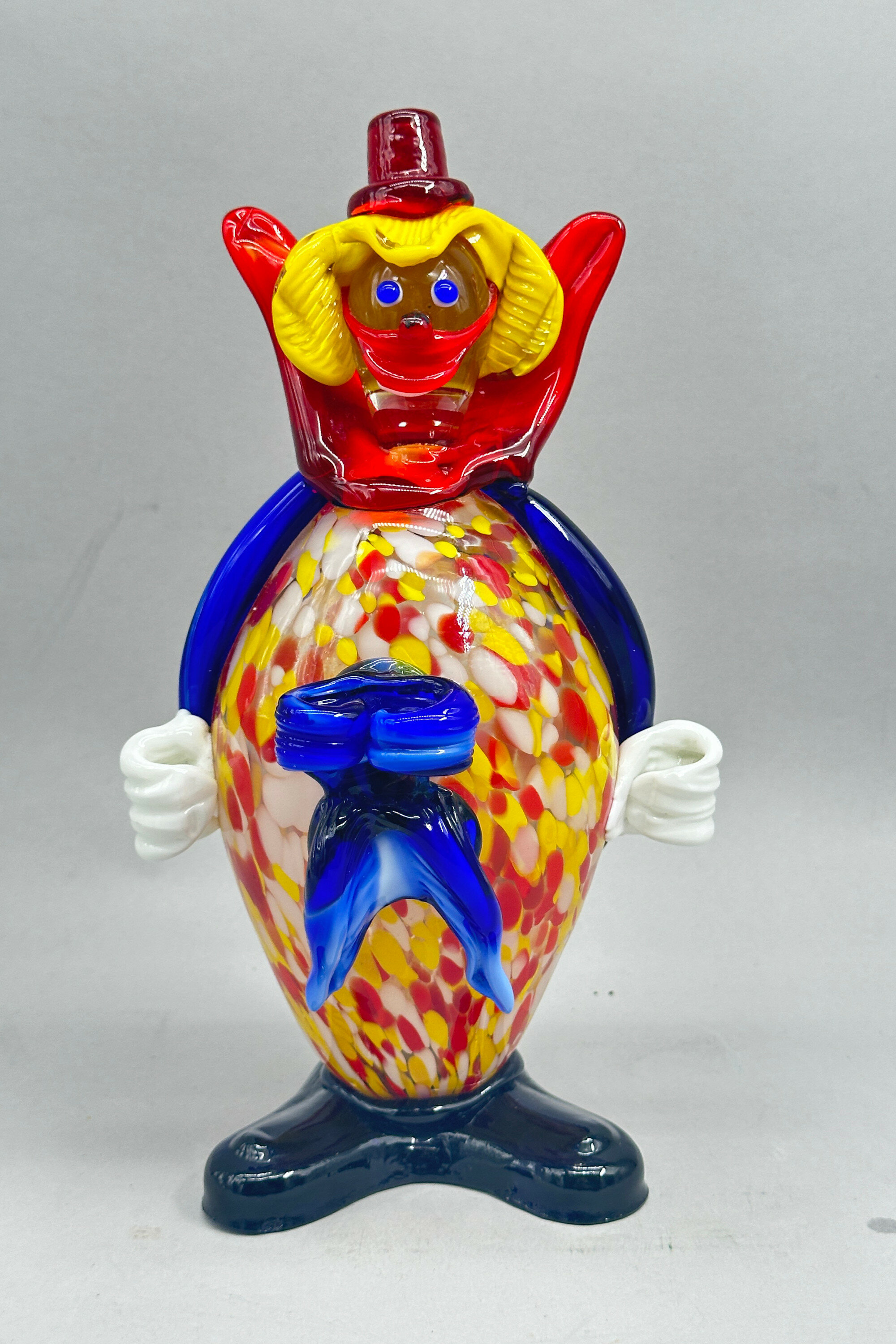
Murano Glass figure of a Clown, mid C20th
Price: £125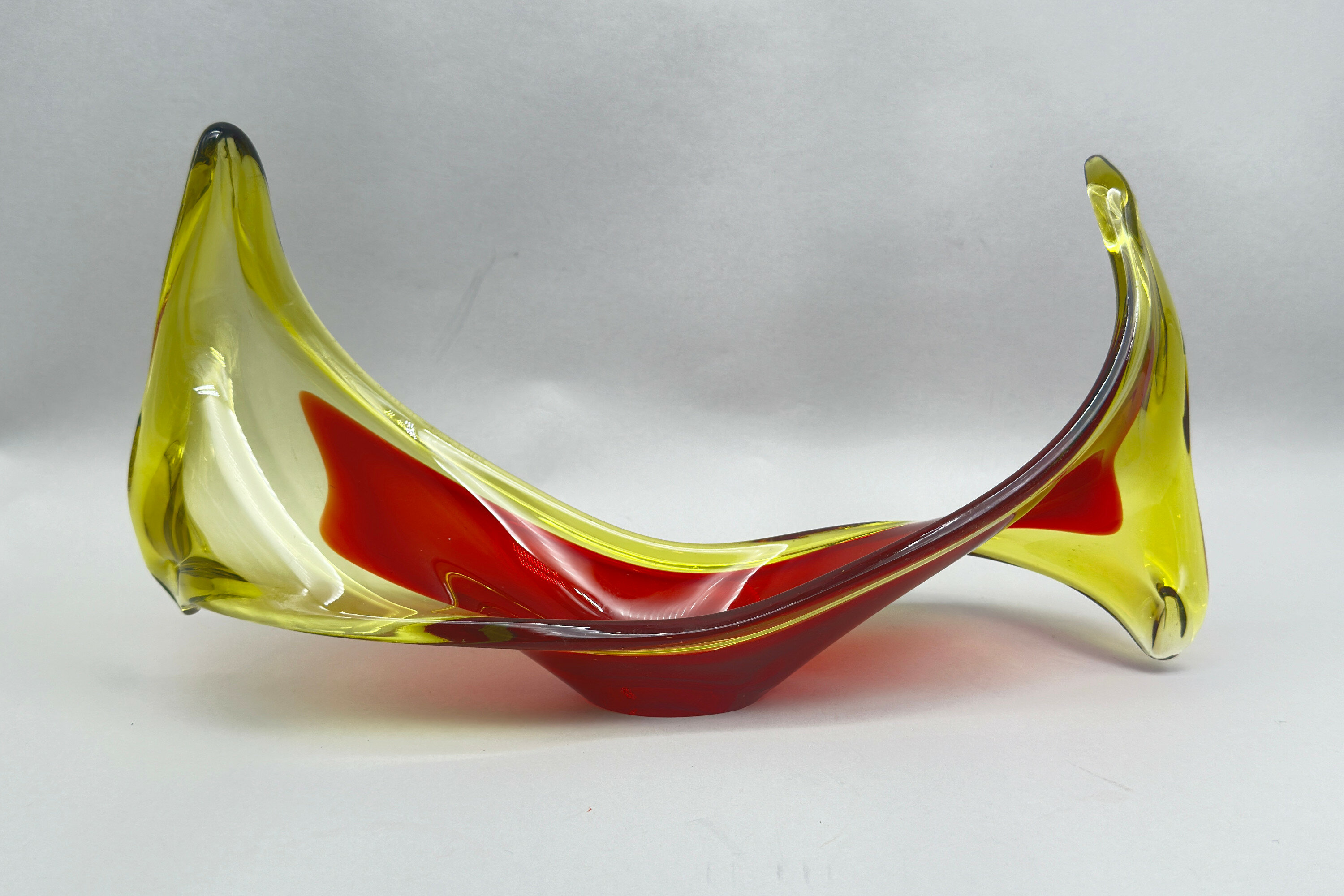
Viartec Murano Style Selenium Red & Orange Glass Sculptural Dish, Spanish 1950s/1960s
Price: £55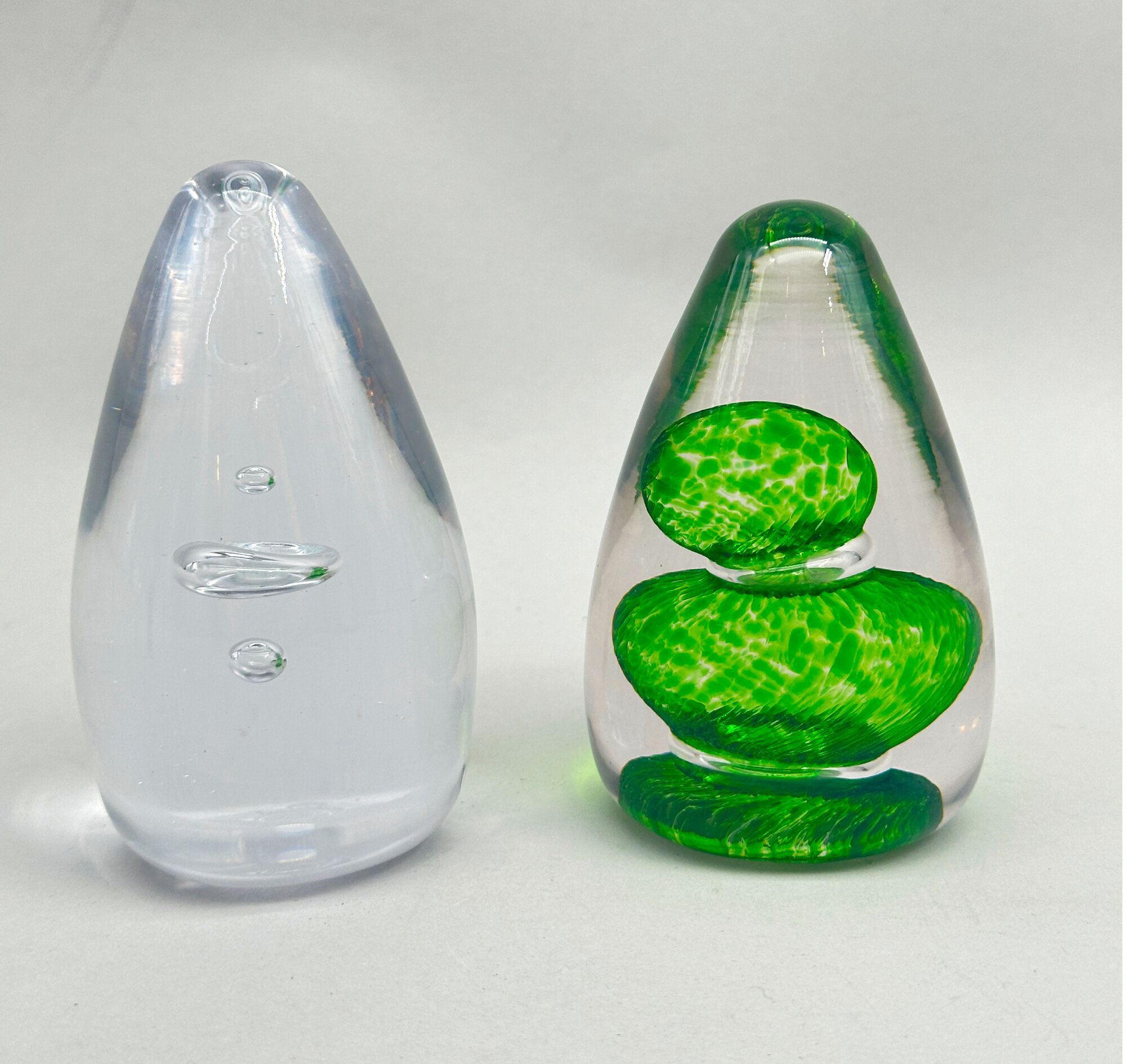
Two Wedgwood Glass paperweights designed by Ronald Stennett-Wilson, late C20th
Price: £40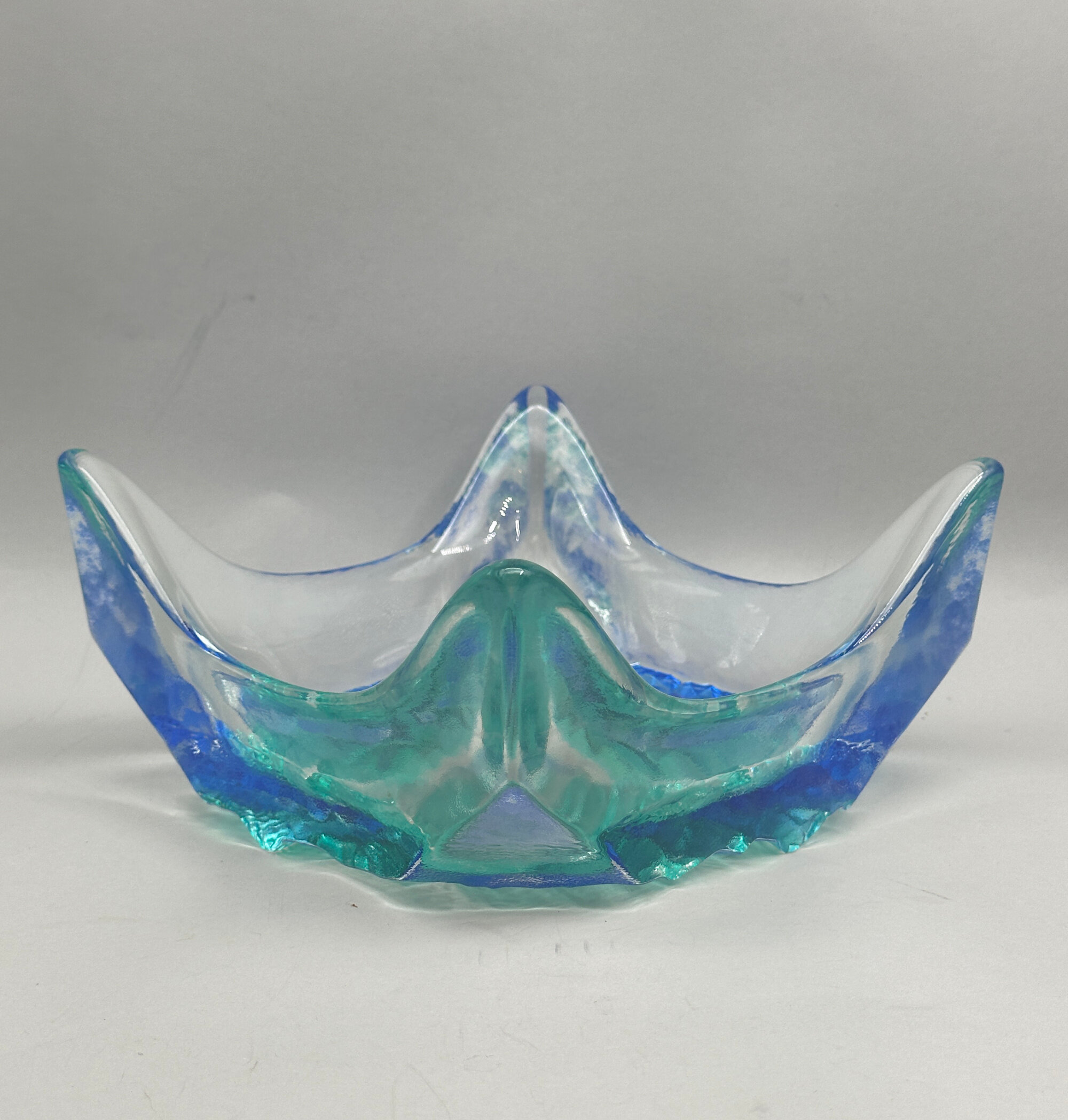
Blue and Green Ice Glass Square Bowl, designed by Tapio Wirkalla for Iitala Finland, late C20th
Price: £55The Finnish designer Tapio Wirkkala (1915–1985) was a major figure of post-war design, working in a wide variety of media including ceramics, wood and glass as well as postage stamps, bank notes and even light bulbs. His first piece for Iitala was produced in 1946 and the commercial ‘Tapio’ collection from 1954. Some of his ‘ice glass’ effects took the Iitala craftsmen many hours to perfect the glass blowing techniques required to produce them but enjoyed immense popularity. These chunky bowls, almost brutalist in style, were produced in the 1970s and 1980s and are an excellent example of his work for the popular market.

Four Art Deco style small Glass Vases with silver decoration, possibly Murano 1930s
Price: £55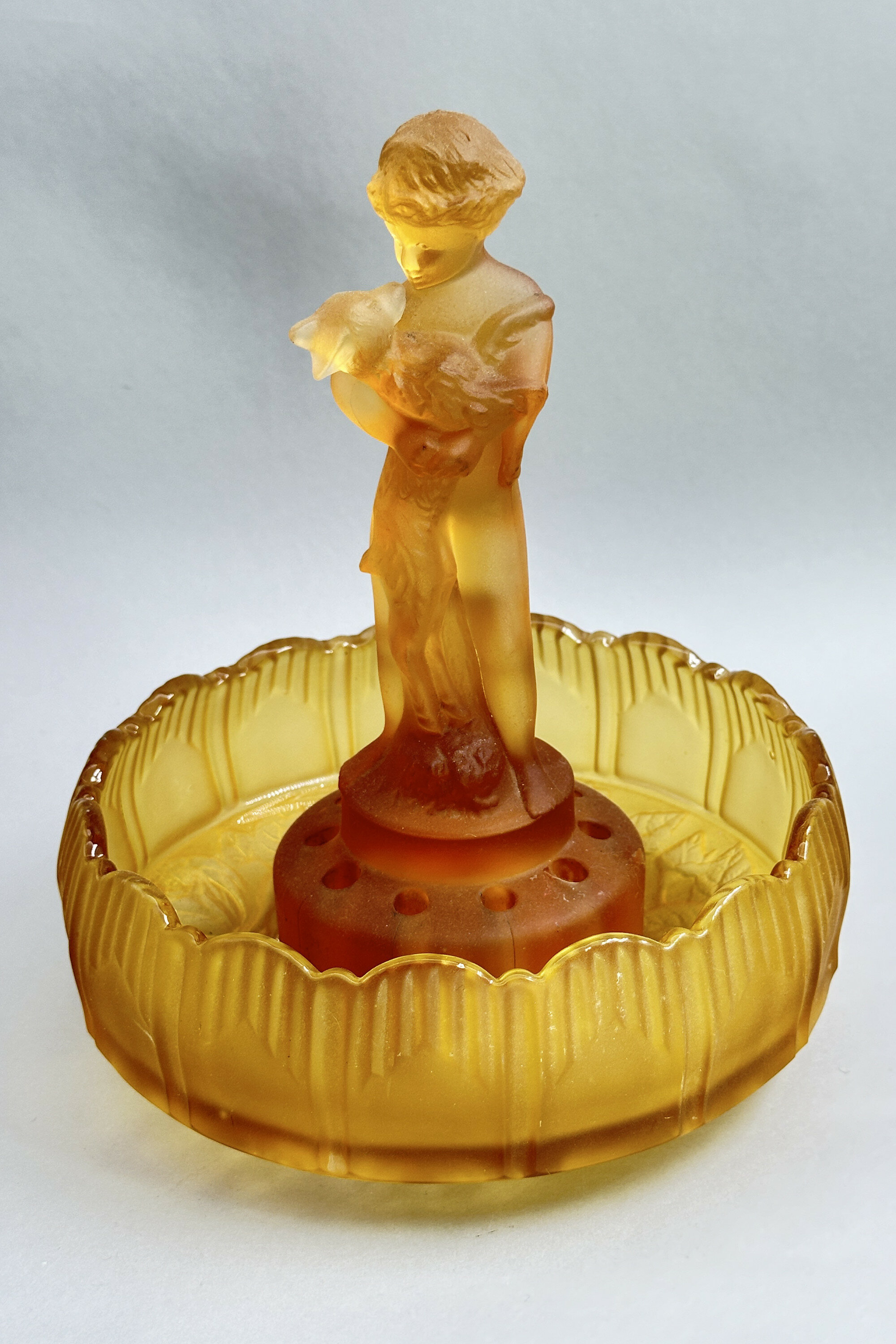
Sowerby Amber Glass Centrepiece circa 1930
Price: £75The Sowerby family came from the North West of England near Carlisle and settled in Gateshead in the late eighteenth century. The firm Sowerby Glassworks is known from 1807 onwards and continued production until 1972, concentrating on pressed glass. Catalogues of their wares still exist and they produced pieces in a wide variety of styles and shapes which retain their popularity today.
The centrpiece figurine, which was intended as a flower holder or ‘frog’, is rather unusual; normally the figures are female but the style of the modelling is identical. Similar designs to the bowl can be found in a 1936 catalogue but versions of it even appear in another catalogue from 1882. Many centrepiece/bowl combinations are found and some of them are not always original. This may possibly be the case here but if so the ‘match’ is extremely pleasing to the eye and the two elements set one another off perfectly to produce a striking example of Art Deco decorative design.
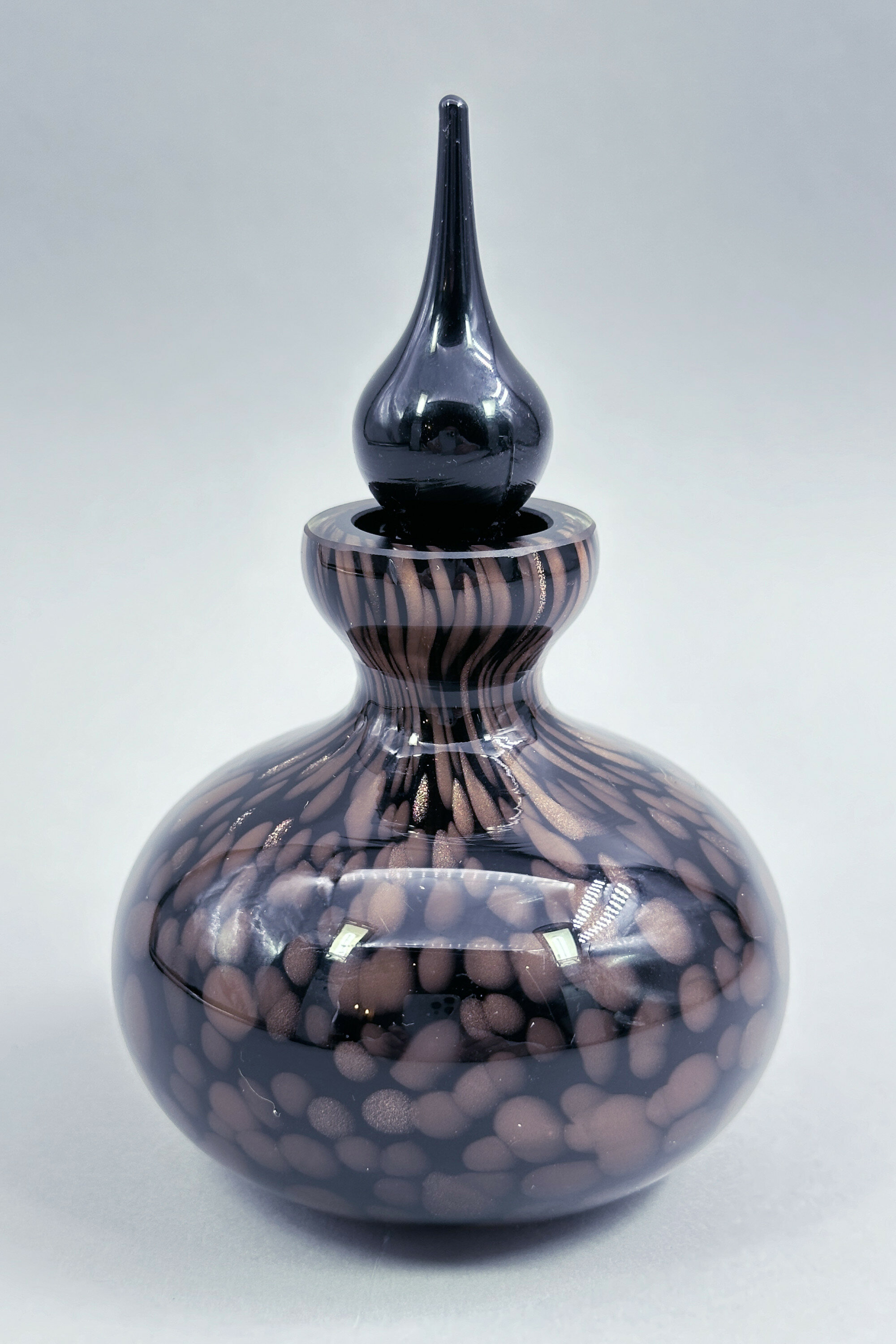
Black and Gold Copper Glitter Art Glass Scent Bottle, probably Murano late C20th
Price: £55
Cranberry Glass Vase circa 1900
Price: £30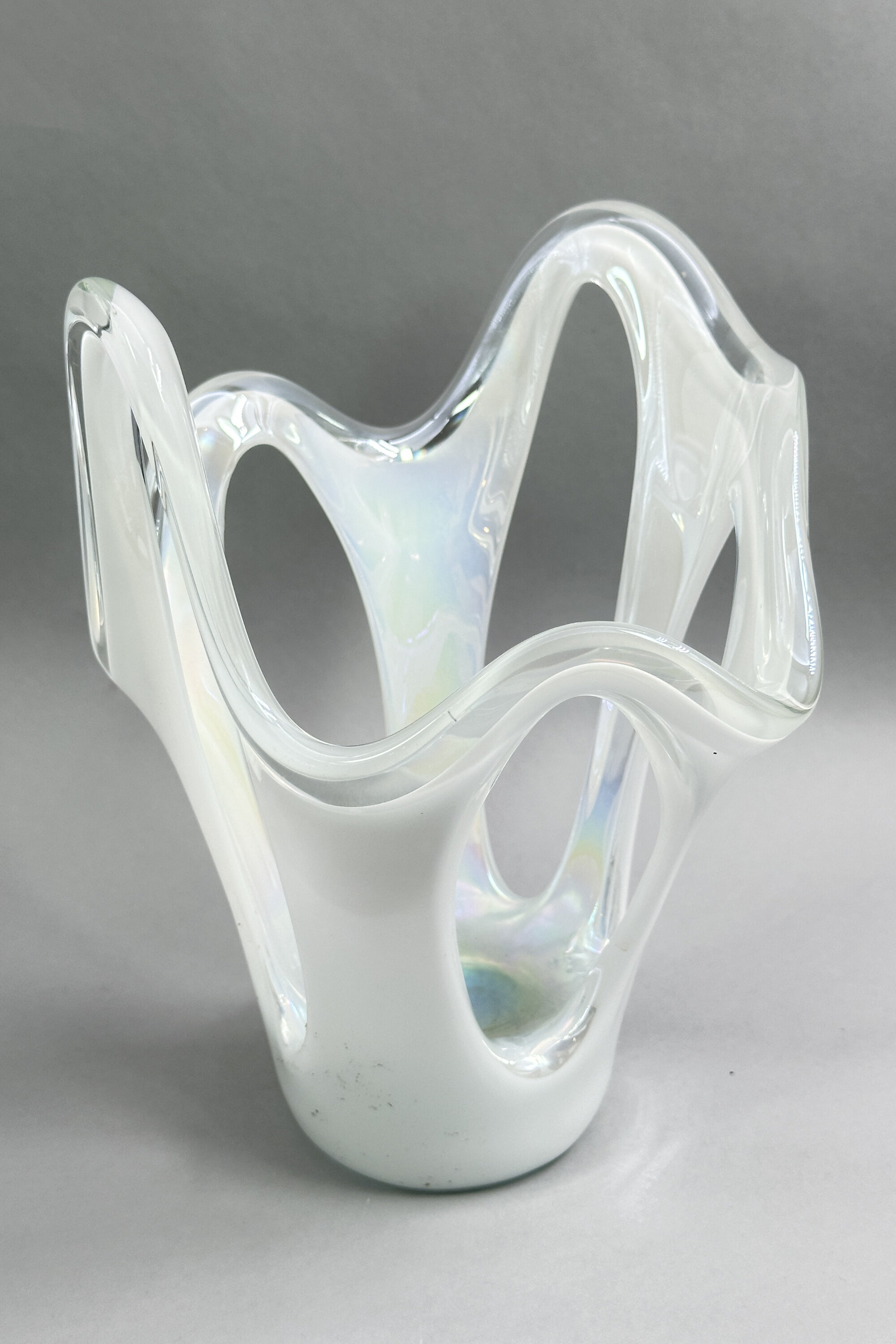
Murano White Glass Vase of abstract organic form, 1960s
Price: £55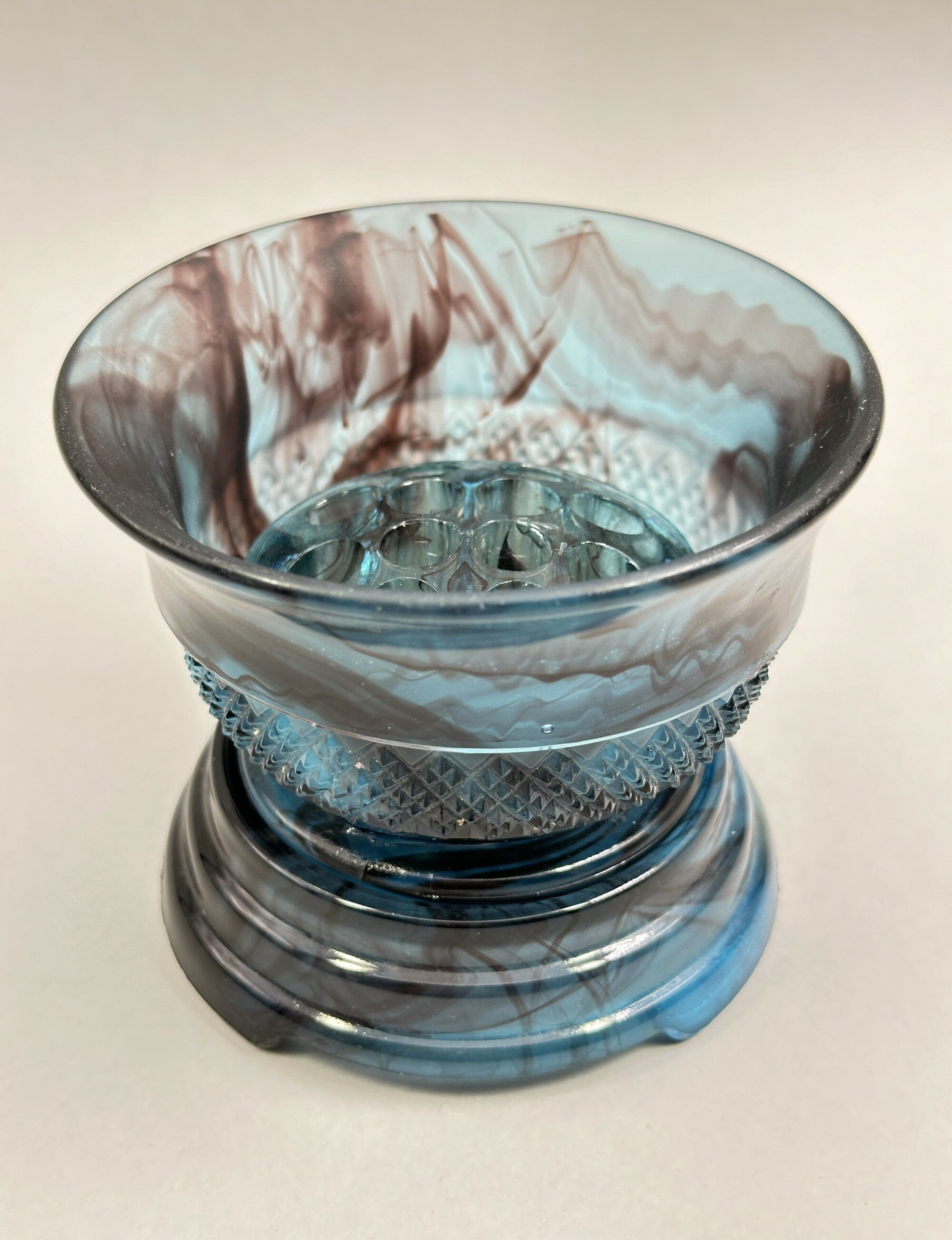
Davidson Glass Topaz Briar Table Centrepiece, 1930s
Price: £45George Davidson founded the Teams Flint Glass Works in 1867, which later became known as George Davidson & Co. In the 1880s the company began producing pressed glass tableware in a variety of shapes and by the 1920s their designs began to reflect the new Art Deco trends. The firm continued production until the 1980s, closing in 1987. Some of their catalogues still exist and one from the early 1930s shows a piece very similar to this one (see image 11). The colour is known as ‘Topaz Briar’ and the swirling effects resemble other pieces in their ‘cloud glass’ range, a pattern for which the firm was famous.
The colourings and small size of this piece make it an unusual find amongst the Davidson wares which can be seen today and the presence of all three elements (perfect and complete) make it a desirable addition to a collection of twentieth century pressed glass.
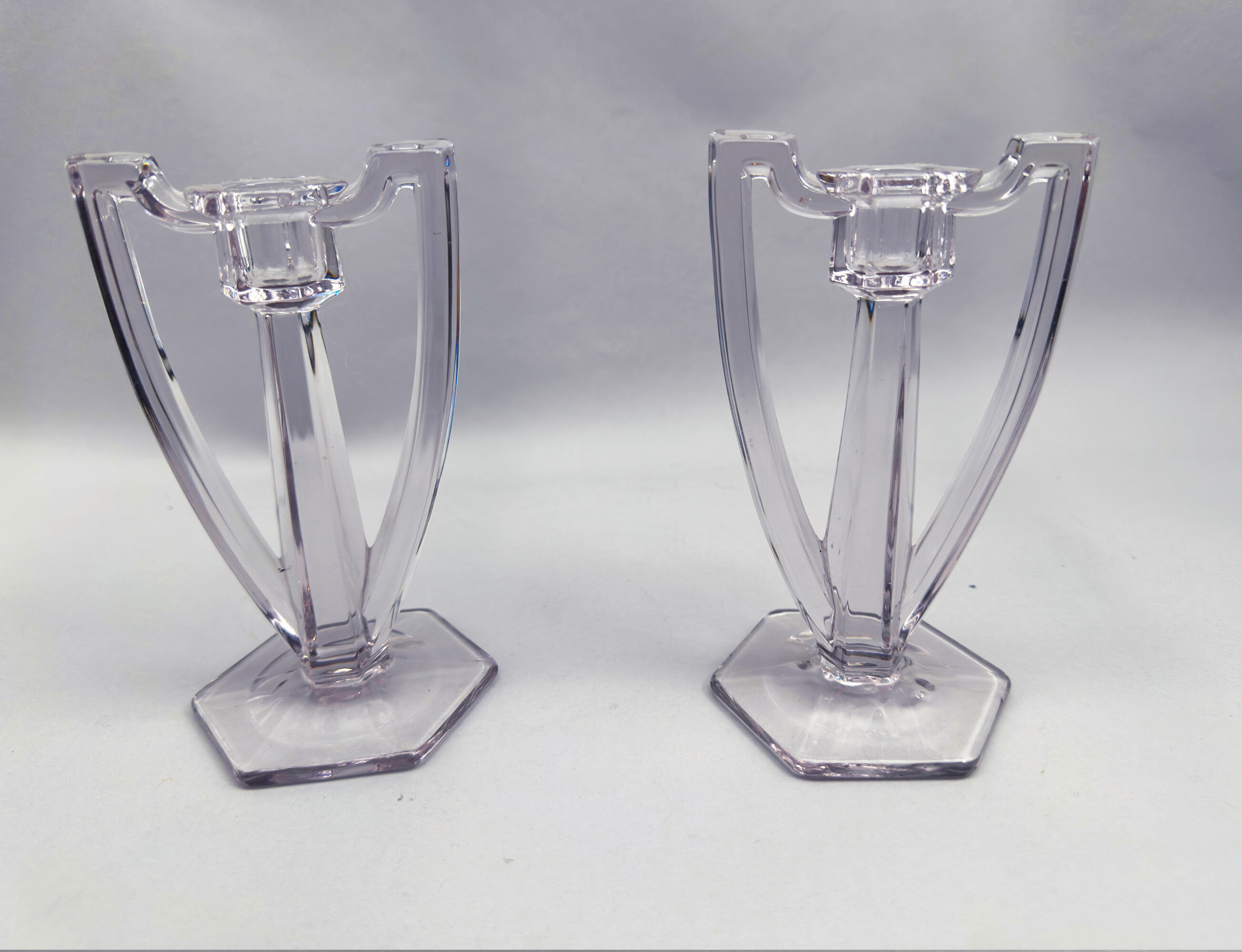
Pair of Glass Candlesticks, Davidson Chippendale, 1930s
Price: £25Chippendale glass was designed and patented in the USA in the early years of the 20th Century and imported into Britain. The moulds were purchased by a Charles Pratt and Davidson’s used them to produce this range of glassware purchasing the exclusive rights to manufacture Chippendale glass when they realised its popularity. Various forms were included in the range and manufactured by the pressed glass technique for which the firm had become famous. The mould marks of this pair can be clearly seen at the bases (see image 4). The clean angular lines are typical of art deco designs and Davidson’s produced here a model which was both practical and decorative.
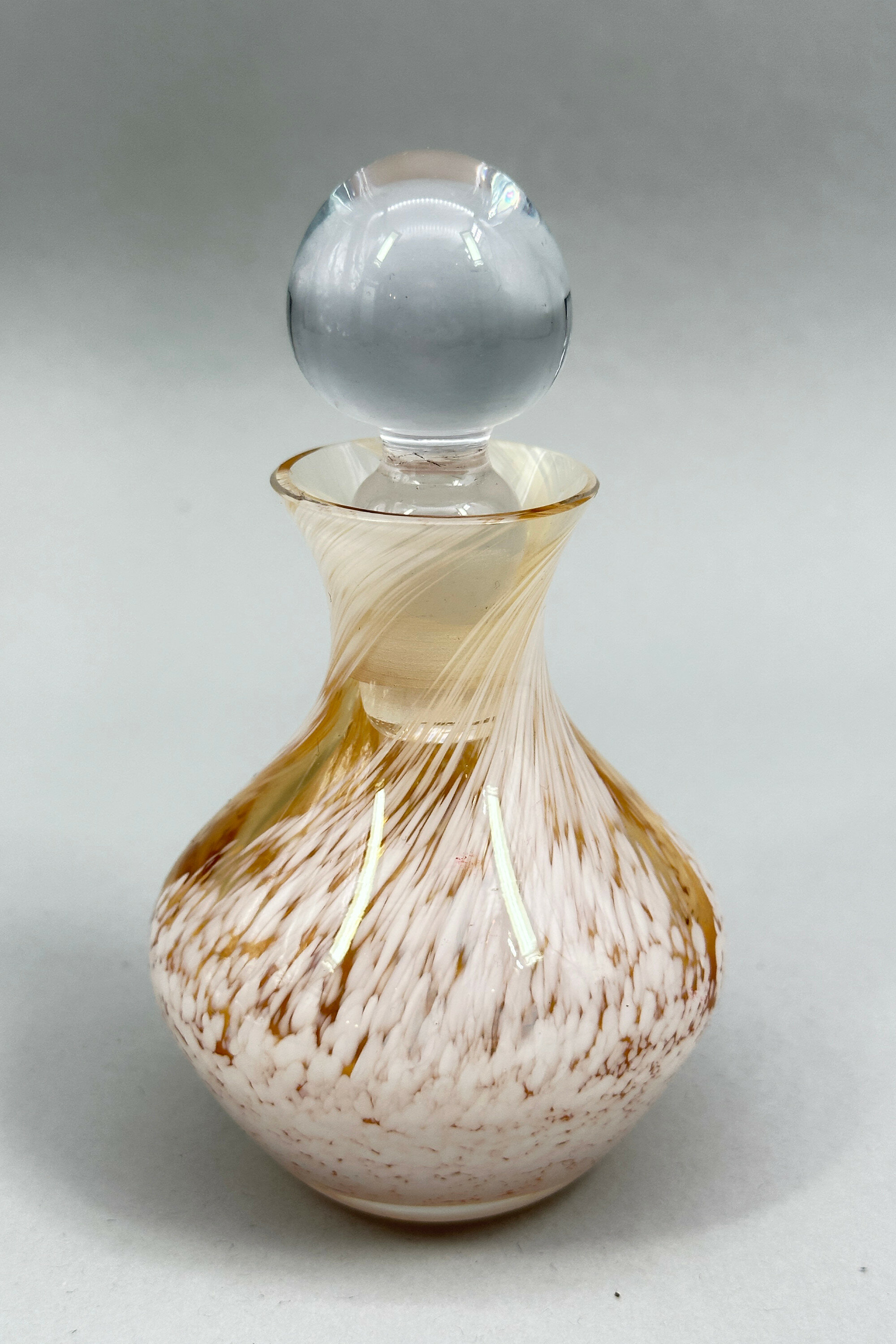
Perfume Bottle and Stopper, Island Studio, Guernsey, late C20th
Price: £30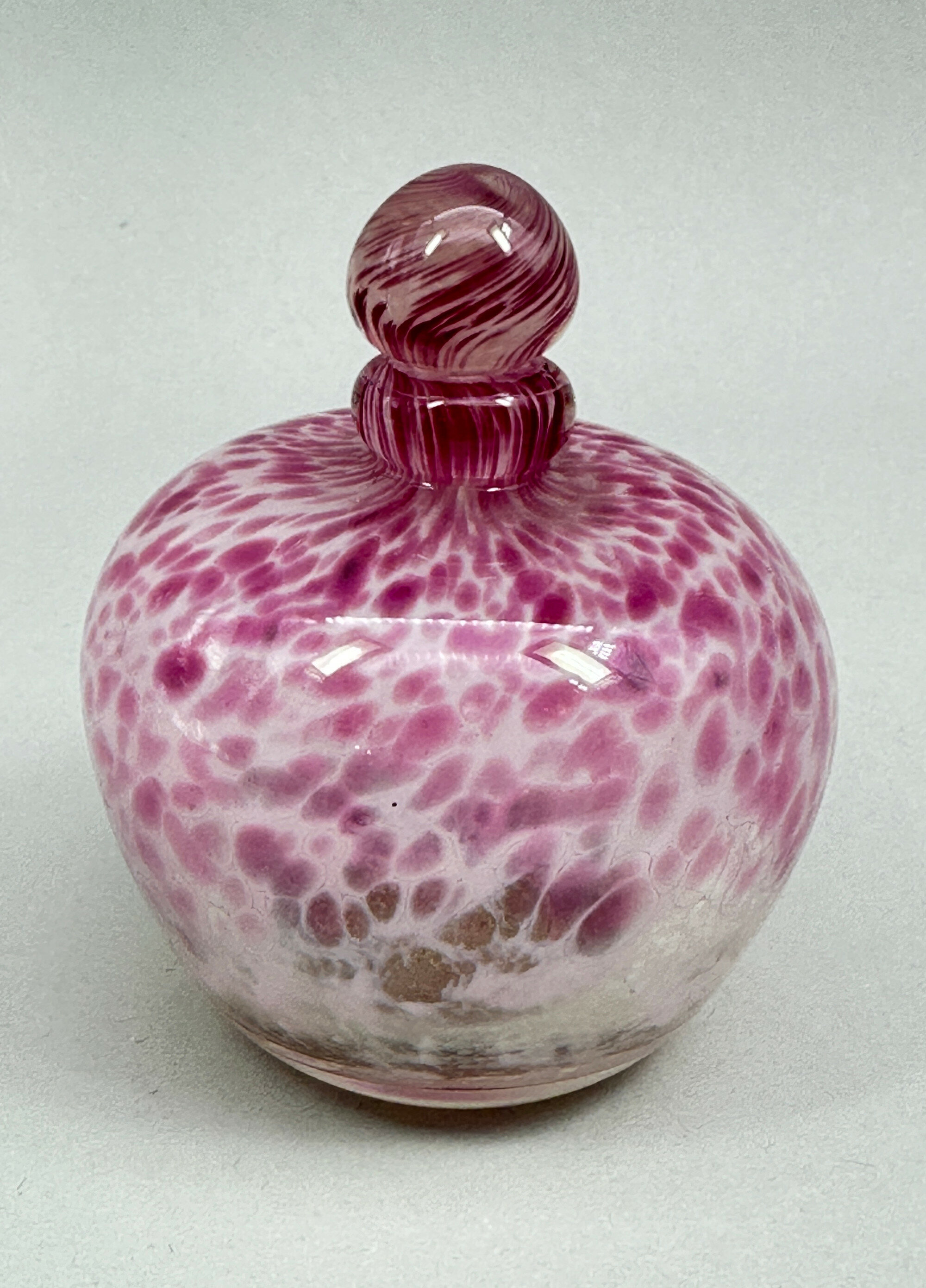
Caithness Glass Perfume Bottle and Stopper, late C20th
Price: £30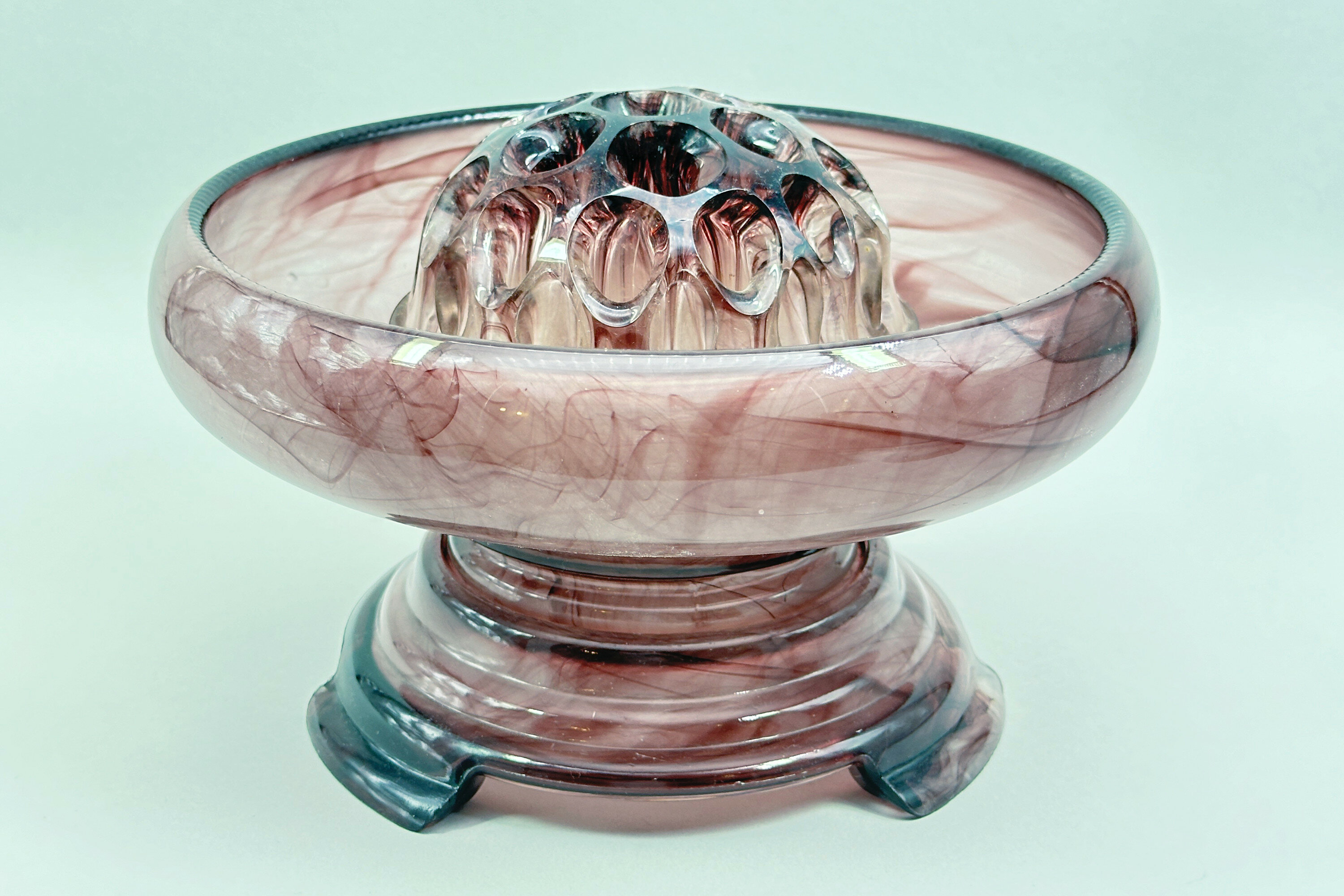
Art Deco Davidson purple cloud glass bowl, stand and frog, 1930s
Price: £75This model can be seen in the firm's catalogue for 1931 where the bowl and stand are combined with a separate pierced flower holder in the same style. No doubt the size of the ‘frog’ was up to the purchaser who could choose from a range of dimensions which probably explains the slightly different proportions here to the catalogue image which otherwise illustrates our example extremely well, even down to the milled edging to the rim of the bowl. With its archetypal shape and colouring this piece would be an excellent addition to any Art Deco collection as well as providing a striking and decorative item for a contemporary interior.

Vintage Cobalt Blue Glass Perfume Bottle and Stopper, 1930s
Price: £25

A Pair of Art Deco Pressed Glass Trophy Form Vases, Davidson, 1930s
Price: £45
A Pair of Glass Vases or Paperweights, probably Selkirk Glass, Scotland, 1980s/1990s
Price: £25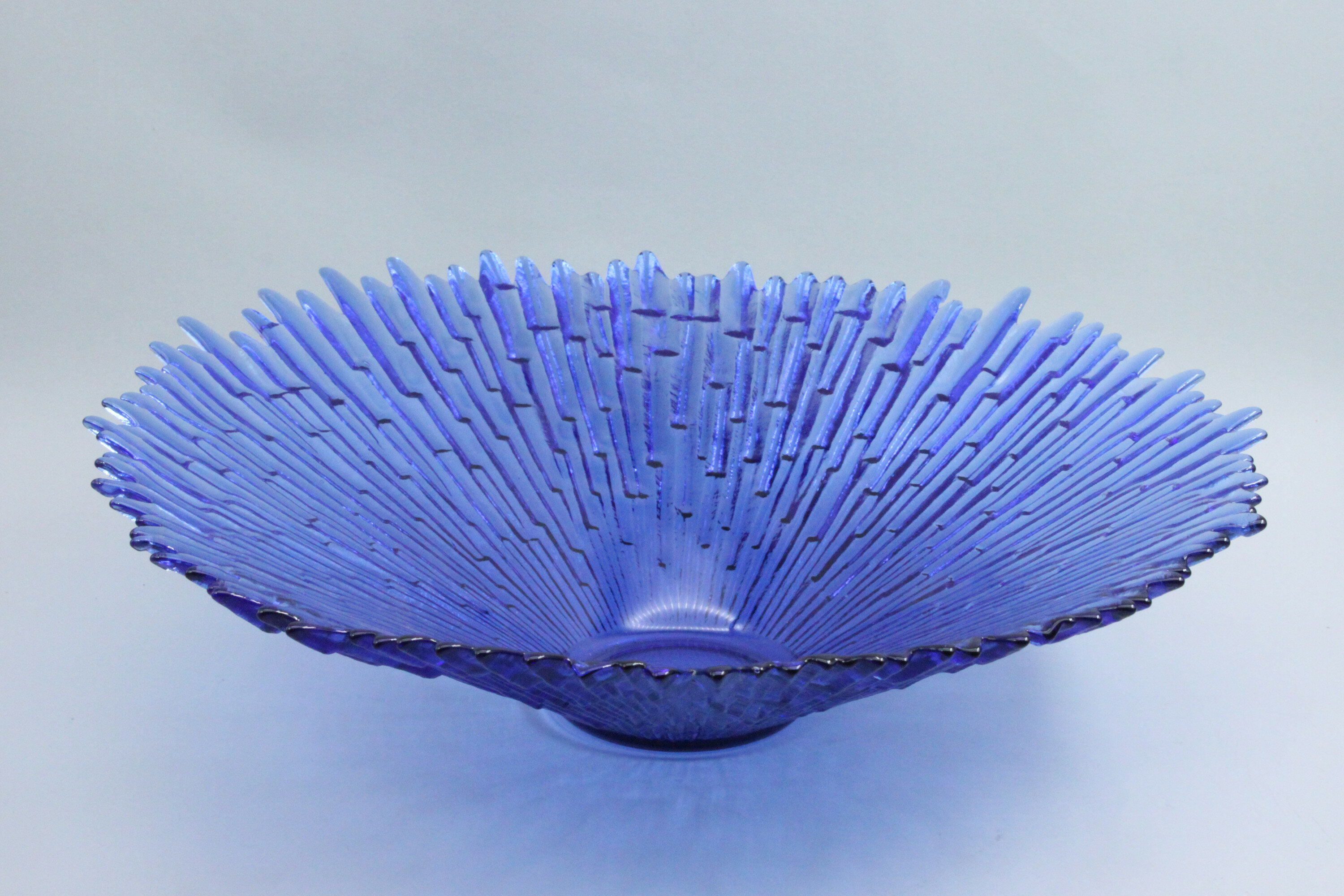
A Blue Glass Icicle Bowl, designed by Tauno Wirkalla for Humppila Finland, late C20th
Price: £150Tauno Wirkalla was the brother of the celebrated Finnish designer Tappio Wirkalla and like him favoured an ‘ice glass’ effect in his designs. He was one of the designers for the Humpilla Glassworks in Finland which was founded by the Helander brothers in 1952 and was then subject to various takeovers, finally being acquired by the firm Nuutajarvi (for whom the Helander brothers had originally worked) in 1986. Wirkalla produced many ‘ice glass’ designs for Humppila, some of which are signed and some still surviving with their factory labels, which is not the case here. This bowl is of an exceptionally large size and has miraculously survived undamaged with all its pointed edges intact. A truly distinctive centrepiece recreating the style of an earlier era.
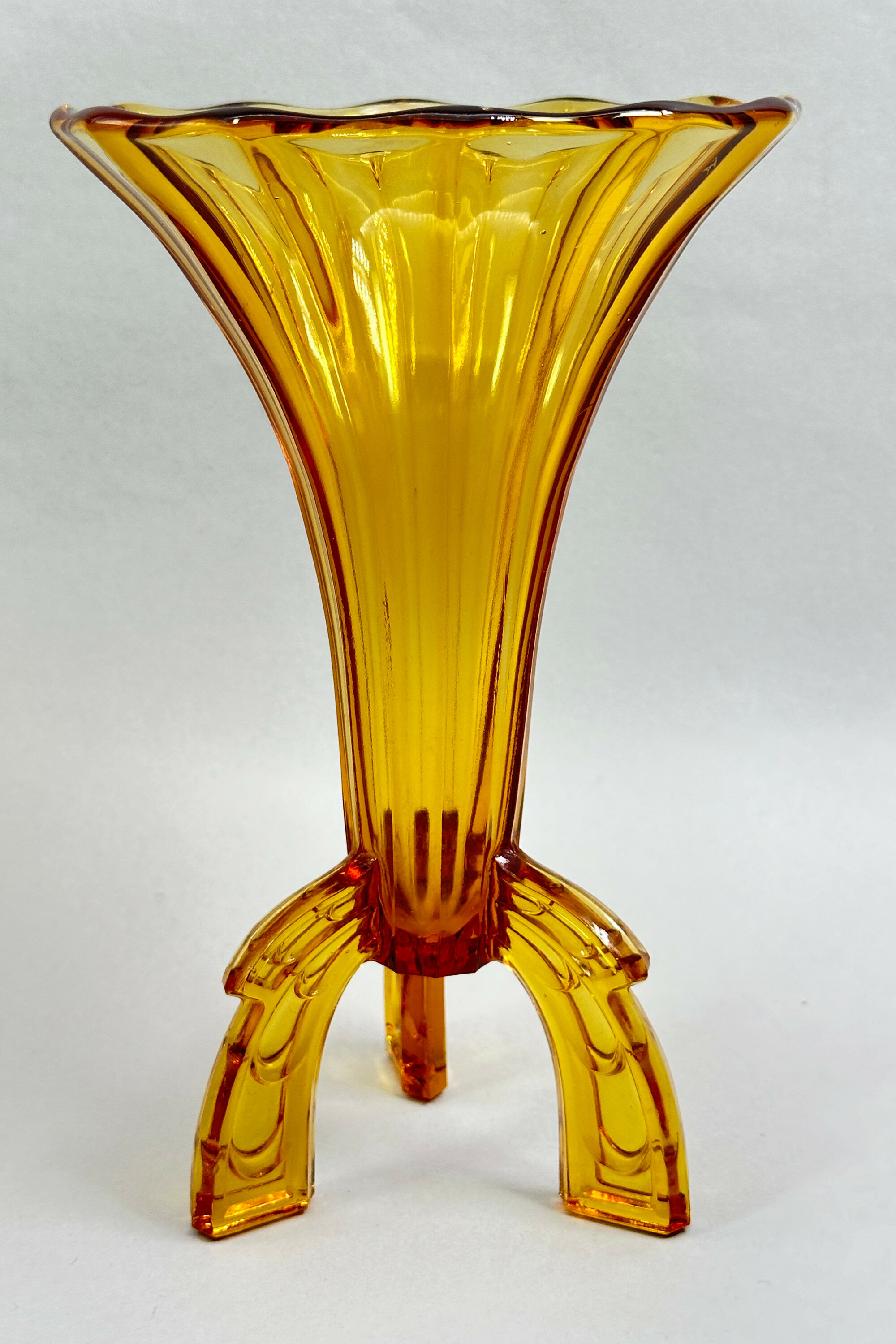
Art Deco style Amber Glass Rocket Vase, probably Czech Rosice 1930s
Price: £45
A set of three Millefiori Glass Paperweights, possibly Italian Murano, late C20th
Price: £75This set is sold with matching contemporary illuminated stands which enhance the decorative effect considerably and provide a modest light display installation for the home (see illustrations 5 and 6).
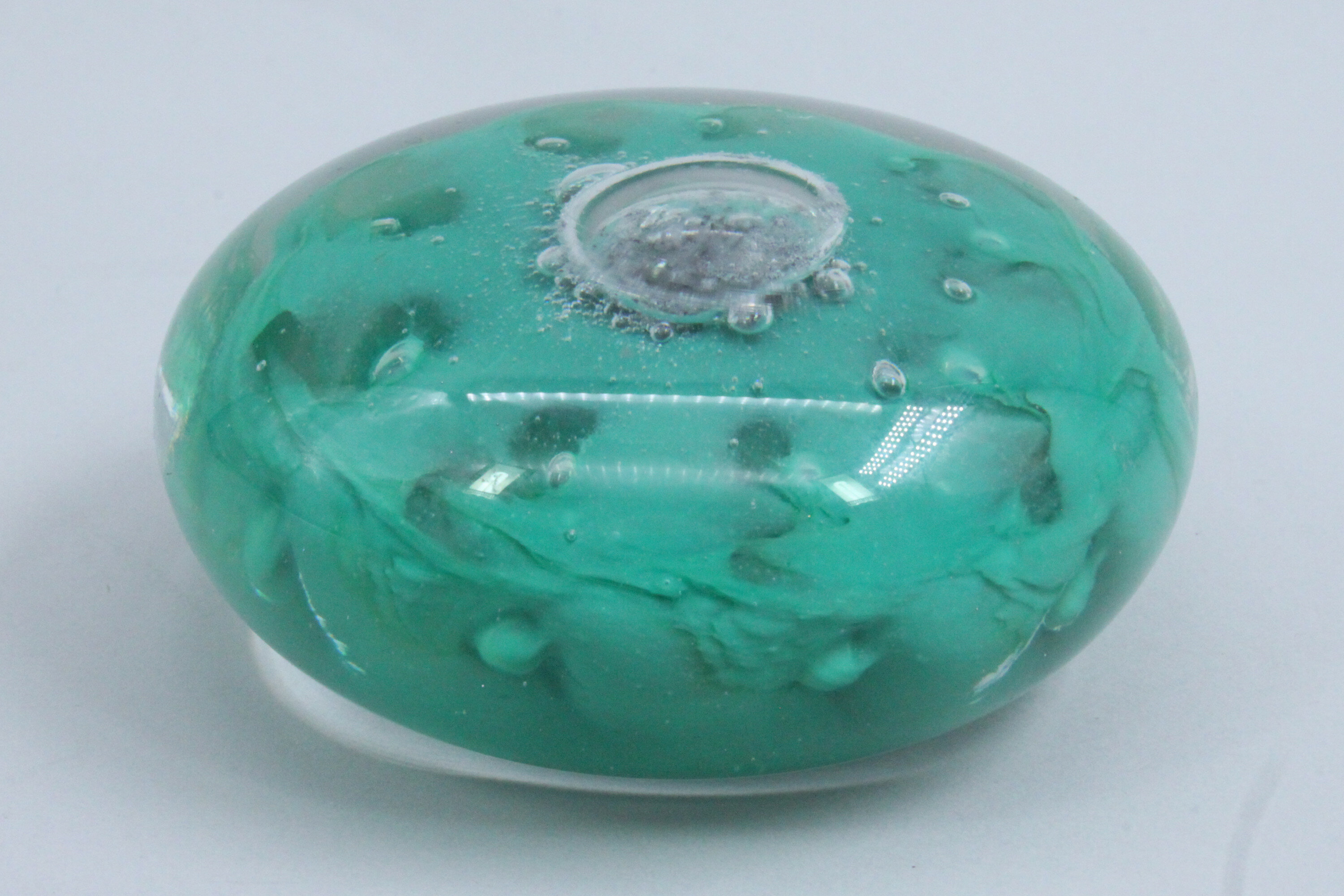
A green glass paperweight, Tweedsmuir Glass, Chris Dodds, late C20th
Price: £25It is sold with a matching contemporary illuminated stand which enhance the decorative effect considerably and provides a modest light display installation for the home (see image 6).
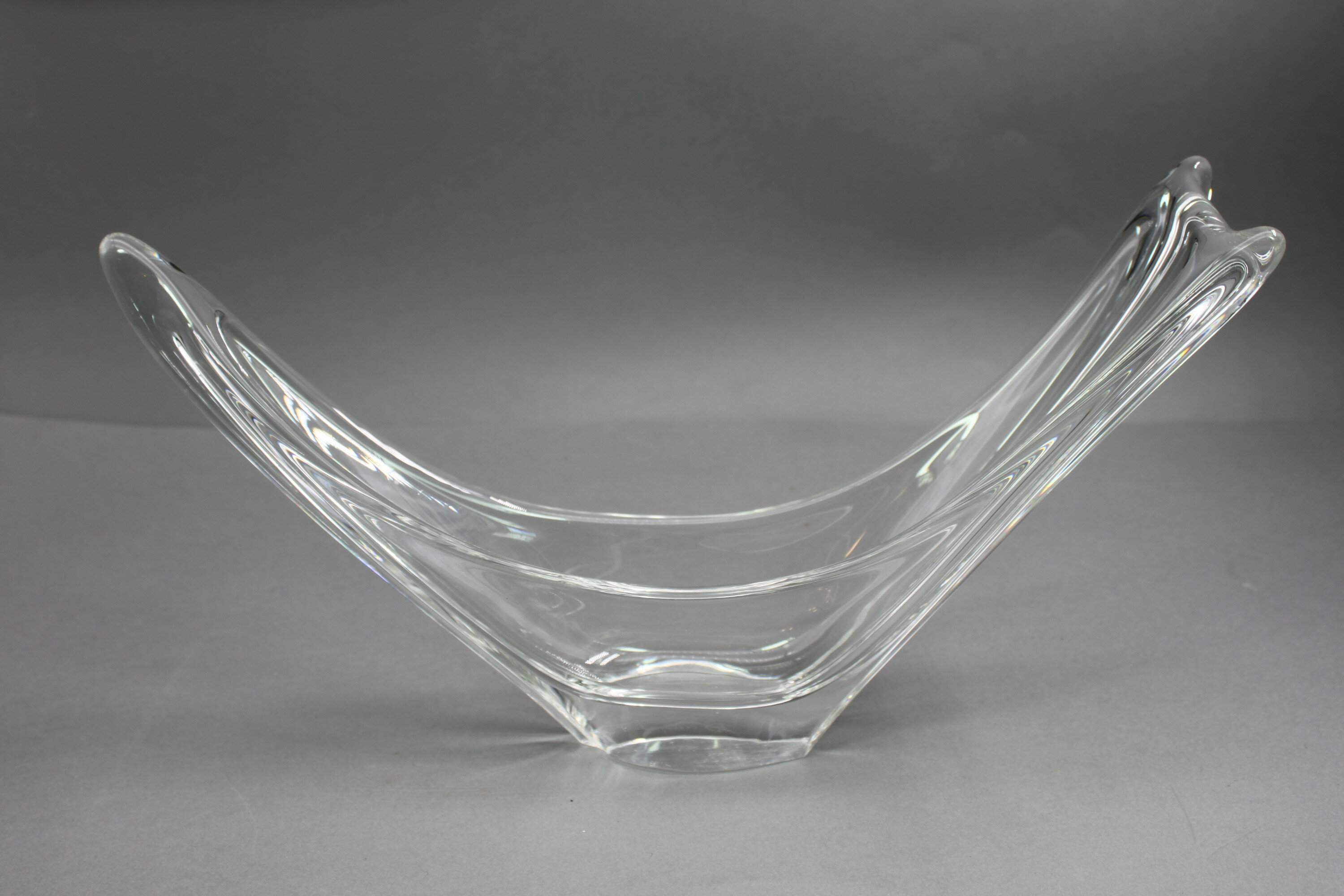
Daum Crystal Glass Swallowtail Bowl, signed Daum-France circa 1960
Price: £150Vases in this form were produced by the well known French maker Daum in the 1950s and the 1960s. The sizes and designs can vary with some examples measuring up to two feet and intended as table ornaments. This piece is rather smaller and perhaps more elegant. The crystal glass is of extremely high quality and reflects the light in a very attractive way. The weight is good and the glass itself is thickly blown and expertly formed, The flat base shows signs of bevelled edging at the exterior and one of the sides bears the typical etched Daum mark with 'Daum' and 'France' separated by a device comprising an upright line with two crosses.
The more petite size and the quality of the manufacture and design make this a most appealing example of Daum's work at its best. Dating can be assumed to be around 1960 if not slightly before. A desirable piece indeed for collectors of twentieth century art glass.

Art Deco Style Bagley Glass Vase with fin type handles 1930s
Price: £45
Beautiful Victorian ruby glass scent bottle, circa 1880
Price: £350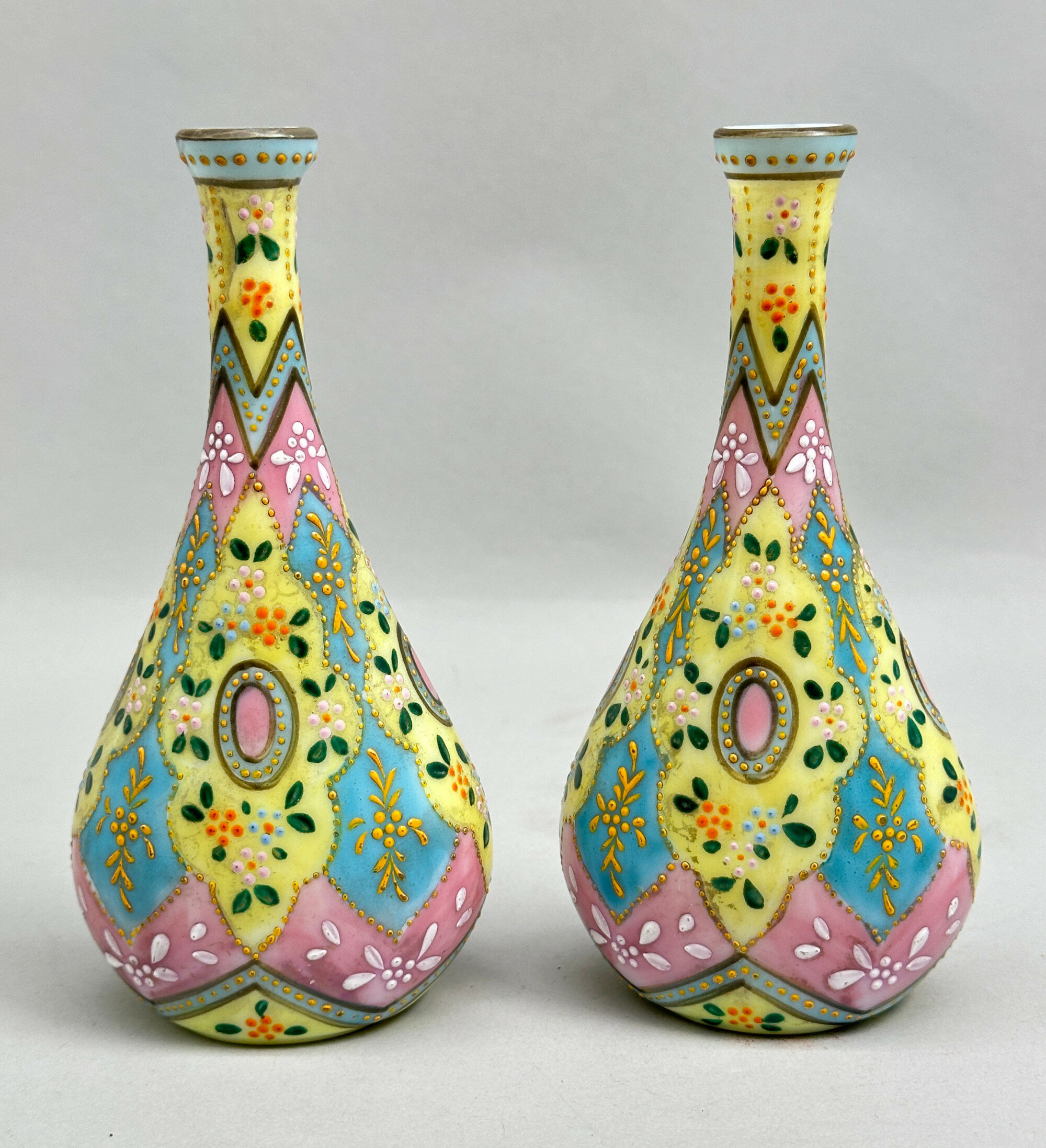
Pair of Bohemian Harrach Glass Vases, Morocco pattern, second half C19th
Price: £95The Harrach glassworks is named after Alois Raimund von Harrach (Count Harrach), on whose estate it was founded in Bohemia, in the early eighteenth century. Managed at first by one Elias Muller, the firm traded under a variety of names becoming known as Harrach in the nineteenth century and Harrachov, the name eventually given to the town where the factory was situated, in the twentieth. These opulent vases were a popular part of its range in the nineteenth century, the pattern being produced in a variety of similar shapes and always as shelf ornament pieces. The decoration here is particularly lavish with an attractive use of colour and has survived in excellent condition making these a desirable addition for collectors of Bohemian glass or admirers of nineteenth century glass style generally.
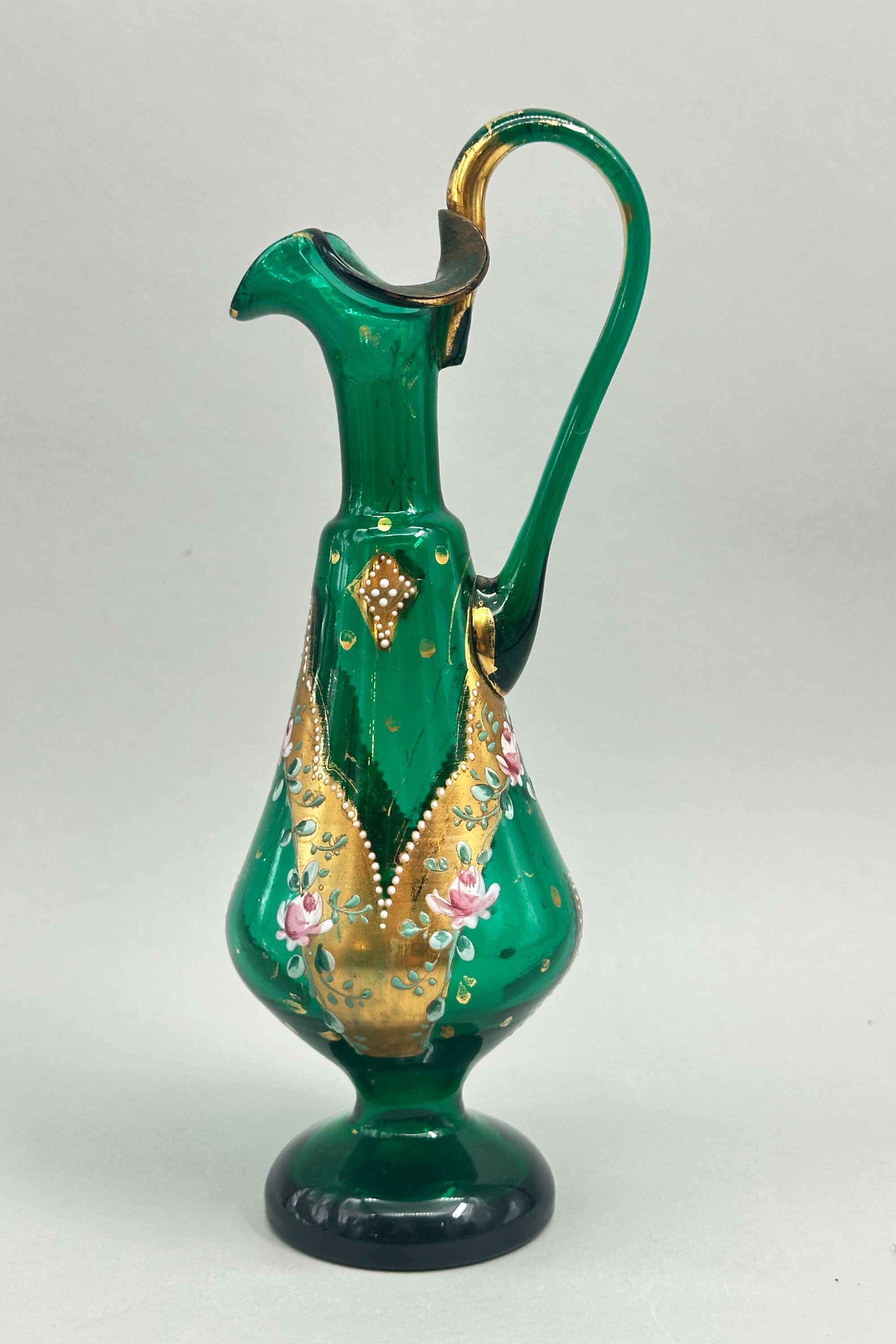
Bohemian Green Glass Moser style Ewer, late C19th
Price: £35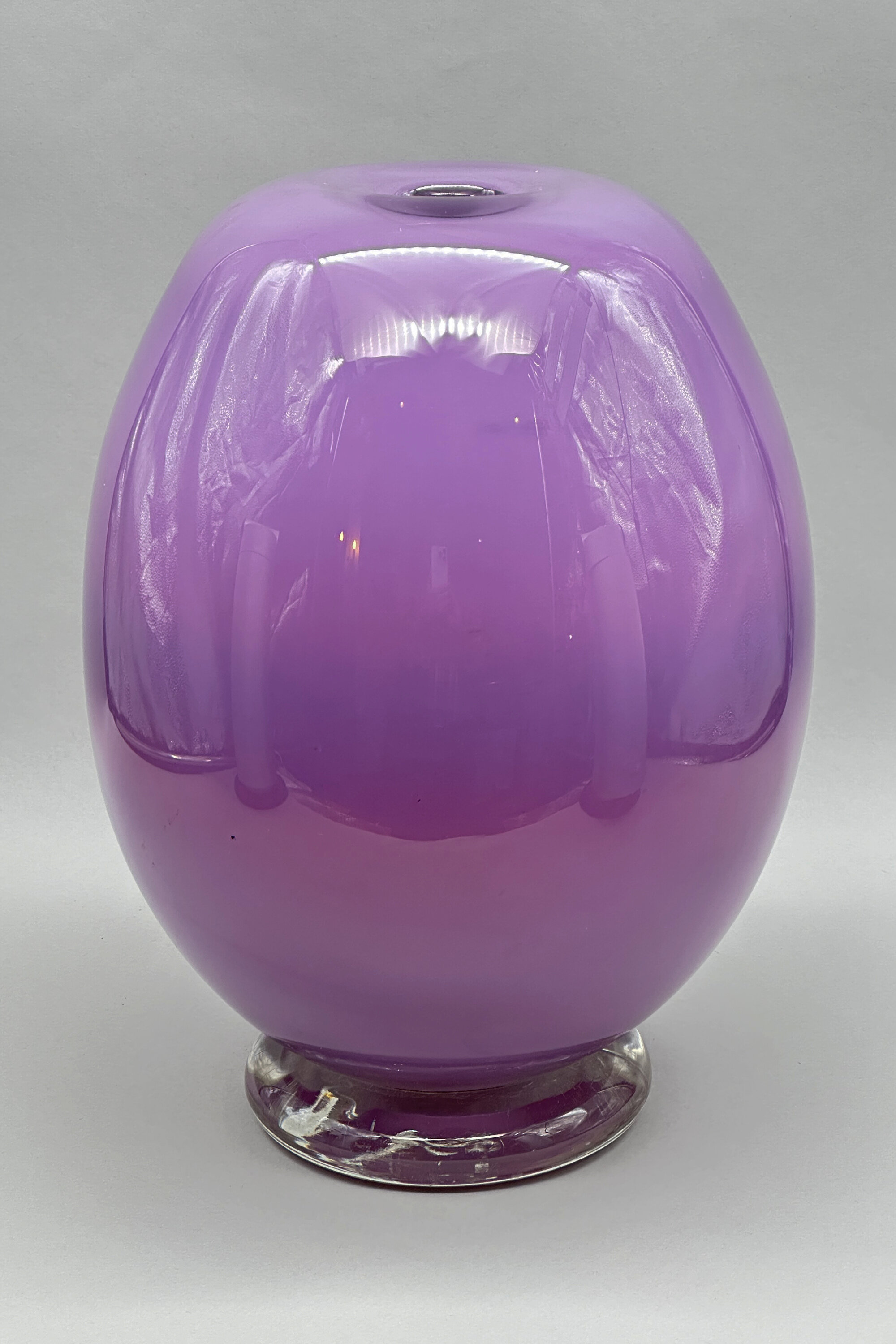
Purple Art Glass Vase by Anthony Stern, late C20th
Price: £150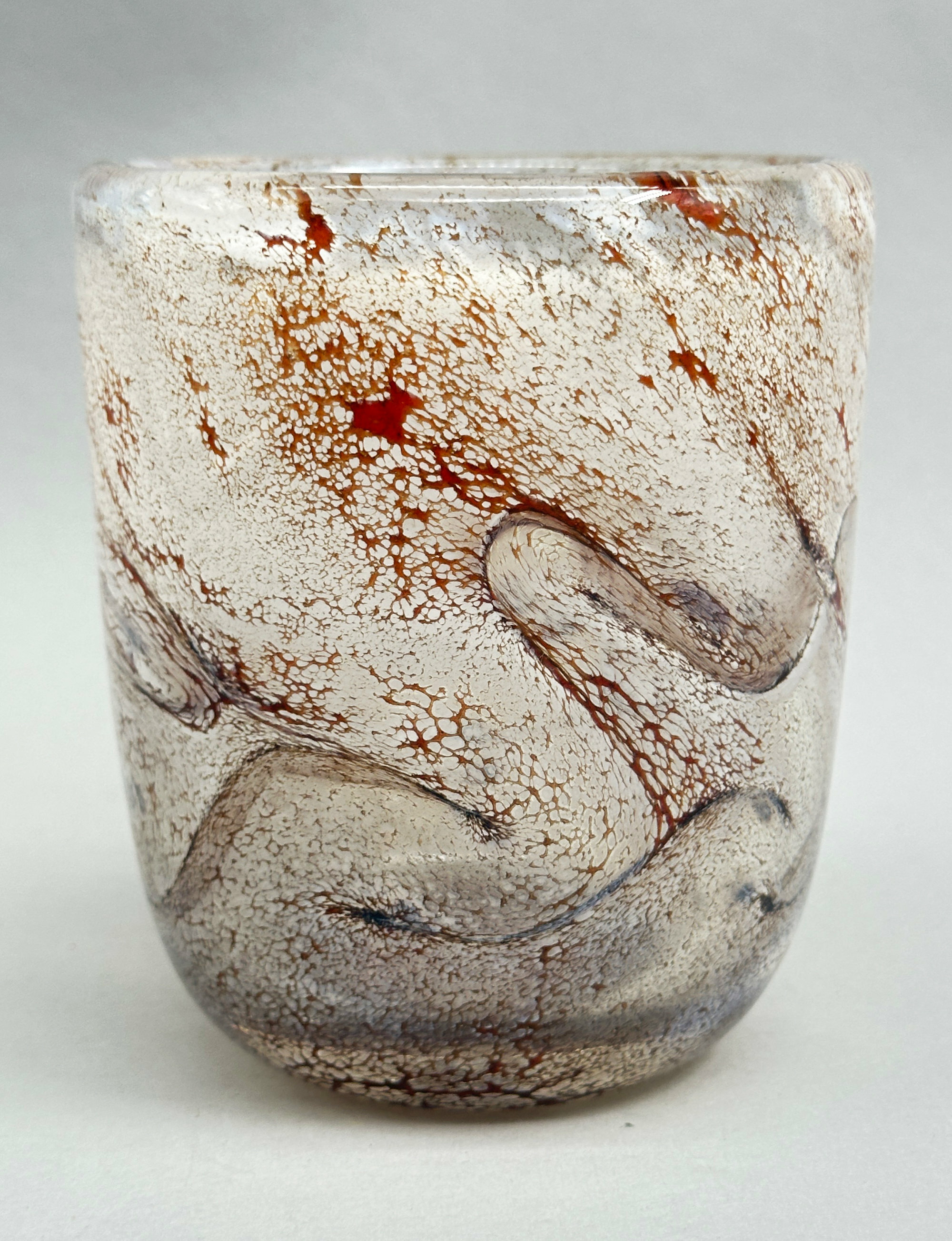
Uredale Glass Vase, late C20th/early C21st
Price: £55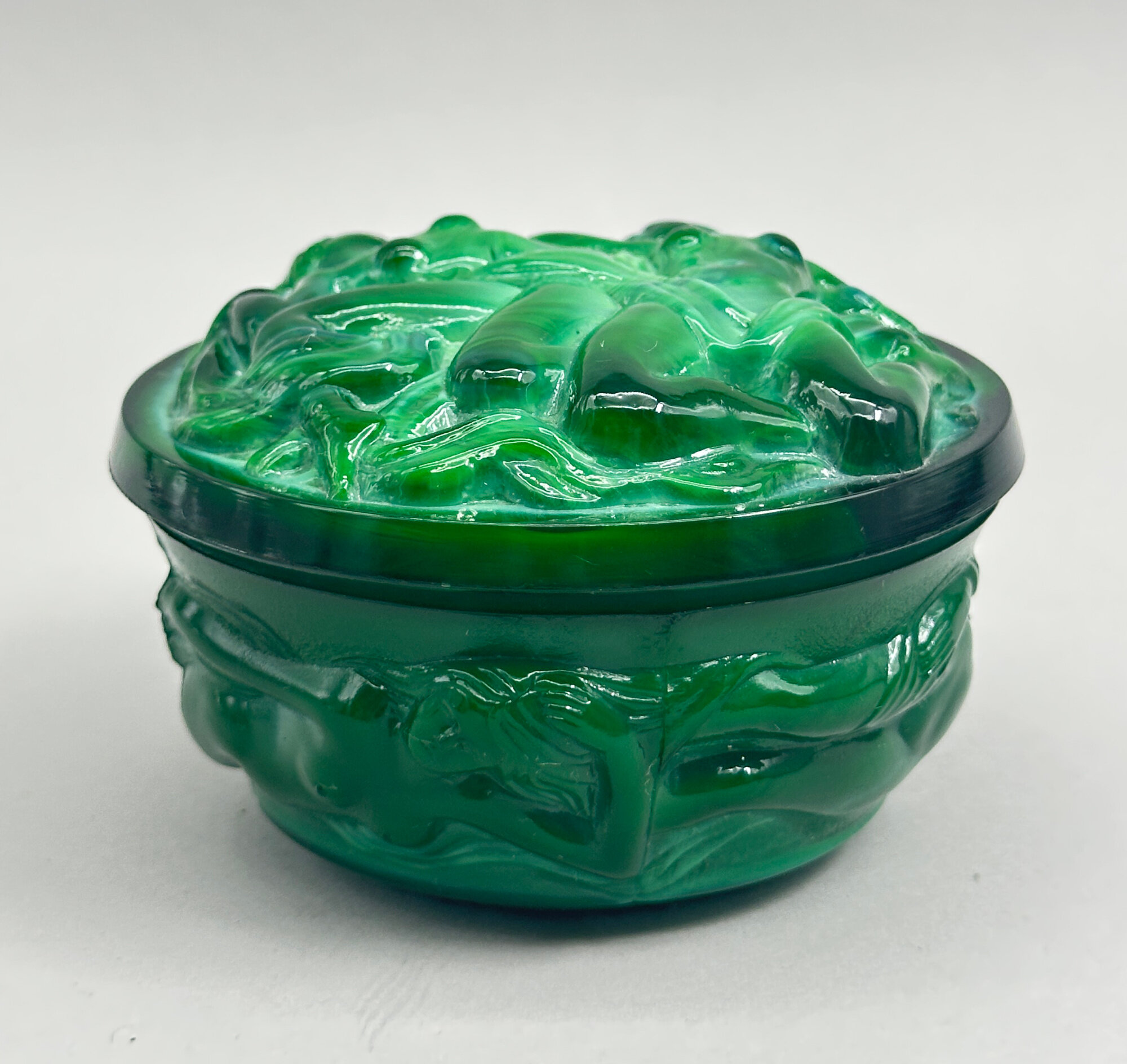
Art Deco Style Malachite Glass Box and Cover, Hoffmann & Schlevogt, C20th
Price: £55Heinrich Hoffmann (1875 – 1939) and Henry Schlevogt (1904 – 1984) were relatives as well as business partners, Schlevogt having married Hoffman’s daughter. They worked together on a variety of designs and from the moulds they produced came pieces exclusively pressed by the family glassworks of Josef Riedel established in Polaun (Polubný), Bohemia. The collection was marketed under the brand name ‘Ingrid’ and had an immediate success in Europe and the United States, being introduced at the Spring Trade Fair in Leipzig in 1934 and later in the same year presented at the Chicago World’s Fair. Hoffmann died around the time of the beginning of the second world war but Schlevogt remained in Bohemia until his capture by the invading Red Army in 1944. Eventually rescued through the intervention of influential friends, he settled in Paris and in the 1950s founded a highly successful wholesale business trading in crystals and glassware which he sold in 1972. The Czechoslovak government meanwhile nationalised the glass industry after World War II and some of Schlevogt’s moulds were reused with pressings known from the 1970s made as before at the glassworks of Josef Riedel.
Dating of the pieces is extremely difficult since the later versions resemble the earlier ones so closely and there are few firm guidelines. But the example here, even if there is the possibility that it does not date to the 1930s, is an extremely accurate reflection of the model types produced. The design is striking with the malachite effect glass formed into a two section box the deep base fitted with a shallow domed lid and both parts decorated with naked ladies swimming amidst waves in a swirling design of life and movement. The joins of the moulds can be clearly seen at the sides (see images 8 & 9). The style is quintessentially Art Deco and this is a ‘must have’ for collectors of pieces from that era.
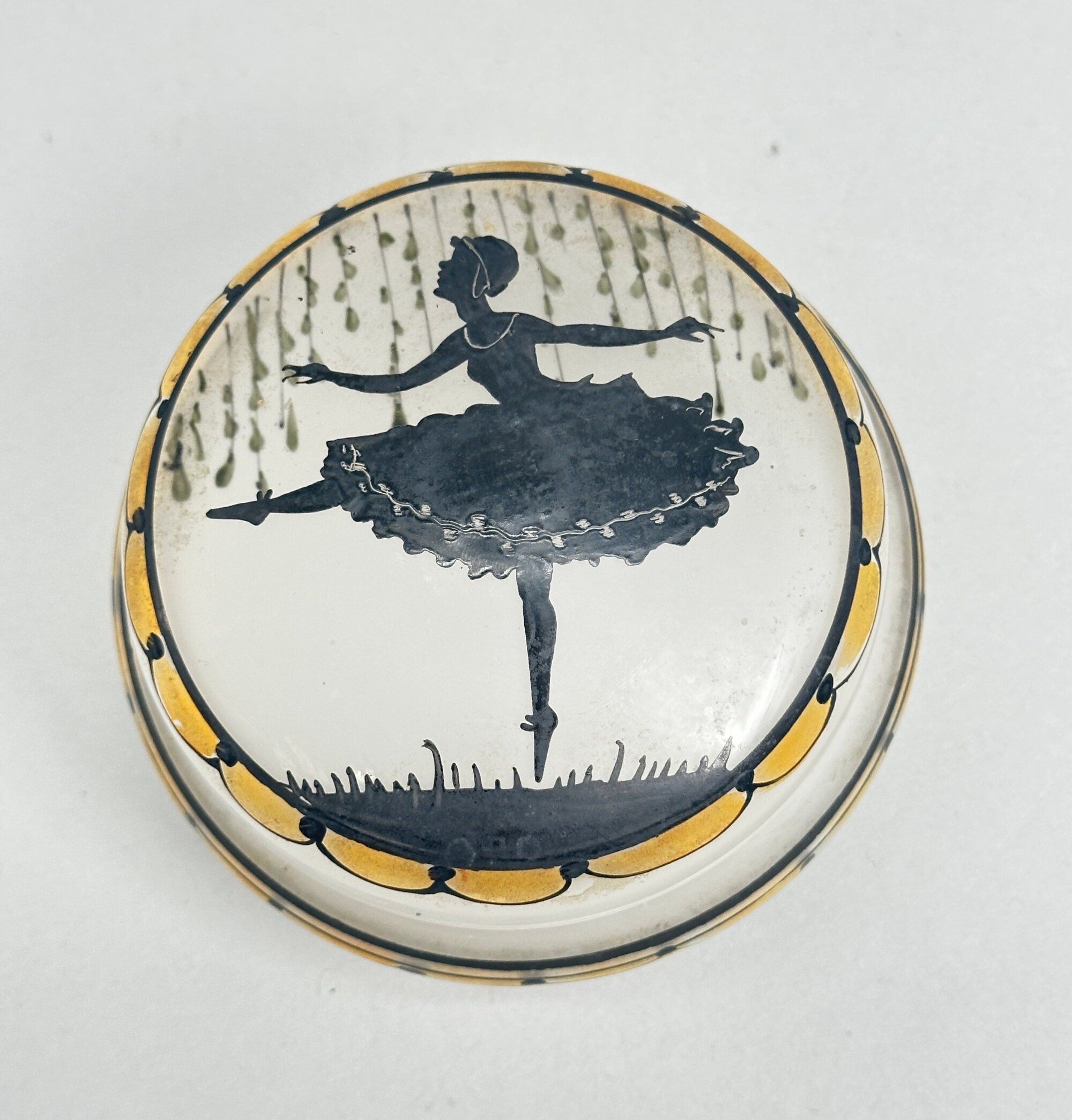
Art Deco style Glass Box and Cover decorated with a dancing Ballerina, mid C20th
Price: £35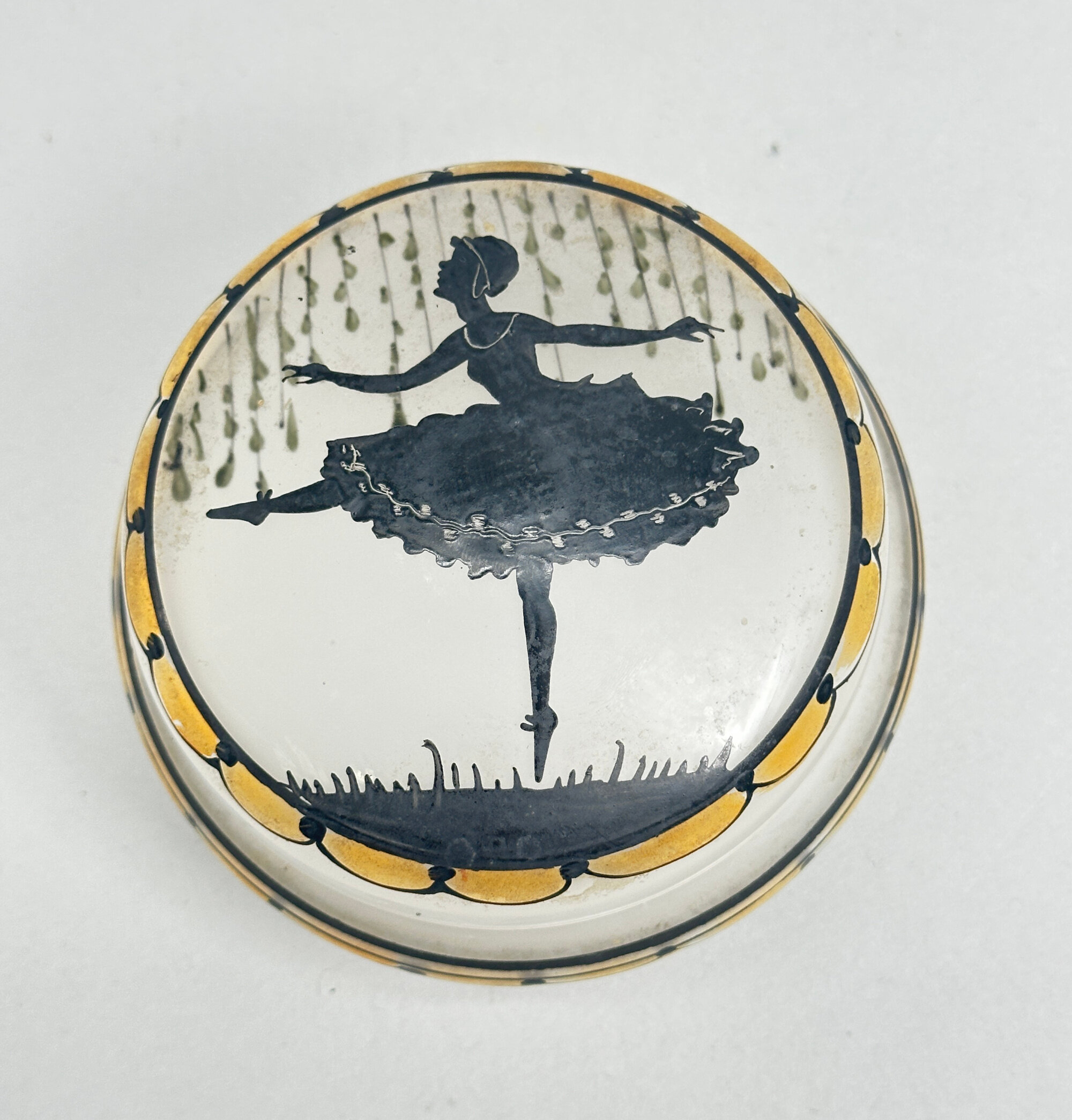
Art Deco style Glass Box and Cover decorated with a dancing Ballerina, mid C20th
Price: £35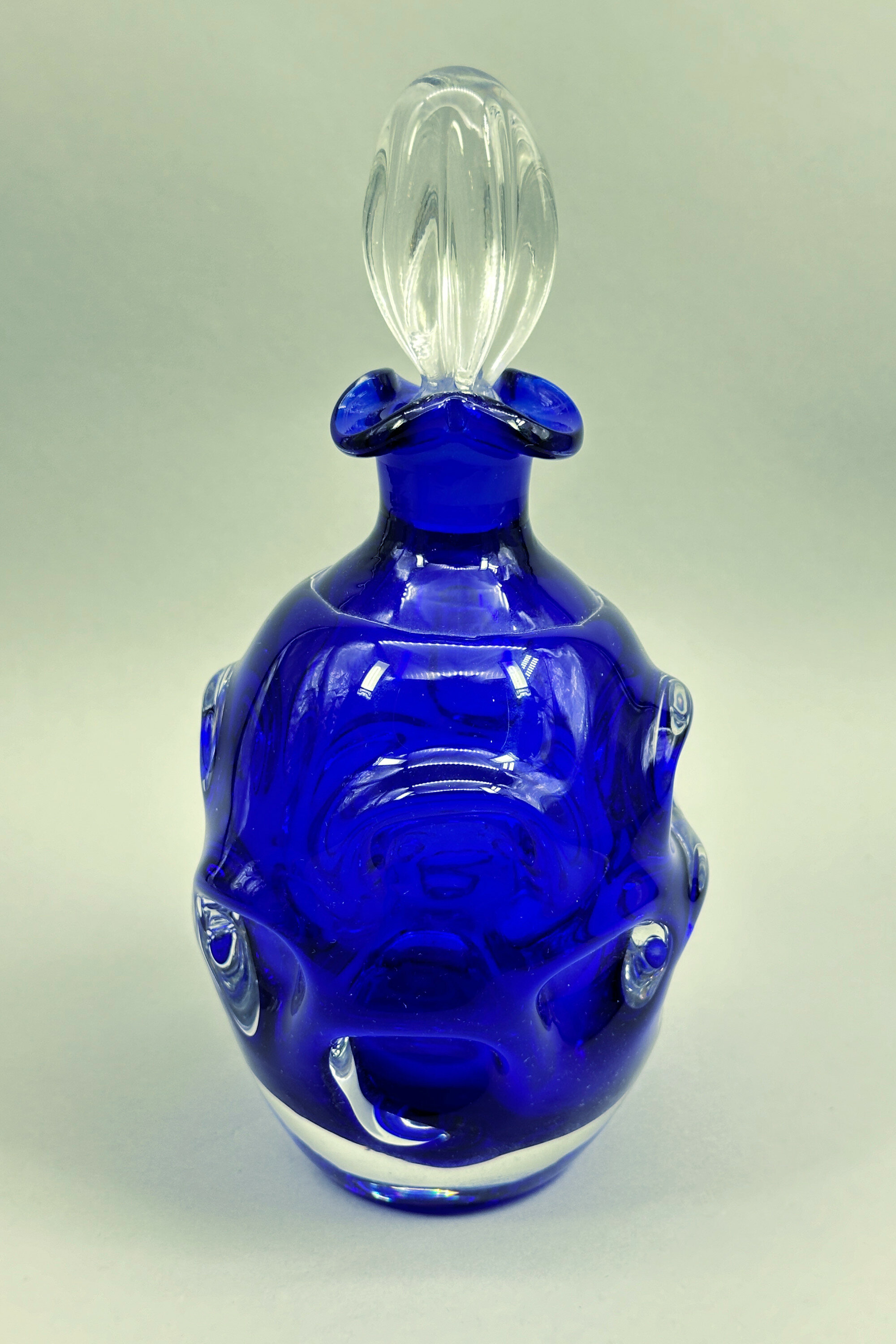
Aseda Glasbruk Blue Glass Bottle and Stopper by Bo Borgstrom, 1960s
Price: £55
Swirl design Cranberry glass Decanter and Stopper, probably Italian mid C20th
Price: £45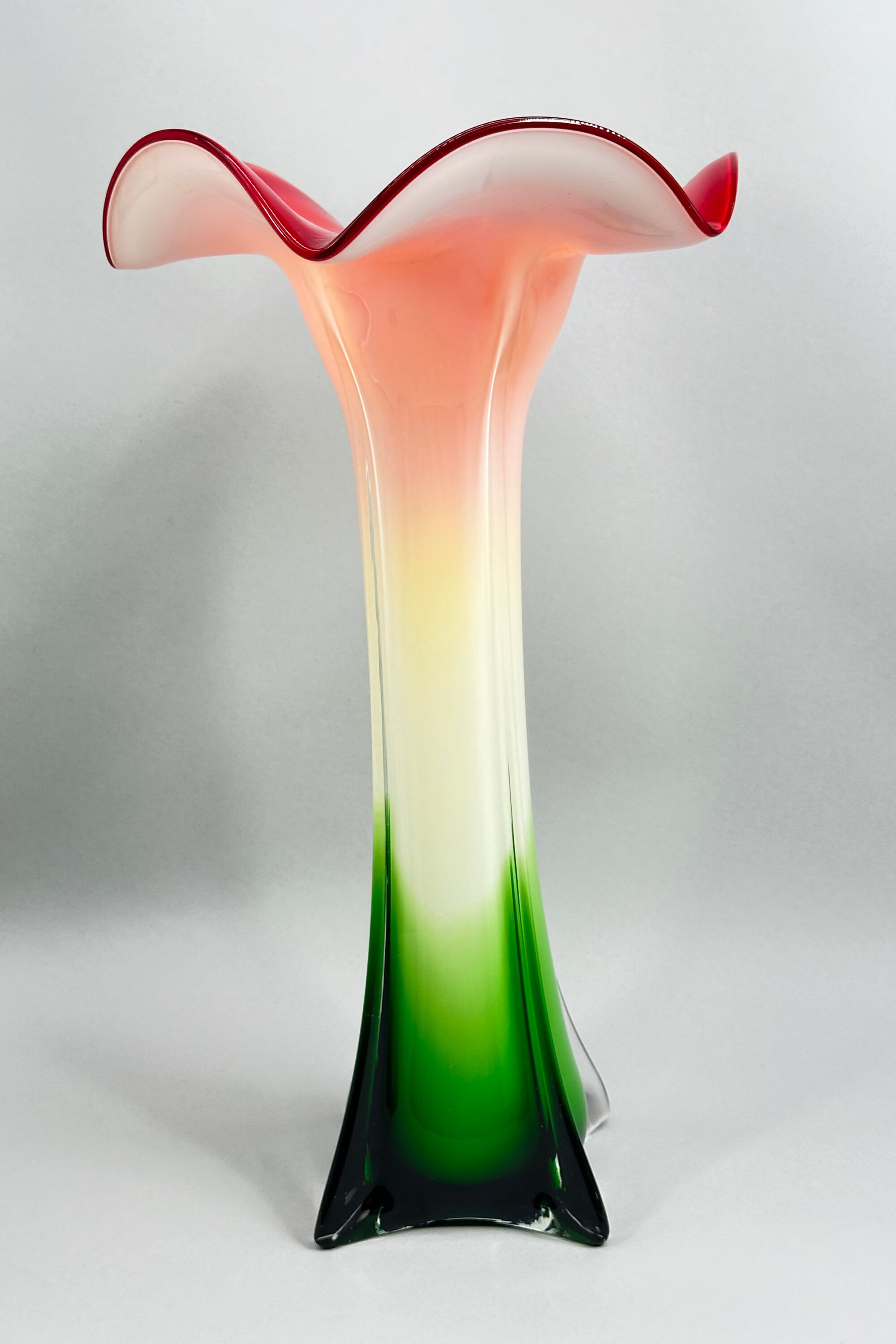
Murano Style Calla Lily Trumpet Shape Vase, second half C20th
Price: £75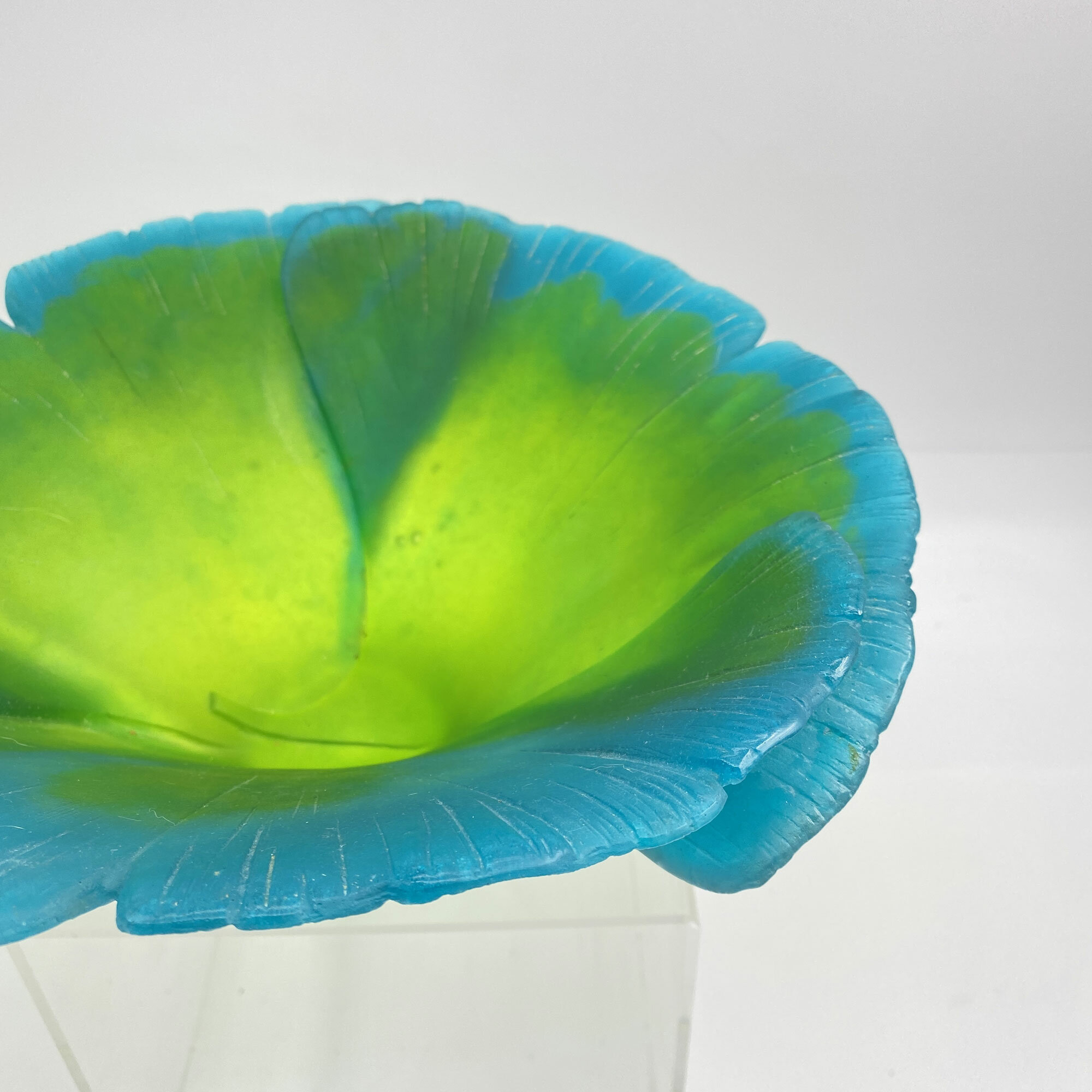
Daum pate de verre bowl, Gingko
Price: £750
Pair of Beige Opaline Glass Vases, enamelled decoration, probably French late C19th
Price: £75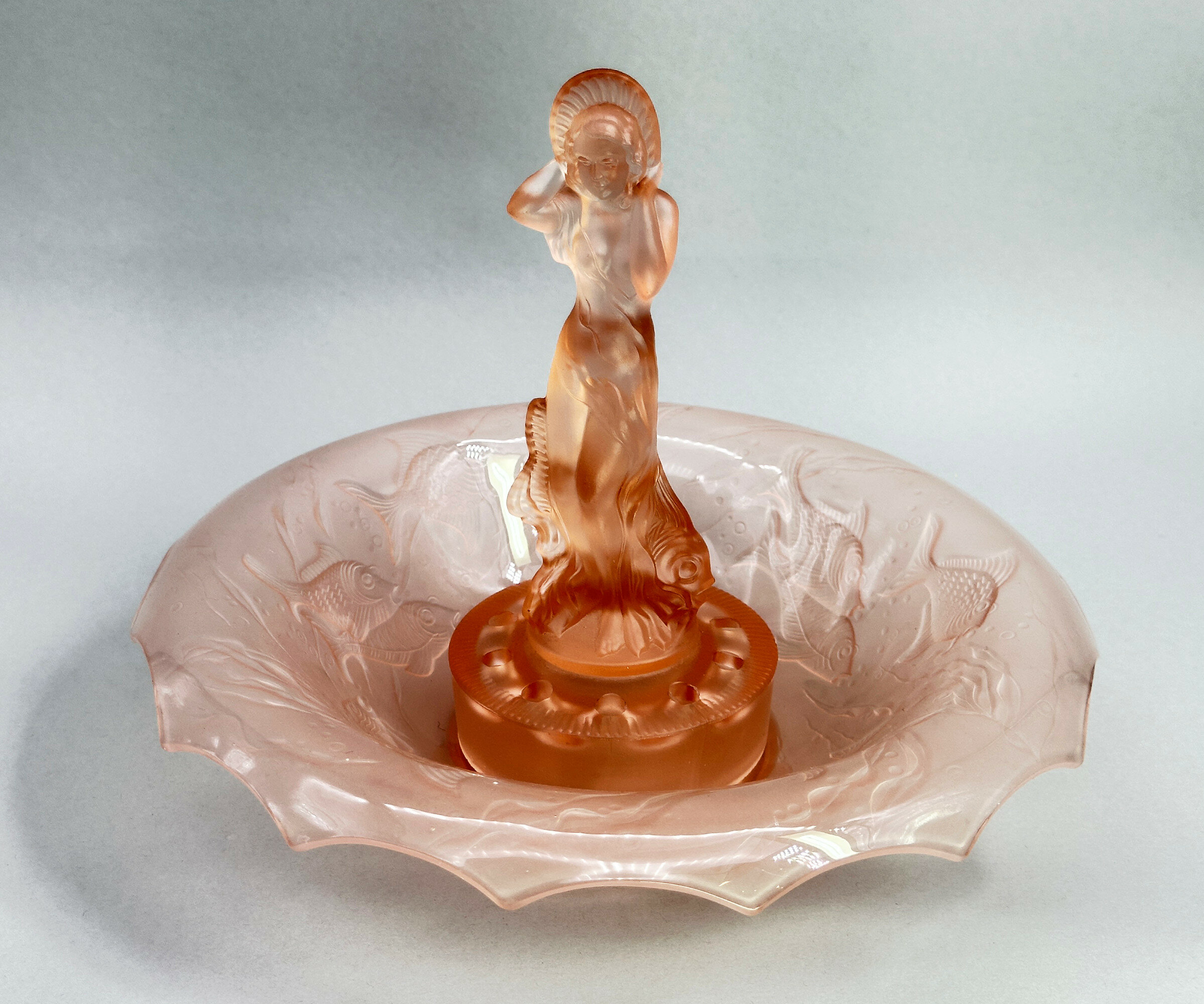
Pink Glass Centrepiece Set, Arabella, Walter and Sohne, 1930s
Price: £55The influence of Art Deco style of this piece is clear and it does indeed date to the 1930s. The model, termed ‘Arabella’ can apparently be seen in the 1934 catalogue of the German glass manufacturers Walther and Sohne, founded by August Walther in 1888 at Ottendorf-Akrilla near Dresden. In the 1930s the firm was famous for its Art Deco designs and also produced a version of ‘cloud glass’ which at one time was held to be exclusive to the English manufacturer Davidson. But some of the English glass makers also drew on their German rival’s work such that Walther and Sohne patented some of their designs in the UK in 1937, presumably to protect their work. This centrepiece set is a classic example of Walther and Sohne’s pre war productions and a distinctive example of Art Deco glassware.
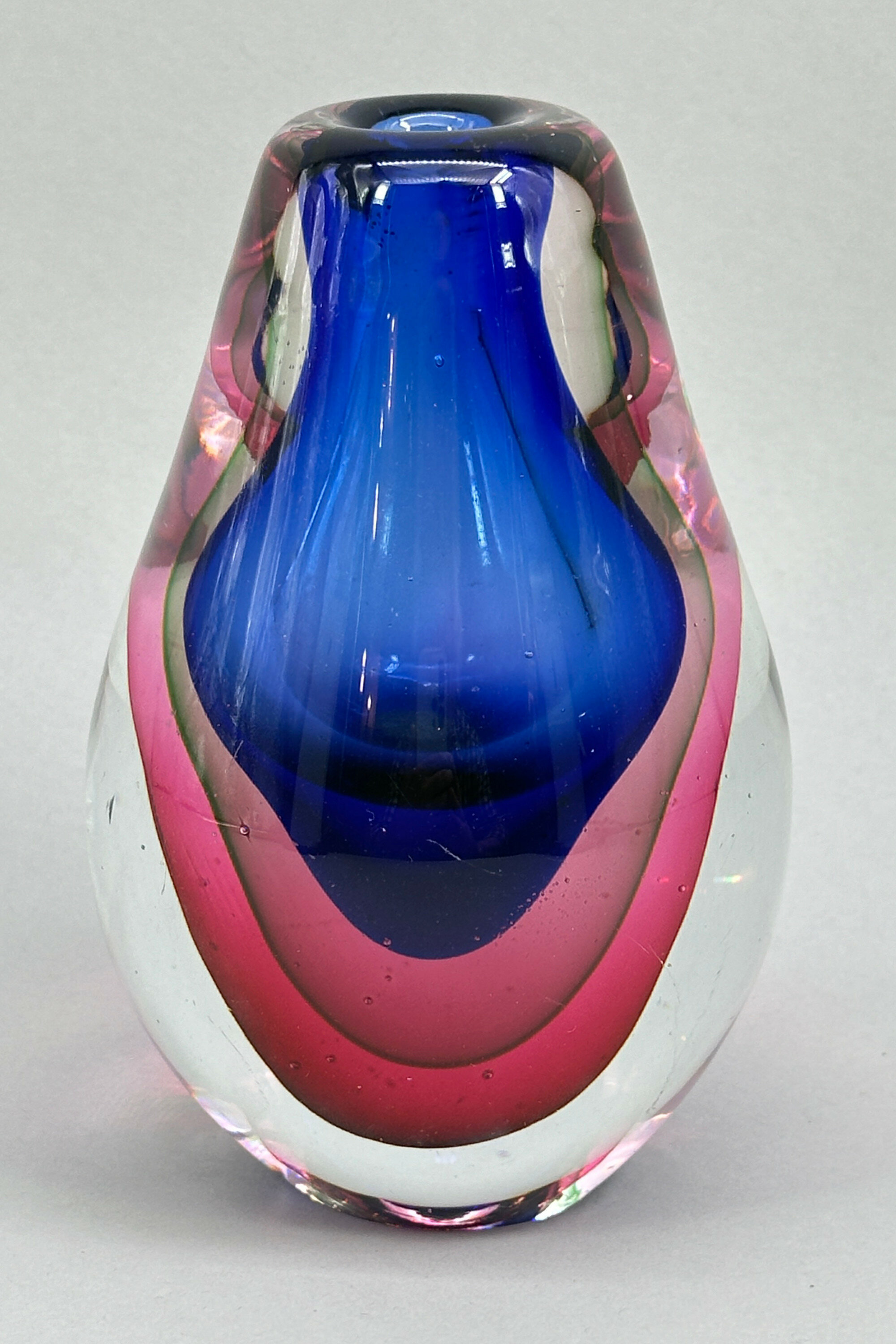
Murano glass four layer Sommerso tear drop shape Vase, 1960s
Price: £55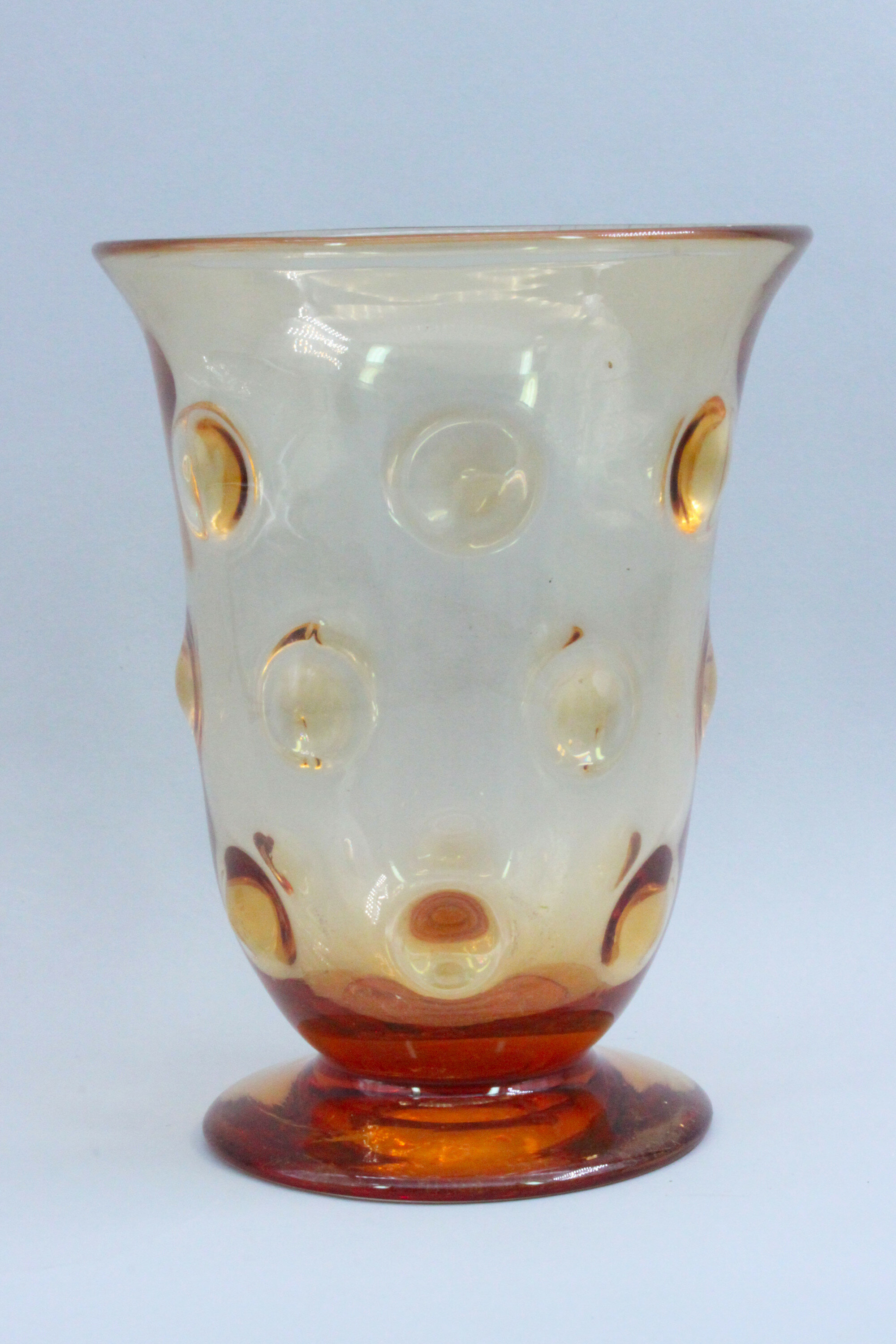
Golden Amber Webb Glass Vase, marked, 1950s
Price: £45Thomas Webb began his glass career in 1829, when he became a partner in the Wordsley Glassworks. Various career changes followed and in 1859 he was joined by his sons Thomas Wilkes Webb and Charles Webb and began trading as Thomas Webb & Sons based in Stourbridge. The firm was run by various family members until mergers started to occur in the early twentieth century and Sven Fogelberg, previously from Swedish glassworks Kosta, became manager in 1932. Production continued with more mergers in the 1960s and 1970s until the firm closed in 1990. This vase was made by Thomas Webb during the 1950s as part of their 'Gay Glass' range in a design called 'Old English Bull's Eye' and has the typical 'Webb England' mark to the base.
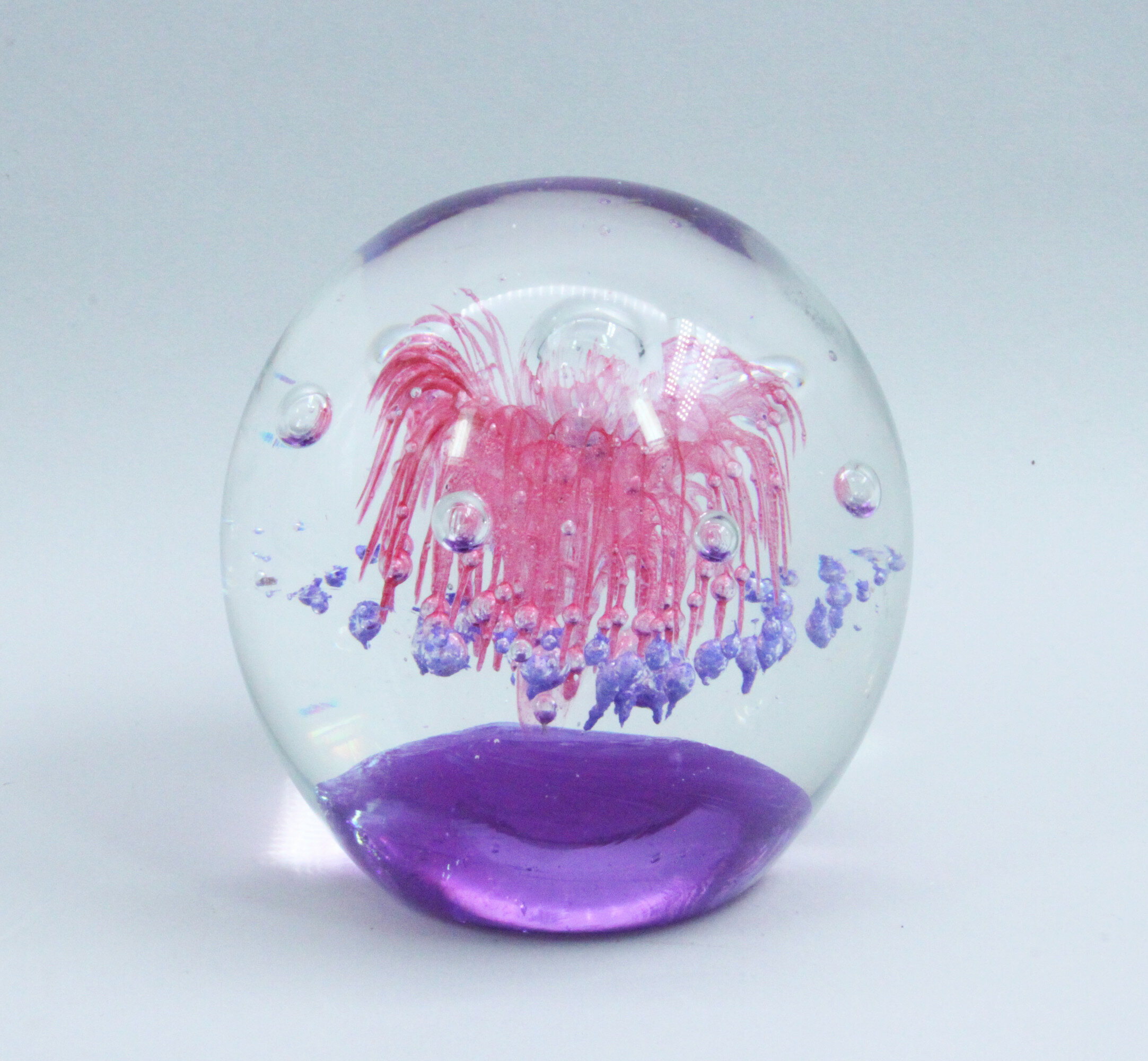
Art Glass Doorstop with Starburst and Bubble designs, perhaps British, late C20th
Price: £45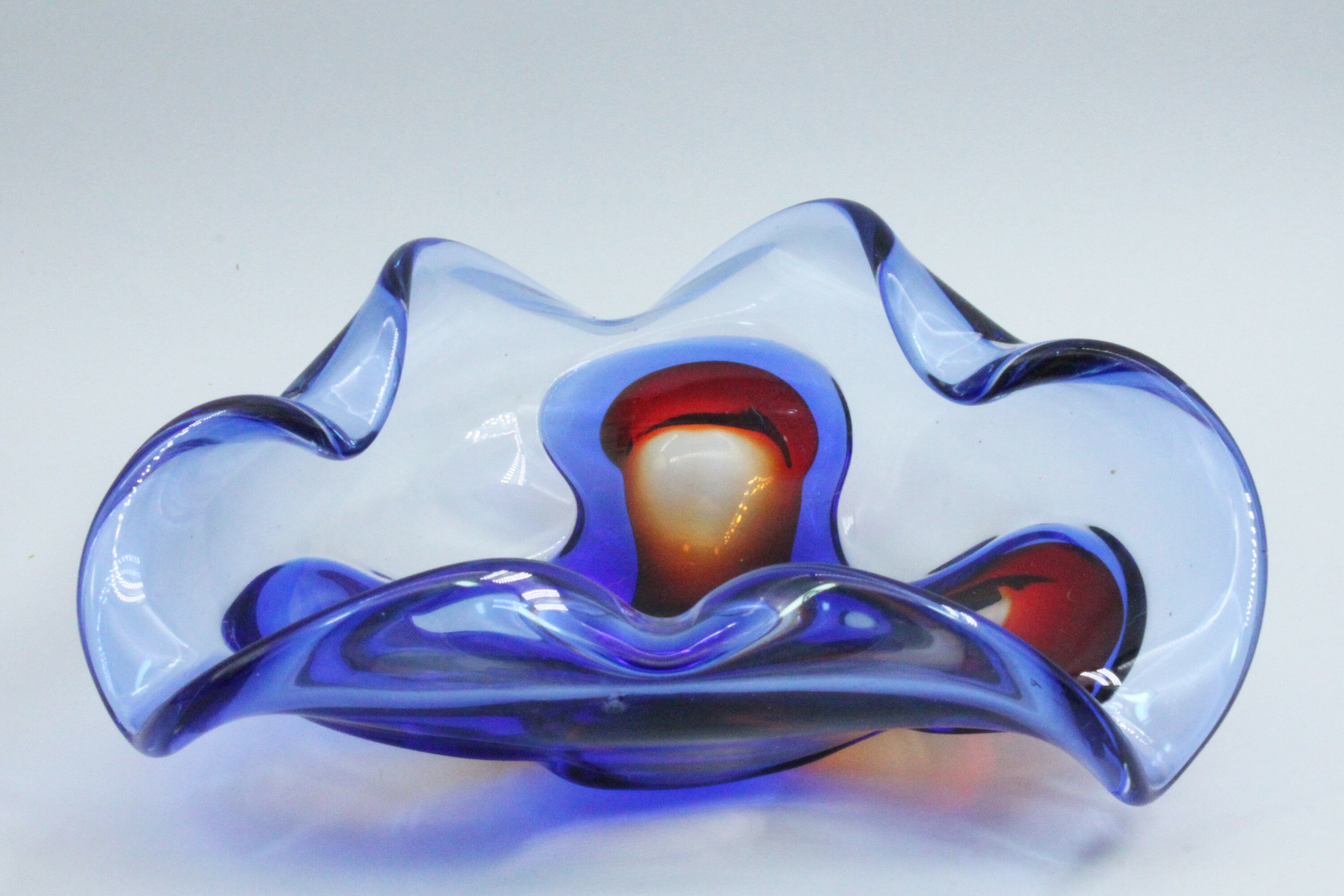
Murano Art Glass Dish, 1960s
Price: £55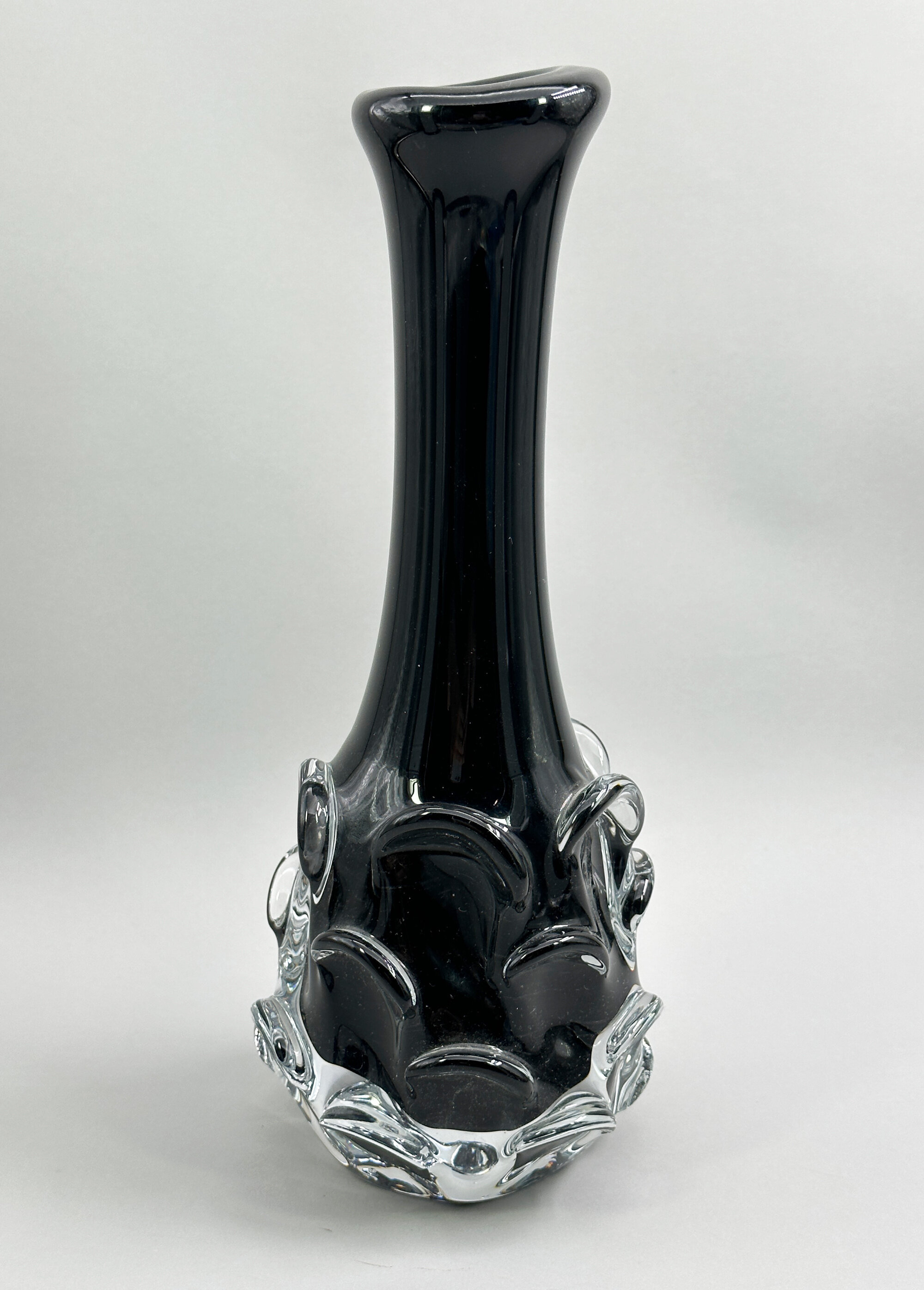
Aseda Glasbruk Art Glass Vase by Bo Borgstrom, Swedish, 1960s/1970s
Price: £75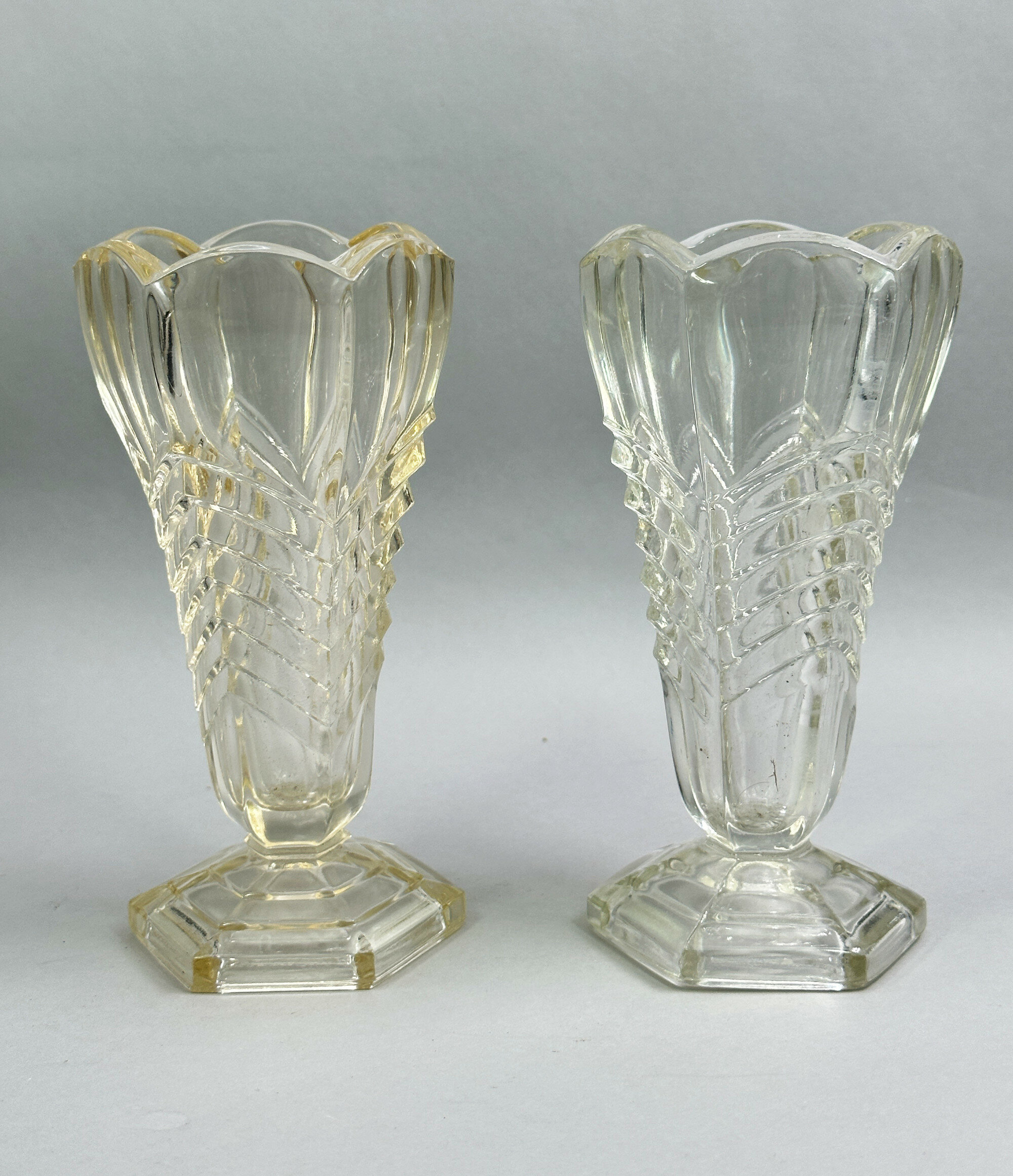
Pair of Davidson Chevron Pattern Glass Vases, 1930s
Price: £25George Davidson founded the Teams Flint Glass Works in 1867, which later became known as George Davidson & Co. In the 1880s the company began producing pressed glass tableware in a variety of shapes and by the 1920s their designs began to reflect the new Art Deco trends. The firm continued production until the 1980s, closing in 1987.
‘Pattern number 295’ was produced in a variety of colours and all the examples typify the Art Deco styles of the 1930s and can still be appreciated today.
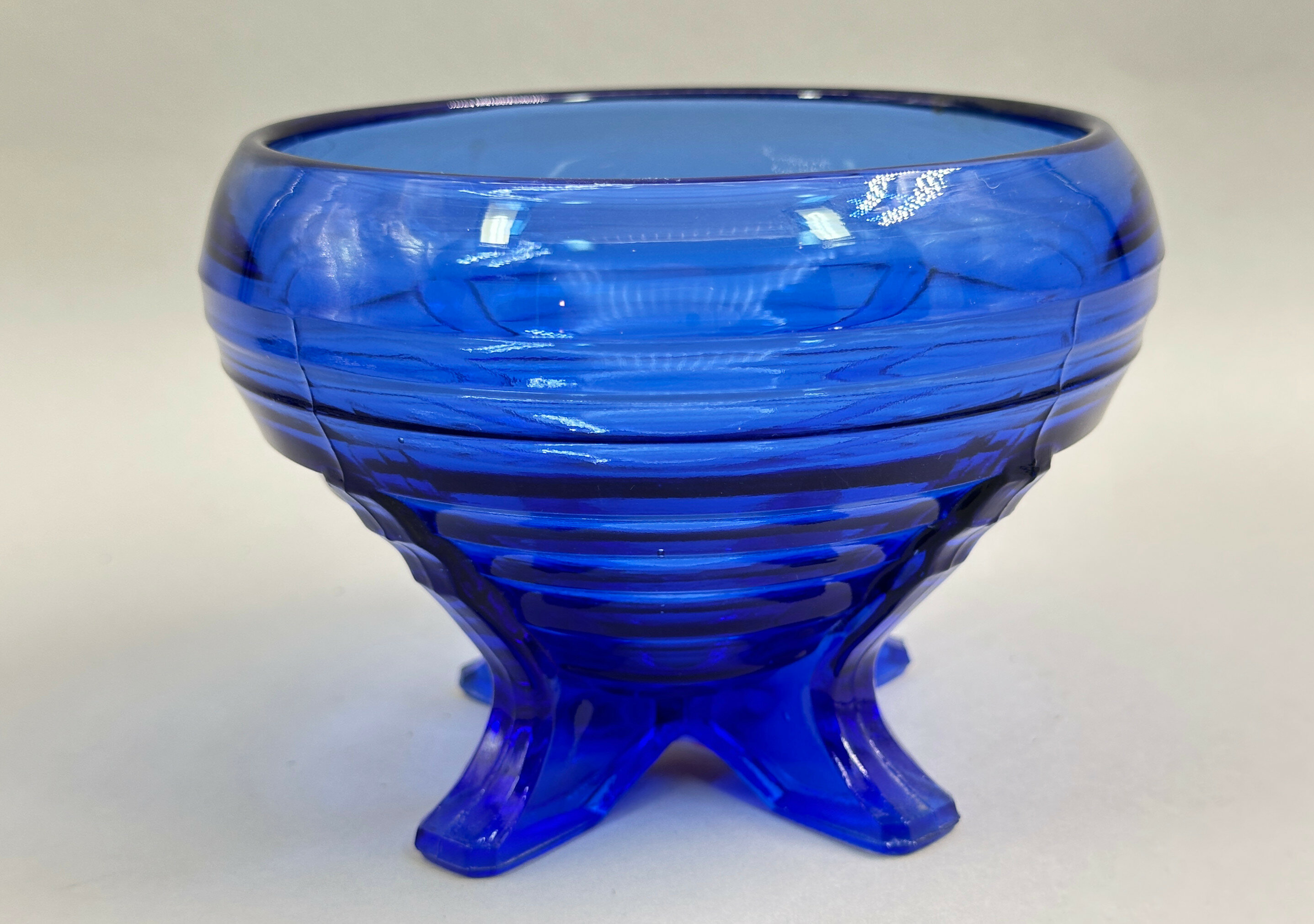
Sowerby Blue Glass Footed Bowl, 1930s/1940s
Price: £25The Sowerby family came from the North West of England near Carlisle and settled in Gateshead in the late eighteenth century. The firm Sowerby Glassworks is known from 1807 onwards and continued production until 1972, concentrating on pressed glass. Catalogues of their wares still exist and they produced pieces in a wide variety of styles and shapes which retain their popularity today.